

Berthon Winter Collection

Latest issue

August 2024
In the August 2024 issue of Yachting World magazine: News Few finish a tempestuous Round The Island Race European rules are eased for cruising to France and Greece Olympic sailing…

- Yachting World
- Digital Edition

Through the Panama Canal in a yacht
- June 30, 2022
Transiting through the Panama Canal in a yacht is a once in a lifetime experience. We get advice on planning this unique passage from skippers who’ve crossed recently

Romeo hops over the guardrail at sunset. Our young Panamanian advisor, here to guide us through the first three ascending locks of the Panama Canal, politely turns down a Coca Cola, and accepts a glass of warm water instead as we make our way through the Panama Canal in a yacht.
We hoist the anchor, and begin motoring across The Flats – a sweeping, artificial anchorage built around the industrial city of Colon, writes Max Campbell.
Never have I felt this nervous before a passage. The root of my fear is being dependent on Elixir’s little Volvo Penta engine, something I don’t fully understand. For some reason this terrifies me.
My parents have flown out especially for the passage. The Canal transit has been a ‘bucket list’ trip my stepdad has been itching to tick off. We reach the entrance to the first of the Agua Clara locks, and it’s completely dark. The monstrous chambers are lit by a line of aggressive orange lights, and for a moment I’m lost in the enormity of it all.
Our first challenge is to come up alongside a 50ft catamaran. I’ve always struggled with the prop walk on my S&S Swan 37 Elixir , and the stiff tradewind isn’t doing much to help. With another monohull on the far side, we combine our three vessels into one and move through the locks in a confusion of lines and fenders.
We enter the lock behind the rusting hulk of a car carrier – its great steel hull, only an arm’s reach from the concrete walls. As the door closes, it seems as if everything is towering above us. Three locks raise us to a dizzying height of 28m above sea level. Before we enter Gatun Lake, we bid farewell to Romeo. The night is spent secured to a big, yellow mooring buoy, surrounded by the demonic screams of howler monkeys.

Container ship for company in the Panama Canal. Photo: Max Campbell
By 0800 our new advisor, Raphael, has leapt on board and the engine won’t start. Yesterday’s solid run had shaken a few things around. Despite Raphael’s scowling from the cockpit, we find the loose grounding bolt.
Within 10 minutes we’re hurrying through the isthmus of Panama, as the morning sun casts a stain on our improvised awning. Caymans dart across the channel, and all around us lies the endless tangle of Panamanian rainforest. This is the first time I’ve been inland on Elixir, and everywhere I look are dramatic views of the surrounding landscape. Vast tracts of jungle lead to rolling curves and deep channels gouged into the countryside.
It’s mid-afternoon when we arrive at the three descending locks. Instead of forming a raft, we’re instructed to enter the lock alone. Using our four, hired mooring lines, we park Elixir under the imposing bow of a Maersk cargo carrier. Four shore-based line-handlers lead Elixir from one lock to the next. After three slow descents, the final set of gates open, and for the first time in decades, Elixir ’s hull parts the Pacific.
The Panama experience
A Panama Canal crossing is a unique and significant moment. As a piece of engineering, the canal’s ambition is unrivalled, its construction representing both a remarkable achievement and a dark period of history which saw tens of thousands of workers killed by the venomous snakes, insects, and spiders which lay lurking in the Panamese jungle, as well as rife diseases including yellow fever and malaria.

The canal was finally opened in 1914, a chain of six locks covering 45 miles of waterway connecting the Caribbean Sea with the Pacific Ocean . The scale of each lock is vast: 110ft wide and 1,050ft long, and over 41ft deep.
These dimensions defined the biggest cargo vessels on the world’s oceans – Panamax ships – for over 100 years. In 2016 a significant extension was opened, with a new set of larger locks, known as the Agua Clara/Cocoli locks, over 1,400ft long, 180ft wide, and 60ft deep. The larger capacity allowed for giant NeoPanamax ships of up to 49m beam, carrying up to 20 rows of containers.
Yachts and smaller vessels continue to use the original Gatun/Miraflores locks. However, even the relatively smaller shipping which makes up the bulk of traffic in these locks can be intimidating.
We asked skippers and rally organisers who’d recently taken yachts through the Panama Canal for advice on preparing for a smooth crossing.

‘Smaller’ Panamax shipping and yachts use the original Gatun locks. Photo: Hemis/Alamy
The process
The first decision for cruisers planning a Panama crossing will be which approach to take. It’s widely recommended to allow some time to explore a little of the ABC (Aruba, Bonaire, Curacao) islands and San Blas Islands (indigenous name Guna Yala). The Oyster World Rally fleet all opted to go via San Blas islands. Allie Smith, head of events for Oyster, reports that as the yachts declared into Panama in San Blas, it reduced the formalities when they got to Shelter Bay, Panama.
A South American mainland stopover might appeal, but Venezuela is off the list for most cruisers at the moment due to security risks, though sailing Colombia , particularly Cartegena, is a popular alternative.
Another is sailing west up the Panamanian coast to explore Bocas Del Toro. For most the timings will be driven by passage lengths in the South Pacific, particularly allowing for islands closed to visiting yachts due the pandemic, and the South Pacific cyclone season (November to April). Hence most yachts cross between January and March.

The Oyster 565 Adalia enjoying the San Blas islands prior to transiting the Panama Canal. Photo: Oyster World Rally
Nick Bubb transited the canal with his family in their Nautitech 40 in March this year. “To maximise our time in the Pacific we were keen to transit the canal by at least mid-March and were ‘on a schedule’ since leaving the Canaries at the end of November. Happily it all worked out and, after several wonderful months in the Caribbean, we had a fantastic time in Bonaire and ended up staying there an extra week to ensure we got a good weather window to head to the San Blas Islands.
“We’d considered stopping off in Cartagena, Colombia, but it was just too windy. The weather off the Peninsula De La Guajira is notoriously bad and, despite waiting for a window, we still had over 30 knots and 3-4m seas at times.
“If you were organised and prepared to potentially sail upwind a little you could head direct to Shelter Bay Marina, get measured and then pick a date (within a two month window after measurement) and head off to San Blas before returning to transit the canal on your chosen date. This would certainly help if you have friends coming out to join you.”
The next stage is getting measured, and booking a transit date. This will vary depending on the time of year you want to cross. Bubb explains: “For a regular cruising boat that’s not part of a rally, it’s not really possible to book a transit date until the boat has been measured by the canal authorities. Like most people, we arranged this in Shelter Bay Marina, which is just a few miles from the canal entrance on the Caribbean side.
“Prior to our arrival in Panama, we were in contact with our agent (Erick at Centurion) trying to arrange a measurement date, however you can’t get this until you arrive and it’s not usually possible to be measured over public holidays, or on weekends, so if you’re keen to limit your waiting time, try to avoid these! We were given a transit date 12 days after being measured, which seemed pretty typical for a fairly busy time of year. We took care to arrive just after the Oyster World Rally and the World Odyssey 500 fleets had gone through, in order to avoid additional delays.”

Skipper Nick Bubb opted to take trusted friends as line handlers. Photo: Nick Bubb
Max Campbell, who crossed slightly earlier on his Swan 37 Elixir, experienced a similar time frame. “Three days after our arrival in Shelter Bay, a member of the Canal Authority came to measure Elixir, and issue our Ship Identification Number. I requested a transit date eight days later, in order to allow the line handlers to arrive. We arrived in a particularly busy time, alongside the Oyster World Rally and the World ARC. The longest time I heard of anyone waiting was three weeks.”
It’s a different experience if crossing with a rally. Allie Smith says she booked the week-long time slot that the 23 Oysters on the World Rally would transit the canal some 20 months in advance, and has already booked the crossing for the 2024 rally, although even for a large group of yachts precise dates and timings won’t be confirmed until the last minute. Yachts that had arrived in Shelter Bay before the Oyster fleet had a two- to three-week wait for their transit.
The measurement process involves the yacht being physically measured to include davits etc. For yachts around 65ft LOA any additional length can nudge you up a price bracket, increasing the costs considerably. “We had more boats in the bigger category than we expected, even after we’d sent in all the measurements of the boats,” explains Allie Smith. The measurer may also check mooring lines, holding tank facilities, and ask about engine speed and manoeuvrability.
Agents and advisors
For yachts not crossing as part of a rally, most owners pay for an agent to smooth the process. Bubb explains: “We’d recommend using an agent, especially in this Covid era, we didn’t meet many boats who hadn’t. Agent fees are $350 and made life a lot easier. They arranged all our paperwork and measurement certificates, plus booked the transit and generally saved a lot of faff and stress! The rules and regs seem to be always changing, so it can be a bit of a minefield. Erick also arranged things like fumigation, which is a requirement prior to departure for the Galapagos, along with the immigration and customs formalities.”

Heavy duty tyre fenders can be rented. Photo: Behan Gifford
Max Campbell also recommends taking an agent. “You can save yourself $200-300 by doing the work yourself, but personally I feel it’s well worth it. If you join the Panama Cruisers, you receive a discount for the transit, which is worth more than the price of joining, making you a saving!
There are also security risks to not taking an agent, Campbell explains: “With an agent, you can pay for the whole lot (canal fee, cruising permit, lines and fenders) with a bank transfer. They also usually cover the buffer fee, which is a deposit of $1,000 that is returned after the transit. If you don’t use an agent, it’s only possible to pay for your transit directly to the Canal Authority in the city of Colon.
“The Canal authority requires payment in cash, and the nearest cash machine is a few blocks away, in the middle of a city not known for its security.”
While an agent is optional, taking a canal advisor is not. An ACP Canal Advisor will be on board throughout the transit, usually a different one on each day. Advisors instruct skippers on how to navigate the locks, but skippers remain in charge of their own vessels. The advisors have thorough knowledge of the unusual currents in the canal, and may give instructions that seem counter-intuitive. They may also have varying experience of yacht handling.

Rafting overnight in Lake Gatun (don’t be tempted to swim, there are crocodiles!) Photo: Oyster World Rally
Bubb reports: “It’s important to remember that you have canal advisors on board, not pilots. They don’t take on any actual responsibility, don’t know how your boat will respond when manoeuvring, and we found they often went missing at key times. You are the skipper and you need to remember that.”
Yachts over 65ft have to pay a higher rate for what is referred to as a ‘pilot’ rather than an advisor, though this only demarks seniority, not a change of role. “There’s no difference at all apart from the fact that the pilot is automatically in charge, for example, if one of the rafts has two boats with advisors and one boat with the pilot. But they do exactly the same job,” explains Smith.
Article continues below…
In addition, each boat is required to have four line handlers (who must be over 16). It’s possible to recruit paid handlers via an agent, or find volunteers among other yacht crew in Shelter Bay wanting to gain experience before making their own transit. But there are advantages to taking known and trusted crew if possible.
Nick Bubb explains: “We opted to take three friends with us. A lot of people advise paying experienced locals to join you but I felt having strong guys who spoke perfect English was probably more useful. There are so many videos online that even if you haven’t been through before, you can really build up a lot of knowledge before you do it for real!”
You must have four lock lines (minimum 125ft long), plus springs for rafting, and plenty of robust fenders: usually a combination of the boat’s own fenders and rented black plastic-wrapped car tyres. Decks should be kept as clear as possible, and it’s advisable to cover solar panels with plywood or seat cushions to protect from the monkey fist knots on the end of lines thrown by the shore handlers. Allie Smith noted that some yachts experienced water coming up through hull seacocks, such as fridge drains, due to the water pressure as the locks fill.

Nick Bubb and family made a successful transit of the Panama Canal on their Nautitech 40 Quickstep Two. Photo: Nick Bubb
There are a number of scenarios for transiting the canal, including being a raft of up to three yachts abreast in the middle of the channel (known as centre chamber lockage); rafting onto a tug boat or small commercial vessel, such as a tourist boat; or tying onto the lock walls (the least preferable due to the risk of rig damage). Line handlers on the outside vessels manage the lines ashore.
If in a raft alongside other yachts the advisor on board the centre yacht will take the lead control. Nick Bubb explains: “The biggest boat by combination of length and horsepower will go in the middle of your raft, assuming you end up in the typical three-boat raft.
“A catamaran (assuming two engines) is very easy to manoeuvre under engine, but you’re slightly at the mercy of the central boat in the raft and really only there to help keep it straight.”
Bubb advises: “It’s definitely worth having a good chat to the other skippers in your raft as soon as you can, so you build up a good rapport. With a bit of insider knowledge from your agent, you might be able to figure out who you’re going to raft with the day before, so this makes things a bit easier.

Panama Canal at night. Photo: Max Campbell
He adds: “The load on your mooring cleats can be enormous so make sure they are in good shape with big backing plates etc. As we left the last Gatun lock, the ship ahead of us (they go ahead on the way up and behind on the way down) went full throttle and with the ensuing turbulence, we got thrown about all over the place. At one point all three boats were hanging off our stern cleat and the loads were huge.”
Allie Smith also recommends getting to know who you’ll be rafting with. As all the crew on the Oyster World Rally were known to each other, they rearranged boats and crew where necessary to ensure yachts with the most confident skippers were in the centre of the raft, while the most experienced line handlers replaced less experienced guests on the outside boats. “The boat in the middle has four spare crew that weren’t needed to do the lines, so we swapped them in and out so that we had people who knew what to do on the lines because, believe me, the pressure on the lines at some point will be pretty huge.”

Rafting up in the Panama Canal. Photo: Behan Gifford
Otherwise, Bubb’s main advice is to be thoroughly prepared. “Getting everything possible sorted in advance is a bonus. Aside from what’s going on with the boat, having lots of snacks and drinks is useful, with the extra line handlers, just feeding everyone is a full-on job! There is really good provisioning in Colon – Shelter Bay Marina offers a free shuttle bus into town and if you spend over $600 in the supermarket they give you a free ride back to the marina. Having all our supplies sorted prior to transiting minimised our time around Panama City.”
Overall, Bubb says, “it was fairly straightforward, super-interesting and quite a lot of fun! It was also a lot easier than sailing around Cape Horn!”
Panama Canal in a yacht costs
Fees for smaller vessels transiting the canal were raised in January 2020, meaning that post-pandemic costs for yachts which have delayed their entry to the South Pacific can be double those who crossed before 2020.
There is a jump in costs for yachts over 65ft, with the transit toll increasing from $1,600 to $2,400.
For yachts under 65ft which crossed in 2022 total costs were around $2,500.
Typical costs included: Canal Transit fee $1,600 Transit inspection $75 Transit Security fee $165 Canal EDCS (Electronic Data Collection System, transit booking form) $75 Agent fees $200-$350 Fenders & line rental $75-$200 Line handlers (if required) $100 each Cruising permit $235 Marina fees $300 Bank charges $60
If you enjoyed this….
Yachting World is the world’s leading magazine for bluewater cruisers and offshore sailors. Every month we have inspirational adventures and practical features to help you realise your sailing dreams. Build your knowledge with a subscription delivered to your door. See our latest offers and save at least 30% off the cover price.

Through the Panama Canal in your yacht: everything you need to know
(this post is an excerpt from an online article. to read the entire article, click on the link at the bottom of the page).
Cape Horn sailors and ditch diggers sacrificed all to make the path between the Atlantic and Pacific easier for the rest of us. It is a surreal situation to find yourself floating in a small yacht alongside a giant ship in a box of water 25m above sea level. Entering the canal was thrilling, stressful, and awkward. Descending the last lock was euphoric. The Panama Canal is a gem to treasure.
Considering the alternative routes, the canal is a blink between oceans. Yet a smooth transit benefits from advance planning. Our research began about three months in advance after we learned how seasonal congestion can increase the waiting time from arrival in Colón to an assigned transit date. Most of the year, four to six days is typical. During the high season from late January through May, six to 20 days is the range from completion of measurement and fee payment until an assigned canal transit date. For South Pacific-bound boats, December until mid-January is a sweet spot for minimal delay.
The slowdown escalates with the arrival of the World ARC rally. Having waved the fleet off in Colombia we decided to spend a few weeks of leisurely sailing through the turquoise waters of Panama’s Guna Yala instead of adding to the spike in transiting vessels. Hiring an agent was our answer to first staying in tune with the length of the delay, then having an advocate who could help us find a slot to get through sooner during the peak-season waiting period.
How to transit the Panama Canal in your yacht – preparation, costs, top tips and more from Behan Gifford for a smooth crossing from the Atlantic to the Pacific Ocean
We arrived in Colón, Panama, followed by blustery tradewinds and rolling seas that finally abated behind the canal zone’s massive breakwater. Mooring options are few on the Caribbean side of the canal: there are a couple of designated areas for anchoring among the commercial stacks and cargo ships, but they come with security risks and limited options for going ashore. Boats waiting longer than a few days often sail either to nearby Portobelo or further afield to the Guna Yala (San Blas islands) or Bocas del Toro. The lone mooring option on the Caribbean side is Shelter Bay Marina, where we berthed our Stevens 47 Totem to await transit. Step one: Get your boat measured
Our agent, Erick Galvez with Centenario, met us shortly after we tied up in Shelter Bay to confirm the process. A friendly face at the dock and perfect English softened the news of delays. You have to go through measurement and payment first before entering the ACP system to get a transit date assigned – a transit date cannot be reserved in advance.
Galvez accepted our payment and scheduled an Admeasurer (measurements for transit are only done by an official representative of the Panama Canal Authority, or ACP) for the next day. If you choose to do paperwork yourself, it’s a call to the Admeasurer’s office (English is spoken by all canal officials) to arrange a time and location for your boat’s measurement.
Our assigned transit date meant two weeks in the marina, but Erick’s efforts sourced multiple opportunities for earlier slots. In the end doing rigging jobs for Pacific-bound vessels sweetened the deal of a longer stay.

Read the entire story on Yachting World
Share This Story, Choose Your Platform!
Discover Yacht & Travel Insurance with Topsail Insurance

For many sailing enthusiasts, it is the dream of the long days away on the peaceful seas that they look forward to, out on the water and sail with just the elements and the company of trusted family and friends.
Let us help with giving you peace of mind either with either cover for your boat or a bespoke travel policies for medical emergencies if you’re long distance sailing or crewing.
Don’t take out word for it – see what our customers think of Topsail.
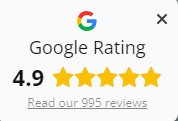
We proudly present the result of 30 years of experience in wind generators development by German engineers: the new SilentShark wind generators.
Built with the latest safety and stabilization features like our patented storm brakes, carbon-GRP rotor blades tested for hurricane forces, a double-bearing generator shaft for even smoother running and the eponymous fin for best stabilization to deliver reliable charging performance in all conditions.
Available in two power classes with 450 and 600 watts.
Global door-to-door delivery is available and a 10% discount when ordering for members of national blue water sailing associations!
Check out further details on our website www.sprecowindgenerators.com
Navigate To Country
Navigate to cruising resource, navigate noonsite.
- Latest News
- Latest Reports
- Latest Security Reports
- Useful Resources
- Noonsite Library
- Become a Member
- Membership FAQ's
- Newsletter Signup
- Newsletter Archives
Panama: Noonsite’s Panama Canal Transit Guide

Official Noonsite Guide to transiting the Panama Canal by pleasure yacht. Here we outline the procedures for a handline transit of the Panama Canal. Find out what to expect, the paperwork required and how to transit with or without an agent, the equipment and time you will need and most importantly the costs.
Published 2 years ago, updated 2 months ago

UPDATE JUNE 2024: The Panama Canal is slowly returning to normal operations after over a year of restrictions due to a severe drought, with the Canal Authority announcing an increase in the number of daily transits. See News for more details .
Small craft vessels up to 38.1 meters (125 feet) in length overall normally transit the Canal as handlines (they do not use locomotives in the locks). Handlines under 20 meters (65 feet) will normally transit the Canal with a transit advisor; while handlines of 20 meters (65 feet) or more will normally require a pilot. See the official Procedures For Securing a Handline Transit document for more detail.
GENERAL PROCEDURES (details below)
1) Clear into the country of Panama ( see Formalities ).
2) Obtain an agent or make your own arrangements. See agent information at the bottom of these guidelines and a list of Clearance Agents in Panama Formalities.
3) Access the Panama Canal online registration system ASEM (Small Craft Service Management). This is compulsory and the only way to request a virtual inspection and pay. Submit your information at least 96 hours in advance of arrival in Canal waters. Pre-approval will be sent back by e-mail.
4) Call Cristobal Signal on VHF Channel 12 on arrival in Canal waters to record arrival time.
5) Contact scheduling department to see if papers generated (may take 24 hrs) and obtain transit schedule.
6) Arrange line handlers (need 4 + Captain).
7) Check or rent your equipment.
8) Collect your Transit Adviser.
9) Transit.
10) Collection of equipment.
Advance Notification and Admeasure Procedure:
The Panama Canal Authority requires 96 hours advance notification of arrival for vessels wishing to transit.
This is done by visiting the new ASEM Small Craft Management portal [ https://asem.pancanal.com/ ] which allows skippers to create a profile for their vessel and then provide all the required information for a transit in a virtual environment, doing away for the need for the previous physical measurement and inspection. Use of the online portal is mandatory.
You (or your agent) will need to upload various photos of the boat to demonstrate main measurements and projecting deck equipment, and dimensions will also need to be included. The normal questionnaire asking for arrival date, characteristics, last ten ports, crew details, etc. is also on the portal. Fees are payable through ASEM, by Credit Card or Bank Transfer, the system will give you the two options.
A pre-approval email will be sent to the customer once compiled. If you don’t get a reply of pre-approval from ASEM within 24 hrs, call the admeasurement office.
Southbound – Cristobal: [email protected] (507) 443-2298
Northbound – Balboa: [email protected] (507) 272-4571
On Arrival Pre-Transit:
Contact Cristobal Signal on VHF Channel 12 to get an arrival time on the canal system.
Inspection papers will be generated and will be received at the Canal Port Captain office for a final approval prior sending to the scheduling department.
Check the following day by calling the scheduling office to see if the papers are with the scheduler and request a transit date available on the queue. This may take up to 24 hours after your arrival.
When the inspection is complete you will receive your Panama Canal Ship Identification Number (SIN) which is good for the life of the vessel and an Admeasurement Clearance and Handline Inspection form, which is good for up to six months.
Fees are payable online through ASEM, by Credit Card or Bank Transfer, the system will give you the two options.
Payment will incur a 12.87 % charge by the canal authorities to users.
On July 12th, 2022, following the recommendation from the Panama Canal Authority (ACP) , the Cabinet Council of the Republic of Panama officially approved modifications to the Canal Tolls structure. Since 1 January 2023 there will be an increase in tolls for each of the next three years for yachts transiting the canal. See details below:
- Less than 19.812m (65ft): $1,760
- 19.812m-24.384m (65-80ft): $2,640
- 24.384m-30.480m (80-100ft): $3,850
- More than 30.480m (100ft): $5,000
- Less than 19.812m (65ft): $1,935
- 19.812m-24.384m (65-80ft): $2,905
- 24.384m-30.480m (80-100ft): $4,235
- More than 30.480m (100ft): $5,500
- Less than 19.812m (65ft): $2,130
- 19.812m-24.384m (65-80ft): $3,200
- 24.384m-30.480m (80-100ft): $4,660
- More than 30.480m (100ft): $6,000
TVI inspection charge:
All vessels $75 (this increased from $54 in April 2021)
Security charge:
All vessels $165 (this increased from $130 in April 2021)
Buffer/Security Deposit:
All vessels $1,060 (this increased from $891 in April 2023)
Additional costs:
- Approx $100 for the rental of lines and fenders/tyres.
- Adviser’s meal including delivery by launch – meal box $75 and launch service $182 per hour.
- Food and drink costs for the transit crew.
- Transport costs for volunteer line handlers.
- Launch service (for example to bring out a late line handler): $182 per hour.
- Agent (optional) $400-$500 for an agent (plus $100 each for “professional” line handlers). Note no buffer deposit is required.
Additional costs for larger yachts:
- Vessels over 20 meter (65 feet) in LOA must have an AIS, otherwise, the Panama Canal Authority will provide a portable unit and a rental fee of $161 will be assessed.
- Vessels over 125 feet LOA will be subject to a Freshwater Surcharge which will include the following components: a fixed fee of $10,000 per transit and a variable fee ranging from a minimum of one percent to a maximum of 10 percent of the vessel’s toll will be applied depending on Gatun Lake levels at the time of transit (i.e. if the lake has a higher level, the percentage will be lower and vice versa). Also there are Disruption Charges , Suitable Conditions Charges and Green Vessel Classification Charges .
Extra charges or fines: These can sometimes be incurred during transit, especially if you find yourselves with problems such as engine failure etc. Some examples include:
- US$440 Delay of Transit for not maintaining your nominated boat speed, such as during a breakdown, or for requesting a stop-over in the lake.
- You can pay US$2800 to request a next-day transit
- Note: In the event of having a transit delay or breakdown and requiring shore assistance in canal waters, a registered agent must be contacted to assist with solving the problem and re-scheduling to continue the transit.
The ACP will return your buffer into the appointed bank account. This can happen in a week but might take longer.
Schedule Procedure:
Southbound transits (Cristobal – Balboa): Normally start late afternoon, anchoring in Gatun Lake for the night and finishing the following mid-afternoon.
Yachts with higher speed may transit up to Gamboa mooring. Then wait for the following day to complete the transit. Or may transit all the way through in one day as they can keep up a high speed to meet lockage times to tandem with a merchant vessel.
Northbound Transits (Balboa – Cristobal): Normally start around sunrise and finish the same day, late afternoon.
Yachts normally pass through the locks with small commercial ships.
Waiting Times:
During the months of February/March there is heavy small craft traffic due to the transiting of World ARC and Carnival Holidays (which means limited canal adviser availability). Yachts can expect a 5-10 day wait after the inspection before transiting.
Line Handler Procedure:
The ACP requires that you have four line handlers in addition to the Captain.
Note: It is highly recommended that you join someone else for transit before taking your own yacht through. See Mad About Panama for more details on how to find line handlers .
Equipment Procedure:
Most boats have to rent large fenders (normally tires wrapped in plastic) and long lines for their transit. If using an agent, this can all be arranged through them and they will collect all items after transit.
However, if using an unofficial agent, or no agent, the person you contract to rent equipment will most-likely only pick up the lines after transit. This has resulted in cruisers throwing away the used tires. Old tires are a mosquito breeding area; so cruisers are asked to make sure any tires and lines are picked up after transit by the person they came from, or to make arrangements to dispose of them properly.
Yachts transiting the Panama Canal should be aware that lines used in transit may well become oily, greasy and/or stained from rusty moorings and dirt from the locomotive railways. Agent Erick Galvez has brought this to the attention of the Panama Canal Authority urging a solution be sought, but yachts transiting should be aware that lines coming back from the wall, or moorings in Gatun, may bring unwanted dirt back to the boat, and appropriate precautions should be taken. All lines provided by the agent may look dirty, but should be clean and are simply stained.
Canal Advisers:
The Adviser appointed by the Panama Canal Authority will be on board throughout your transit. It’s important to remember that the adviser is not a Pilot in command, but as the name suggests, an adviser. You may not necessarily choose to take all the advice you are given, but do note most advisers know what can go wrong and how to avoid it. The adviser needs to be given proper meals while on board and bottled water with unbroken seals. If your transit is overnight, he will not stay on board and may not eat an evening meal prior to departure, however be sure to confirm this in advance as if hot food is not provided he will order a meal box which can cost several hundred dollars for the meal and delivery (see notes above under Fees). You may get a different adviser on your second day of transit.
Restrictions:
The optimum minimum speed to transit the Canal is 8 knots. The Canal Authority may deny transit if a handline vessel cannot maintain a minimum speed of 5 knots. However, a vessel may be towed through the Canal by another handline vessel if it can tow her at 5 or more knots, or the vessel owner can make arrangements to be towed, at their own expense, by a Panama Canal Authority launch.
The vessel must be equipped with a working whistle or horn. The vessel must have a toilet and holding the tank onboard (though the holding tank is not always checked). The vessel must provide the Pilot or Transit Adviser with a hot meal and bottled water, or there could be an additional charge to provide these items for them. An awning must be installed over the cockpit to provide the Transit Adviser and crew with shelter from the sun and rain. The vessel must maintain its schedule, regardless of weather conditions.
For further details see the official ACP Procedures For Securing a Handline Transit document.
Types of Lockages:
There are four types of lockages available to yachts: center chamber; nested; sidewall; or alongside an ACP Tug.
All vessels will be required to be capable of making a center chamber lockage. The other three options will be at the discretion of the Canal Port Captain.
Sloops may request center chamber or nested and say no to sidewall or alongside a tug.
Catamarans and Motorboats may select center, nested or sidewall and say no to tugs.
Center Chamber: The vessel is held in the center of the chamber by two bow and two stern lines. This type of lockage requires four 125‐foot lines not less than 7/8” in diameter, nor larger than 1 ½” in diameter.
Nested Center: This is where two or more vessels (yachts or a ferry boat) perform the entire lockage tied up or “nested” alongside each other.
Sidewall Lockage: This type of lockage uses two of the required 125‐foot lines to hold the vessel alongside the sidewall in the chamber. The walls of the locks are rough unfinished concrete, which can cause considerable damage to vessels not properly protected by fenders. Damage to masts or rigging on sailboats may also occur if the turbulence causes the vessels to roll and strike the sidewall.
Alongside an ACP Tug: Availability of this type of blockage depends on the ship traffic for the day, and as such cannot be scheduled.
VHF Channels:
Cristobal Signal Station and Flamenco Signal Station Balboa (Panama Canal Authority) listen on Channels 12 & 16 and use these channels for Port and Canal movements.
In the lake VHF is not usable, only mobile phone.
The website Mad About Panama has excellent information as well as a regularly updated Ebook covering all aspects of a yacht transit.
The official Panama Canal website has forms and reference documents, such as “Procedures for Securing a Handline Transit” and “Request for Transit Booking”.
Agents are optional and arranging your own transit is a straightforward process. However, the service of agents is available if you don’t want to do the paperwork for the transit yourself or if you have special timing requirements. The extent of the service depends on the captain’s requirements and negotiations with the agent.
Note that there are official agents, registered with the Canal Authorities, and unofficial “agents”, who in the main are taxi drivers. Non-registered agents are no longer a good option, as they will be held responsible if they register in the ASEM platform.
A few things to consider if using an agent:
- If Transit Fees and Buffer (Guarantee Deposit) is paid via the agent and not directly, it should be made clear beforehand how and when the Buffer is refunded or accounted for.
- Daily rate for line handlers – don’t forget to take into account the number of days your transit is expected to take.
- Experience of line handlers and possible language barrier.
In the event of having a transit delay or breakdown and requiring shore assistance in canal waters, a registered agent must be contacted to assist with solving the problem and re-scheduling to continue the transit. Do your research and have an agent in mind should you need to contact them mid-transit for breakdown reasons. Note: when in the lake VHF is not reachable only mobile phone can be used for communications.
Back to Panama Formalities
Related content
- New Panama Canal Portal for Small Craft Inspection (July 2023)
- Panama Canal Prepares for Impact of Climate Events (July 2023)
- Panama Canal: Tips for Transit
- Panama Canal: A Shortcut Between the Seas (transit Dec. 2021)
- P anama Canal Transit: Covid-19 Field Report (transit April 2020)
- A Transit in High Season Without Using an Agent (transit Feb. 2020)
- Cristobal (Colon)
Last updated: July 2023
Read and Post Related Comments

Related to following destinations: Balboa , Caribbean , Cristobal (Colon) , Pacific (Panama) , Panama

Leave a comment Cancel reply
You must Login or Register to submit comments.
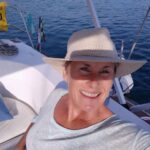
Update on PANAMA CANAL TRANSIT SITUATION (EL NIÑO PHENOMENON) from Associated Yacht Services:
Effective July 30th 2023, due to low water levels at Gatun Lake resulting from the ongoing El Niño phenomenon, the Canal Authority is only transiting an average of 32 vessels per day until Sept 2024.
Presently Panama Canal transit delays for unbooked vessels are running very high in the range 16 to 19 days (delays subject to vessel’s size).
Draft restricion in the New locks for bigger ships (Neopanamax locks) still stands at 44 feet. No Draft restriction in the Old locks at the moment.
As for Yachts arriving and transiting because of the Yacht size/length (smaller than commercial ships) delays should be less, however can expect unbooked delays in the range of 2 to 6/7 days subject to changes and latest Canal situation – which changes daily.
For Yachts over 125 feet that use Locomotives and Panama Canal Linehandlers that transits can be Booked for a specific day, the Booking slots for the months of August and September are running out. We strongly suggest to check with your agent in time if you are planning to transit the Canal soon, as conditions will change as well as the amount of Booking slots.
Delays for Yachts less than 125 feet are not running too high at this moment.
The Panama Canal has confirmed a Lane Outage at Pedro Miguel Locks (only the West Lane) from May 9th until May 16th (8 days) as per Advisory To Shipping No. A-19-2023. Significant delays in unbooked vessels will be expected during this period and several days after the maintanance is completed. Booking a slot is only possible for boats 125ft and over and costs US$10,500.
From Erick Galvez, agency Centenario & Co SA: FOR YOUR INFORMATION, SAILORS TO TAKE PRECAUTION AT THE GATUN MOORING (V. RUSTY) AND BE AWARE THAT ALTHOUGH WE WASH ALL OUR LINES AFTER USE, SOME STAIN WILL NOT COME OFF FROM THE LINES. SKIPPERS MAY NOTICE THE STAIN WHEN WE HAND OVER LINES, BUT THEY WILL NOT DIRTY YOUR BOAT. HOWEVER DURING TRANSIT LINES MAY COME BACK WITH FRESH GREASE FROM THE WALL AND DIRTY THE BOAT. TAKE THE NECESSARY PRECAUTIONS.
The Panama Canal has scheduled a locks maintenance outage in Gatun locks from July 5th to July 14th (10 days). Significant Panama Canal delays of several days will be expected during this period. If considering transiting the canal during this period it is recommended to book a slot ASAP to avoid delays.
THE PANAMA PERSPECTIVE
Newsletter and real estate in panama, through the panama canal in your yacht: everything you need to know.
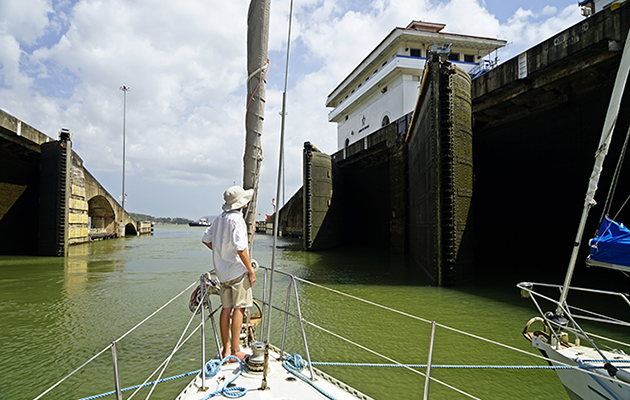
How to transit the Panama Canal in your yacht – preparation, costs, top tips and more from Behan Gifford for a smooth crossing from the Atlantic to the Pacific Ocean Cape Horn sailors and ditch diggers sacrificed all to make the path between the Atlantic and Pacific easier for the rest of us. It is a surreal situation to find yourself floating in a small yacht alongside a giant ship in a box of water 25m above sea level. Entering the canal was thrilling, stressful, and awkward. Descending the last lock was euphoric. The Panama Canal is a gem to treasure.
Considering the alternative routes, the canal is a blink between oceans. Yet a smooth transit benefits from advance planning. Our research began about three months in advance after we learned how seasonal congestion can increase the waiting time from arrival in Colón to an assigned transit date. Most of the year, four to six days is typical. During the high season from late January through May, six to 20 days is the range from completion of measurement and fee payment until an assigned canal transit date. For South Pacific-bound boats, December until mid-January is a sweet spot for minimal delay.
The slowdown escalates with the arrival of the World ARC rally. Having waved the fleet off in Colombia we decided to spend a few weeks of leisurely sailing through the turquoise waters of Panama’s Guna Yala instead of adding to the spike in transiting vessels. Hiring an agent was our answer to first staying in tune with the length of the delay, then having an advocate who could help us find a slot to get through sooner during the peak-season waiting period. Read more at Yachting World
Sign Up for our Newsletter:
Your Name (required)
Your Email (required)
- BOAT OF THE YEAR
- Newsletters
- Sailboat Reviews
- Boating Safety
- Sails and Rigging
- Maintenance
- Sailing Totem
- Sailor & Galley
- Living Aboard
- Destinations
- Gear & Electronics
- Charter Resources
- Ultimate Boat Giveaway

Tips for Transiting the Panama Canal
- By Diane Gorch
- Updated: December 16, 2019
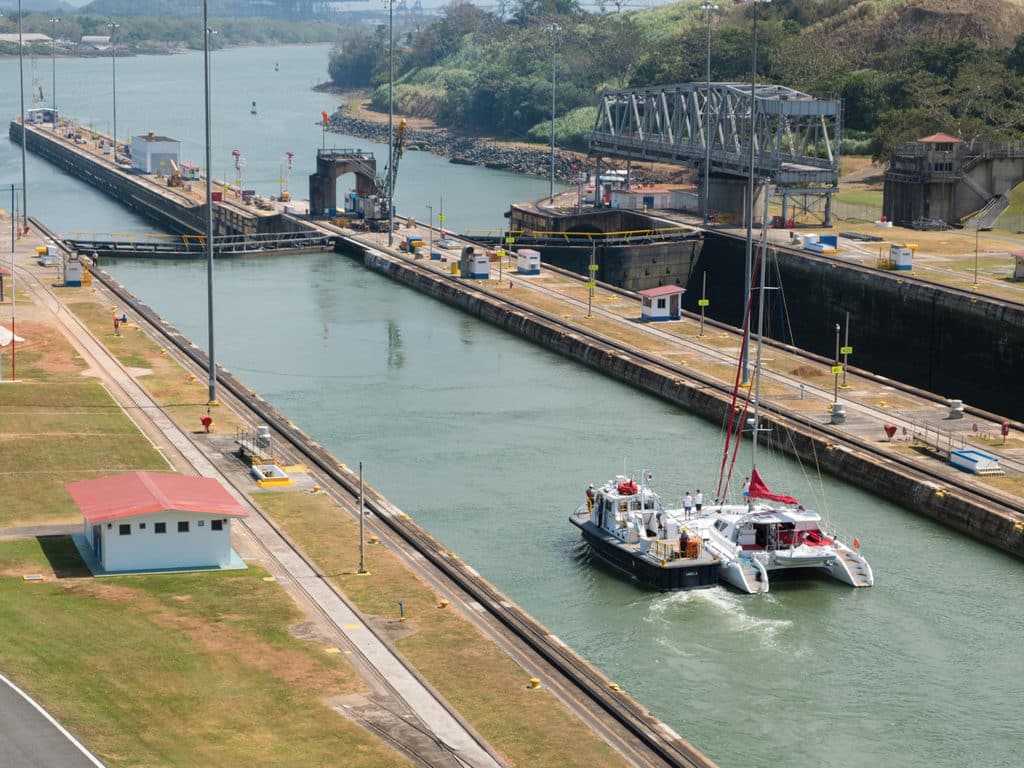
I scrambled out of the dinghy onto Minh ’s transom steps as a last-minute addition to the crew, the required fourth line handler needed for a transit of the Panama Canal. The French-flagged 41-foot Fountaine Pajot catamaran was weighing anchor in the Flats anchorage near the Port of Colon, a staging area for vessels preparing to enter the waterway, bound for the Pacific.
Amid a flurry of activity, Bruno, the only English speaker, offered me a kindly welcome aboard as we felt a bump on the port side: Mr. Tito, the rental agent, was delivering four tires wrapped in plastic bags to use as fenders, and four stout 125-foot polypropylene hawsers, which were also necessary for the passage through the canal. In another moment, on the starboard side, a 40-foot steel pilot boat nosed within inches of our hull, and the Canal Authority adviser stepped aboard Minh . Right away, he instructed the captain to get underway and proceed along the 2-mile channel toward the Gatun Locks.
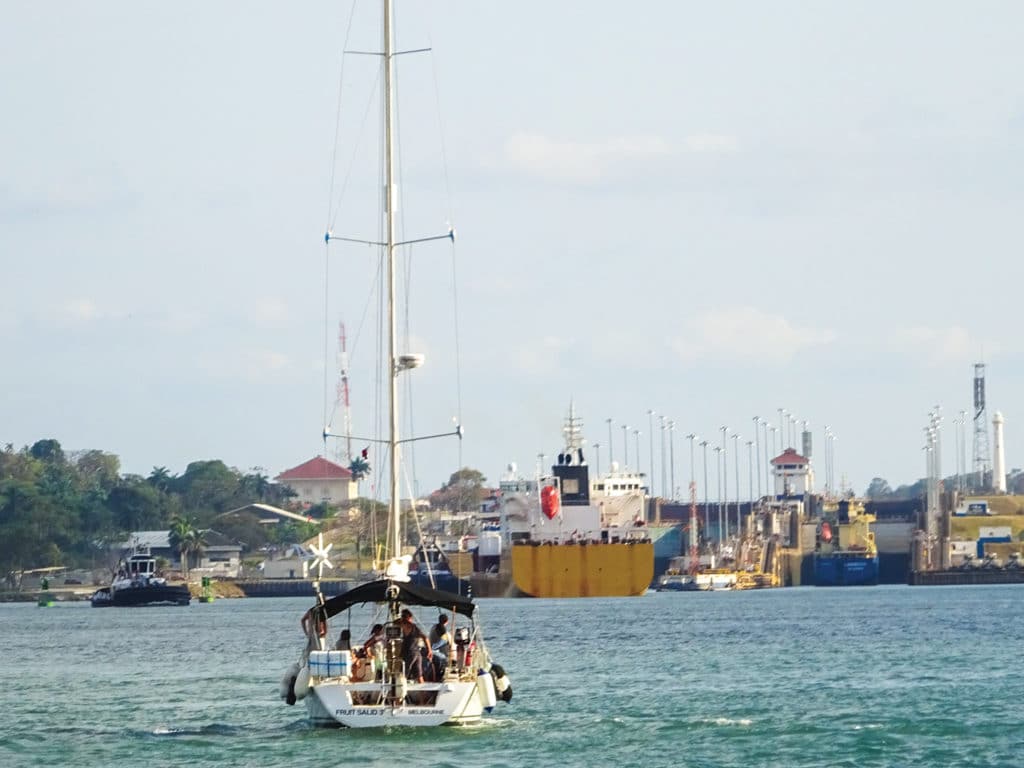
For many cruisers, a transit of the Panama Canal is a milestone accomplishment. The canal itself is an engineering wonder of the world. Completed in 1914, it consists of six locks and 45 miles of waterway, a shortcut between continents connecting the Caribbean Sea and the Pacific Ocean. It is immense in scale. Each lock is 85 feet deep, 1,000 feet long and 110 feet wide. For the original canal, the maximum dimensions for a Panamax vessel—the term used to describe the midsize cargo ships that will fit the locks—are 965 feet long and 106 feet wide. With only 2 feet to spare on each side, there is little room for pilot error. The design of this canal has dictated the parameters for shipbuilding worldwide for nearly a century.
There are three ways a yacht can proceed through the canal. Perhaps the most common is center-chamber lockage, where boats are rafted up two or three abreast. Yachts can also moor alongside a tugboat or small tourist cruise ship. Or they could be tied against the rough cement walls of the canal, less common and also less desirable because water turbulence can crash your rigging into the side wall. Our adviser told us we would raft up for a center-chamber configuration—one less thing to worry about.
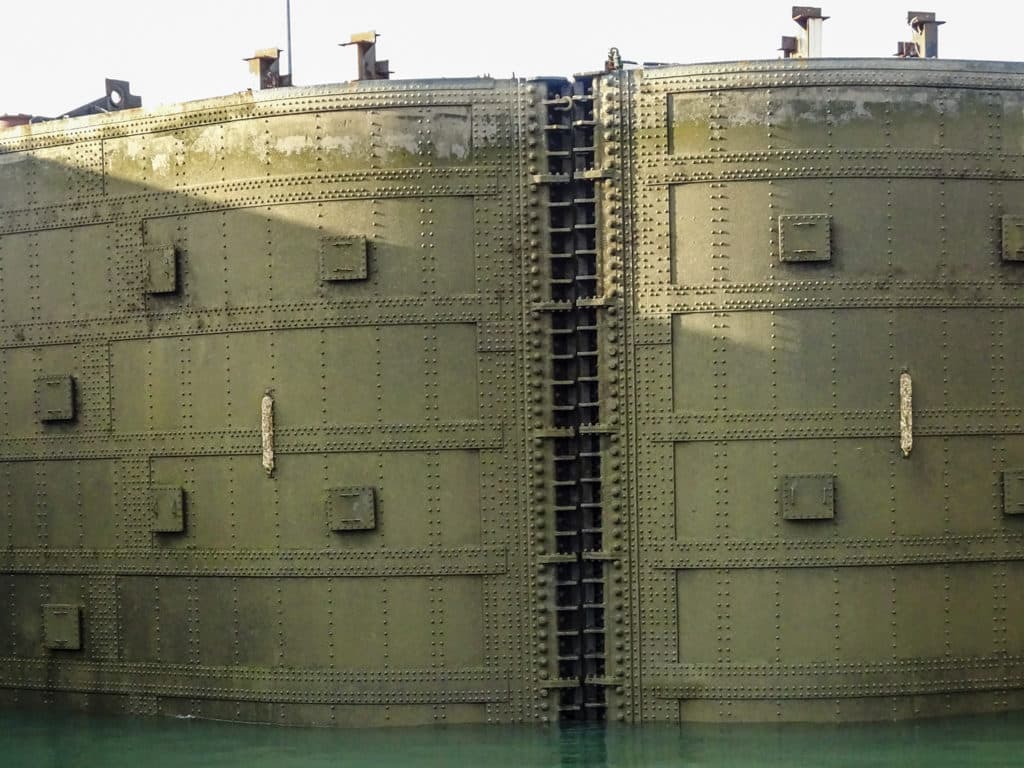
As we motored ahead, we prepared the boat by covering the hatches and solar panels with seat cushions and other thick padding to protect them from the monkey’s fists, which are used by canal workers to heave messenger lines to the boats. We were gradually approached by another yacht, the 42-foot Froot Salid from Australia, to which we rafted up, as instructed by the advisers on each boat. Spring and breast lines held us firmly together. We entered the first Gatun lock after the ship ahead of us was secured. Canyonlike walls rose up on both sides. The captains kept the boats centered under the watchful eyes of the advisers, and soon the canal workers atop the high walls threw down the monkey’s fists with messenger lines to be tied to our hawsers. The workers hauled up our lines, and together the men and boats moved slowly forward to the proper position, where the workers secured our lines to bollards.
The advisers and canal workers communicate effectively with each other using walkie-talkies, but also by sharp whistling, reminding me of Scottish shepherds directing their dogs. I jokingly asked our adviser whether a man who couldn’t whistle could get a job here. He thought for a minute, laughed and said, “Probably not.”
In his book The Panama Cruising Guide (fifth edition) , Eric Bauhaus gives comprehensive information pertaining to transiting the canal. As a line handler, there were two things I needed to keep in mind. First, having a hawser or any other line go afoul of the prop during the transit is bad—really bad. The water churning around the vessel while the lock is filling is turbulent, made even more dangerous by undercurrents and the mixing of fresh and salt water of different densities. Do not fall in; even if your dog falls overboard or your prop gets fouled, do not enter the water for any reason.
The line handlers had to keep a steady tension on the hawsers, holding the boats in position against the turbulent waters.
The second hazard is when the monkey’s fist is thrown to your boat. The fist consists of a ball of lead, covered with woven rope, and it’s enough to crack the cranium of the unlucky swabby who wanders into its path. I was vigilant when the lines were thrown to Minh but was startled when the monkey’s fist intended for Froot Salid landed just ahead of me on Minh ’s deck!
When all was ready with the ship ahead and our rafted yachts, the massive lock gates behind us slowly closed. These impressive doors weigh 800 tons apiece, and are made from massive steel plates joined by hand-forged and hammer-driven rivets from the Steam Age. They are so precisely balanced on their hinges that only a 40 hp engine is required to open and close them.
When they were closed at last, the water began to swirl up in massive, powerful eddies, and the boats slowly rose. As this happened, the line handlers had to keep a steady tension on the hawsers, holding the boats in position against the turbulent waters. Pressures on the mooring cleats can be tremendous and in an upward direction, which the cleat installations must be able to withstand.
The churning water quieted, the lock was filled, and with a metallic rumble, the lock gate ahead opened. Four chunky electric locomotives, weighing 20 tons each, towed the ship forward into position inside the second lock. Once it was in position, our advisers directed us to move our rafted boats forward. Both vessels motored at dead slow into position, and the canal workers manning the bollards walked the hawsers along the wall and up the steps to the top of the next lock. Sharp whistles reminded us line handlers to raise our lines overhead as workers climbed the steps. When we moved into the canyon of the second lock, our lines were secured and the whole process slowly repeated, and again for the third Gatun Lock. After transiting these three locks, the boat lay 84 feet above the level of the Caribbean Sea from which we had started.
Halfway There
As the evening sky ripened to tangerine and scarlet, we left the third Gatun Lock and headed into Lake Gatun. This meandering lake was formed when the Rio Chagres was dammed to create a navigable waterway leading farther on toward the Pacific. The advisers guided us to a giant mooring float, where both boats moored securely with bow, stern and spring lines for the night. This is more convenient for prompt departures because anchors dropped in Lake Gatun might foul on 100-year-old logs or stumps still rooted beneath the dammed waters. As a chorus of howler monkeys heralded the approach of twilight, I dived overboard for a delicious swim in the sweet fresh water, and was soon joined by everyone on both boats, in spite of rumors about lurking crocodiles. Refreshed and relaxed, the wine was poured, the stars came out, and we slept.
After a French breakfast of coffee with fresh crepes and jam prepared by Annick and Charles-Henri, our advisers rejoined us around 0715 and we resumed our passage. We had to maintain a speed of at least 6 knots to stay on schedule. The well-marked shipping channel meanders just over 20 nautical miles through the lake. We kept to the side, as container ships and roll-on/roll-off ferries—or roros—passed us from both directions. It was a quiet passage, revealing glimpses of jungle vegetation, bird life and the geology of the isthmus as we went. Using a mixture of French, Spanish, Portuguese and English, we crewmembers and our cheerful adviser got to know each other a little better throughout the day.
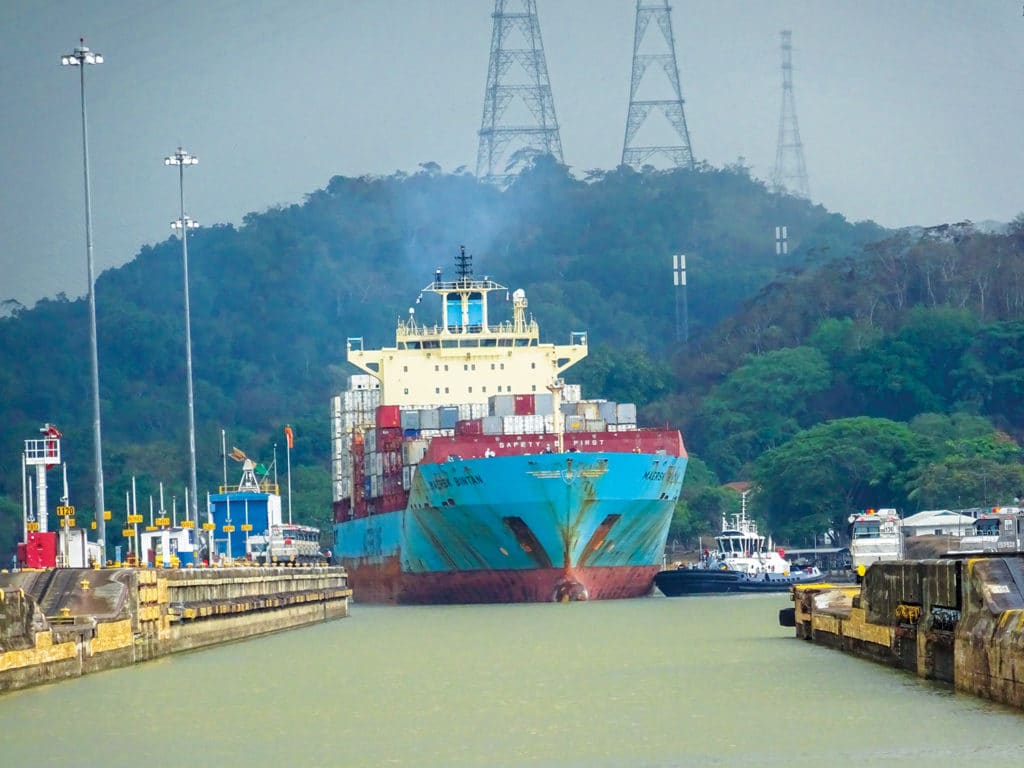
Eventually, we approached the village of Gamboa, where Rio Chagres flows into Lake Gatun near the head of the Gaillard Cut. It is the only settlement along the canal because the waterway lies within a secured area of a large national park. Here the current running toward the Pacific becomes noticeable. Also, there is massive construction on the north side to widen the canal, so the water became muddy, and dreams of splashing in fresh water again slowly expired, if only for a minute. A drenching rain began, which continued for most of the afternoon.
Along the Gaillard Cut—also known as the Culebra Cut, which spans about 7.5 miles—the scenery changes. Here the canal was blasted and carved through rock and shale, right through the Continental Divide, making it the only continental divide on Earth you can sail across. It is still susceptible to landslides. There are sections where the steep, terraced cuts across mountainsides resemble Mayan step pyramids standing silent watch along the passage. Flanked on both sides by those pyramidlike mountains, we passed under the elegant Centennial Bridge, gracefully soaring above the canal.
I asked our Canal Authority adviser about the breakdown of yachts transiting the waterway. He estimated that of recreational boats moving into the Pacific, about 40 percent are French, 20 percent British, followed by German and Australian vessels. Relatively few American yachts pass through. Perhaps they are lured to stay in the Caribbean by the beautiful San Blas Islands, or the ease of obtaining permanent visa or residency offered by the Panamanian government. Fewer yachts pass from the Pacific to the Caribbean because the winds and currents to reach Panama’s Pacific coast are often contrary.
We approached the Pedro Miguel Locks, the first descent toward the Pacific. We rafted this time to a brand-new Amel 64, crewed by at least 16 cheerful 20-somethings. Now the raft of yachts entered first, with a ship looming behind us. We stared at its bulbous bow, thinking that this is as close as we ever want to come to a yacht crusher like this. Over came the monkey’s fists and messenger lines; we secured the hawsers and prepared this time to slowly ease them out as the water fell. In the outgoing locks, the turbulence is much less.
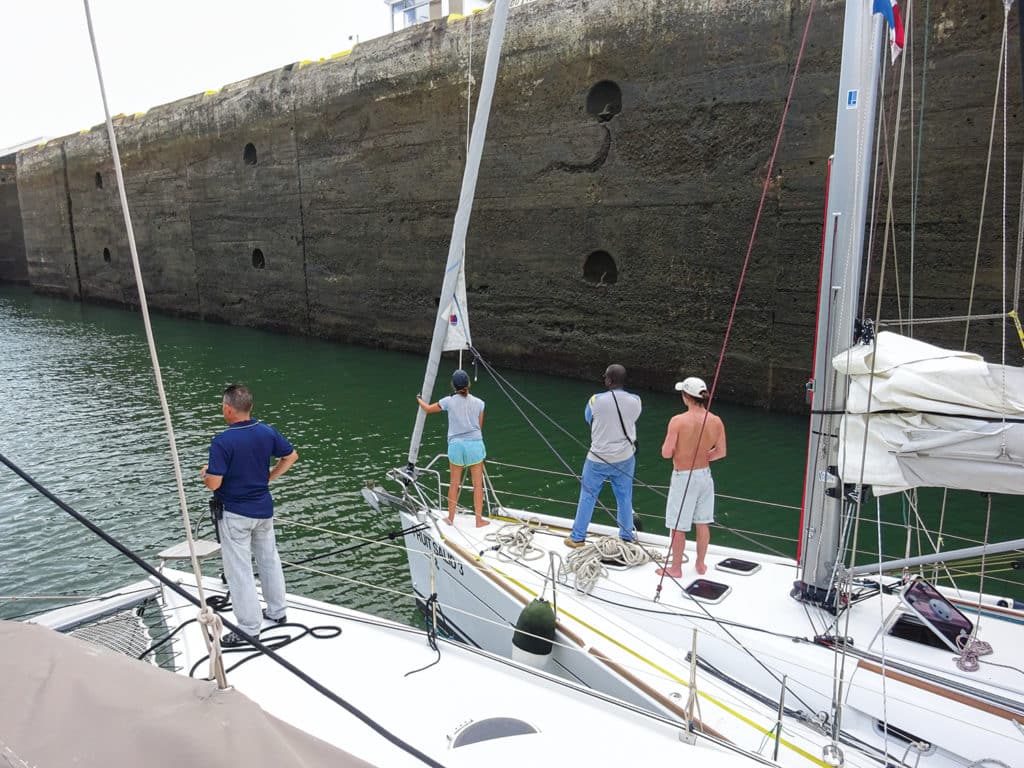
Exiting the Pedro Miguel Locks, the system of buoyage changes. We were now outward-bound, so green markers were kept to starboard; it was “port wine” from here on out.
We proceeded on through the man-made Lake Miraflores to the final two Miraflores Locks. In these chambers, we were lowered another 54 feet. As we approached the first lock, the sky opened up and rain poured down again, continuing for the entire transit of both locks.
The young people on the Amel were singing, dancing and playing guitar in the downpour. On Minh , Andre gallantly stood with a little umbrella over Annick, who was handling the port bowline on the final lock; both of them were soaked to the skin. Bruno mimed a shower scene using his line like a scrubber to wash his back. Laconic Charles-Henri would’ve been chewing a cigar if he’d had one, hunkered down at the wheel. All of this was observed by hundreds of tourists in the cozy, dry observation tower overlooking the second lock. As we exited into the Pacific, there, floating like a log in the water, lurked a fair-size crocodile.
We were now outward-bound, so green markers were kept to starboard; it was “port wine” from here on out.
Waving farewell, we separated from the Amel as the sun melted in the west, and proceeded to the Balboa anchorage where a Canal Authority vessel nosed alongside to pick up our adviser. We anchored at La Playita near the Flamenco Marina in Panama City. Already we were starting to feel the creeping nostalgia of a passage completed.
Our final dinner together was at a little cafe with great wood-oven pizza, wine and multilingual chat. In the morning we would go our separate ways. Annick and Andre would return to their boat in Portobelo, to bring it through the canal in a few weeks; Charles-Henri and Bruno would sail Minh on to the Marquesas and Tahiti. I would rejoin friends Claudia and Rolf aboard Tika and continue our cruise along the steamy Caribbean coast of Panama.
A lifelong sailor and licensed captain, Diane Gorch has been voyaging on yachts around the world for the past eight years.
Know before you go
When do boats go through: Most cruising boats transit from the Caribbean Sea to the Pacific Ocean, and traffic peaks in February and March. This backs out to an optimal arrival time in French Polynesia’s Marquesas Islands (nearly 4,000 nautical miles away) as the Southern Hemisphere’s cyclone season wanes. To avoid the crush, plan to transit before the World Cruising Club rally passes through in late January. Earlier departures allow an interlude at the Galapagos; it’s easy to bide time in the beautiful Pearl Islands on Panama’s Pacific side too.
Plan ahead: Cruising boats can’t reserve a date in advance; it’s determined after official measurement and payment are completed with canal authorities. Even a quick transit will take a few days to complete these steps. During peak season, it might be several weeks from the time your boat is measured until your assigned transit date.
Cost to transit: Tolls for transiting the canal are set to hike on January 1, 2020, for the first time since 2012. Boats up to 65 feet will be charged a toll of $1,600; for most, that’s double the prior toll. Fees for measurement and security add nearly $200 in additional fixed costs. Other expenses include a Panama cruising permit; the cost to rent lines and fenders (standard boat gear is not sufficient); line handlers, if you need them; and, if you choose, an agent to handle arrangements. It’s easy to add another $1,000 in expenses to the transit.
Equipment required: Four robust lines of 1 to 1.5 inches diameter and at least 125 feet long are obligatory. Fenders too are necessary, and the standard kit on most cruising boats won’t cut it. Many boats use car tires wrapped in plastic to prevent scuffing, but large, sturdy fenders can be rented. Hiring an agent can be a shortcut to quality gear at reasonable rental rates, but it’s also entirely achievable to do this on your own. One requirement we didn’t anticipate was sufficient cockpit shade for the adviser; Totem was required to add canvas to our Bimini frame before transiting. It’s your responsibility to provide meals, snacks and beverages (Coca-Cola preferred) for your ACP (Panama Canal Authority) adviser.
Crew aboard: In addition to the ship’s captain, four line handlers are required. It’s common to pick up crew from other cruising boats, since transiting as a line handler is a time-tested way to gain valuable experience before taking your own vessel through. Experienced handlers can be hired if necessary for about $100 per person. In addition, you’ll also have an adviser assigned by the ACP on board for the duration of the active transit (advisers don’t spend the night aboard in Gatun, but line handlers will).
Greatest risks: Situations such as a line handler thinking about capturing the scene on a GoPro or cellphone instead of listening for directions; cleat access that’s encumbered by deck clutter; or a language barrier between adviser, captain and line handlers all present risks to crew and vessel safety, and are all too common in creating stressful situations during a transit.
Greatest assets: The assigned adviser is key to a safe transit: They have years of canal experience to understand the nuances of current flow in particular locks. A strong adviser, as well as a crew who listens and responds to that adviser, are the greatest assets for an uneventful transit.
Transit duration: Most cruising boats transit in two days, anchoring overnight in Lake Gatun. For boats that can motor at least 7.5 knots, a single-day transit might be assigned; this pre-dawn start winds down by late afternoon and is assigned at the ACP’s discretion.
Canal resources: The official Panama Canal site (pan canal.com/eng) is packed with information, but it’s not terribly user-friendly. By contrast, Mad About Panama’s website has a downloadable eBook with a clear orientation to all aspects of a canal transit. Outside the canal, Eric Bauhaus’ book, The Panama Cruising Guide , is a recognized authority.
Canal transit isn’t just about execution; it’s about the experience. Thanks to the historical nature of the canal, a wealth of books exists to increase your appreciation: The Path Between the Seas by David McCullough is one of the more exceptional reads. A visit to the museum at the Miraflores Locks for a real-time view and interpretive exhibits enriches a later transit. Don’t forget to have friends grab screenshots of your boat in one of the many webcams when your canal day arrives!
For Totem ’s posts on costs, process and experience, visit sailingtotem.com .
—Behan Gifford
- More: How To , panama canal , seamanship
- More How To

Made for Shade: Cockpit Cover Options

Blackwater Wisdom for Holding Tanks

5 DIY Basics For Your Diesel Engine

Unraveling Efficiency: Diesel vs. Electric Propulsion
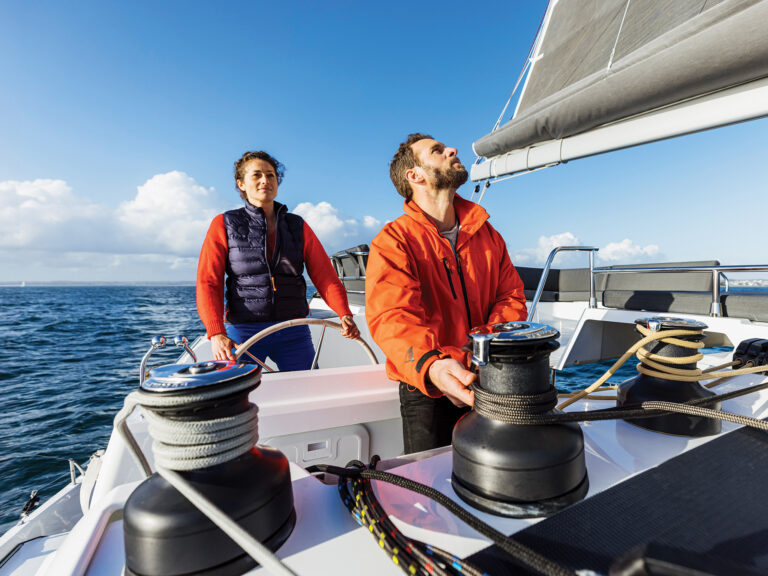
Sailboat Review: Fountaine Pajot Aura 51
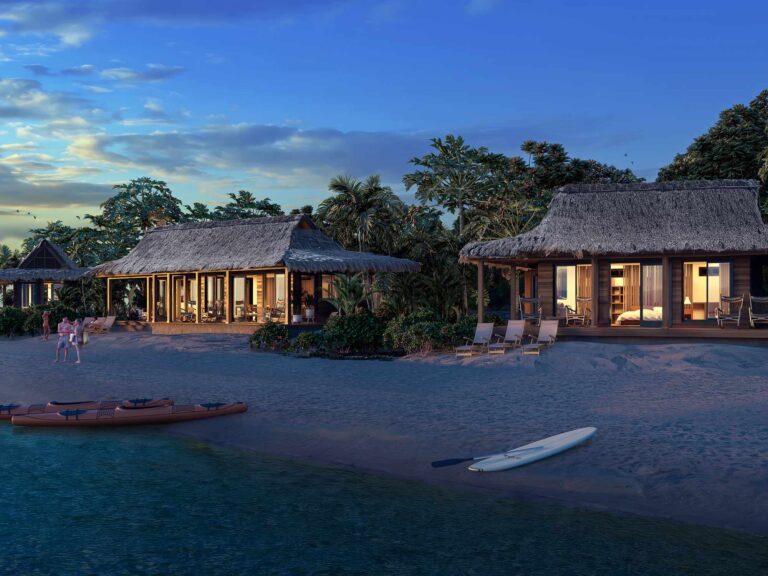
Introducing Bitter End’s Beach Bungalows

Off Watch: School Daze
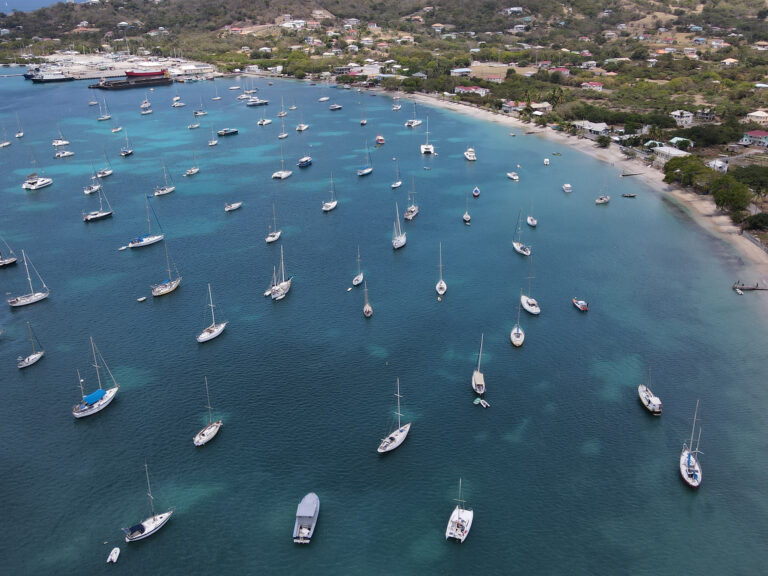
Paradise Pummeled
- Digital Edition
- Customer Service
- Privacy Policy
- Terms of Use
- Email Newsletters
- Cruising World
- Sailing World
- Salt Water Sportsman
- Sport Fishing
- Wakeboarding

Can Sailboats Use the Panama Canal?

Last Updated by
Daniel Wade
June 15, 2022
The Panama Canal makes it a lot easier for sailors looking to travel between the Atlantic and Pacific Oceans. It's a great route for sailors looking to avoid the lengthy and often dangerous Cape Horn route. But can sailboats use the Panama Canal? Of course, they can, and here's how to do it.
For many cruising sailors, transiting the Panama Canal is a milestone achievement and a momentous occasion. An engineering wonder of the world, the Panama Canal is a shortcut that connects the Pacific Ocean and the Caribbean Sea. But finding yourself cruising on a small sailboat alongside a gigantic cargo ship in a box of water that's 25 meters above sea level can be a surreal situation. In other words, transiting the Panama Canal on a small sailboat can be awkward and stressful yet thrilling and very doable.
Can sailboats use the Panama Canal? Yes, they can. You, however, have to keep in mind that it can be expensive, time-consuming, and stressful. But even with that, it's unquestionably one of the most epic adventures that any sailor can undertake. There are three ways that a sailboat can sail through the Panama Canal. The most common one and probably the safest is the center-chamber lockage. This involves rafting up two or three boats abreast. A sailboat can also moor alongside a tugboat or get tied against the cement walls of the canal. The latter is less desirable because the water turbulence can crash your sailboat.
So if you've decided to transit your sailboat through the Panama Canal , there are some important factors to consider before embarking on the voyage. You have to consider time and all the expenses involved, as well as all the rules and regulations. And because your sailboat can be allowed to pass through the Panama Canal, here's everything you need to know before embarking on the journey.
Table of contents
How To Use The Panama Canal With Your Sailboat
Plan for the trip.
When it comes to sailing through the Panama Canal , one of the most important things is being prepared for the trip through the canal and this involves having a plan. In most cases, you'll have to complete some passage requirements days before the actual passage. In other words, you cannot head to the Panama Canal and expect passage on the very day.
As such, you can head to the Shelter Bay Marina and make your plans from there. This is, of course, a hub of sailors doing the Panama Canal transit. It's certainly a very suitable place to organize everything including getting the permits, picking up a crew, and making your plans.
Vessel Requirements
This is probably the most important thing if you want to transit through the Panama Canal: knowing the vessel requirements. Generally speaking, many sailboats and recreational boats will unlikely exceed the vessel requirements that are set by the Panama Canal Authority. Here's what to expect:
Length: The vessel should not exceed 950 ft. in length.
Width: The vessel should have a width not exceeding 161 ft.
Height: The height of your vessel should not exceed 190 ft. from the waterline to the highest point of the boat.
Draft: The draft should not exceed 44 ft.
Cargo Capacity: The maximum cargo allowed should not exceed 120,000 tons.
As you can see, your sailboat will most probably not exceed the above-highlighted vessel requirements and can be allowed to sail through the Panama Canal as long as other thresholds are met.
Getting Your Sailboat Weighed and Measured
You have to keep in mind that you'll get into the Panama Canal Authority's ACP system after you've gone through the measuring and weighing process. You'll then have to pay for the transit before you get assigned a transit date. Even though this can be done in advance, there's no guarantee that your transit date will be the next day. In short, a transit date cannot be reserved in advance and it will typically take about 6 to 8 days of waiting to get assigned a transit date.
The main aim of the weighing and measuring process is to allow the Panama Canal Authority to ensure that your sailboat meets all the requirements. It also allows them to note any possible issue with your vessel that might affect a smooth transit through the canal. Whether by yourself or through an agent, you can schedule a measure to carry out the measuring and weighing process. Remember, all the measurements for the Panama Canal transit can only be done by an official representative of the Panama Canal Authority. Most of the officials speak English and you can arrange a time and location for your sailboat's measurement.
The Paperwork
There's always obligatory paperwork that you have to do before your sailboat can be allowed to make the transit. This means that your vessel will have to dock for a period of time while waiting for your turn to transit. In terms of the paperwork, the Panama Canal Authority requires advance notification of 96 hours to accommodate the arrival of any vessel planning to transit through the canal.
You can either do the paperwork yourself or hire an agent. While the agents know how to maneuver their ways through the process, they always charge a fee. This means that you'll spend more if you hire an agent but will have the paperwork done a lot faster than if you choose to do it yourself. In the paperwork, you'll have to state where your sailboat is and when you'd like to get measured. All in all, the paperwork and transit logistics are always complex so you can opt to hire an agent to help you with the logistics.
Paying the Canal Transit Fees
Once you're done with the paperwork and measuring process, you'll get a form that requires you to proceed to the bank and make payment. Needless to say, paying the canal transit fees is a very crucial step and you'll have to pay the fees before you can be let to travel through the canal. You have to keep in mind that the fees that you pay will vary depending on the size of your sailboat. Here are the costs of transit.
Transit toll
- A vessel under 50 ft. - $800
- A vessel over 50 ft. - $1,300
- Inspection: $54
- Agent fees: $300-$500
- Security: $130
- Line handlers: $100/handler
- Cruising permit: $197
- Lines and fender: $50-$250
- Fender return: $12
There are also other fees including visas and passport check-in that you have to put into consideration. It's always good to be aware of these costs upfront and see whether or not you can afford to make the transit.
Transit Logistics
In addition to getting robust fenders, you must have four line handlers aboard the sailboat. You can either source the line handlers locally by yourself or an agent can help you get the line handlers. Generally, you can recruit the line handlers from other cruising boats. The line handlers must be experienced, know how to tie proper knots, and be ready to help you through the canal transit because that's what you pay them to do.
The four robust fenders are essential in protecting your sailboat from any damage that might be caused by bumping around in the canal locks. You should also have meals, snacks, and beverages to take you through the entire transit, which can take between 8 and 10 hours and sometimes even up to two days. That being said, you must have enough supply to last you and your crew up to two days.
You'll also be assigned an official advisor by the Panama Canal Authority to ensure that everything goes to plan. He/she must join you on-board and will act as a mentor throughout the transit. As such, you should also have enough food to sustain him/her as well as some extra cash in case you're forced to spend the night at the dock due to some unanticipated reason.
Transit Options
Here are four options to consider when transiting your sailboat through the Panama Canal
Center solo - You transit at the center of the canal with four fenders on each corner of the sailboat. The line handlers must be very active and you can wait for a little longer to make the transit because you'll be sailing all by yourself.
Side tie - This involves being a tugboat alongside a commercial boat. This doesn't require active line handlers as your sailboat will rise and lower based on the movement of the larger boat. With that in mind, you will share a lock with the larger ship but this cannot be cost-effective, especially if you're on a budget.
Against the wall - You need active line handlers to direct the boat but you risk damaging your boat against the wall.
Rafted - Two or three sailboats tie up together at the center of the canal and tug behind or in front of a larger ship with the two outside boats having two lines on each side of the boats.
Piloting Your Sailboat through the Canal
The Panama Canal Authority will assign you a captain to pilot your sailboat through the canal, which is approximately 51 miles long. You'll have to go through 12 locks that are designed with systems of levels that can lift your vessel 85 feet to the main elevation of the canal and back down. The water levels will change when the lock doors close and the line handlers will loosen or tension the lines based on the advisor's instructions. They have to, therefore, be very attentive to avoid any potentially dangerous situations for the boats.
Keep in mind that each lock is approximately 300 meters long and can either be filled or emptied in just 10 minutes. You can then continue on the Atlantic Ocean or the Pacific Ocean once you've transited through all of them.
To this end, sailboats can use the Panama Canal. However, it requires planning, preparation, time, and money. The system is quite complicated and there are set deadlines and guidelines that you must adhere to. You have to be ready to pay the costs associated, be patient, and follow the set guidelines.
All in all, transiting through the Panama Canal on your sailboat is, without a doubt, an adventure of a lifetime. Go through it and it will stay with you for the rest of your life!
Related Articles
I've personally had thousands of questions about sailing and sailboats over the years. As I learn and experience sailing, and the community, I share the answers that work and make sense to me, here on Life of Sailing.
by this author
Travel Logistics
Most Recent

What Does "Sailing By The Lee" Mean?
October 3, 2023

The Best Sailing Schools And Programs: Reviews & Ratings
September 26, 2023
Important Legal Info
Lifeofsailing.com is a participant in the Amazon Services LLC Associates Program, an affiliate advertising program designed to provide a means for sites to earn advertising fees by advertising and linking to Amazon. This site also participates in other affiliate programs and is compensated for referring traffic and business to these companies.
Similar Posts

How To Choose The Right Sailing Instructor
August 16, 2023

Cost To Sail Around The World
May 16, 2023

Small Sailboat Sizes: A Complete Guide
October 30, 2022
Popular Posts

Best Liveaboard Catamaran Sailboats
December 28, 2023

Can a Novice Sail Around the World?
Elizabeth O'Malley

4 Best Electric Outboard Motors

How Long Did It Take The Vikings To Sail To England?

10 Best Sailboat Brands (And Why)
December 20, 2023

7 Best Places To Liveaboard A Sailboat
Get the best sailing content.
Top Rated Posts
Lifeofsailing.com is a participant in the Amazon Services LLC Associates Program, an affiliate advertising program designed to provide a means for sites to earn advertising fees by advertising and linking to Amazon. This site also participates in other affiliate programs and is compensated for referring traffic and business to these companies. (866) 342-SAIL
© 2024 Life of Sailing Email: [email protected] Address: 11816 Inwood Rd #3024 Dallas, TX 75244 Disclaimer Privacy Policy
- The Superyacht Captain’s Guide to Transiting the Panama Canal

A shortcut, saving about 8,000 nautical miles, between the prime yachting destinations of the Pacific Ocean and those of the Caribbean Sea, the Panama Canal is one of the world’s most important waterways. Cutting across the narrowest point of the Central American isthmus, today it sees over 12,500 ships pass along its 80 km length annually. At shipping agent Norton Lilly International, we deal with 19% of all these canal transits, from the largest cargo ships all the way down to superyachts and small leisure vessels. Norton Lilly International has operated on the Panama Canal since 1925; this long and prestigious history, as well as being a member of Experience Yacht Services alliance, means no one is better placed or more experienced in the field.
For a yacht captain, transiting the Panama Canal takes considerable planning, preparation, and paperwork, so if your itinerary calls for you to cross between the Caribbean and Pacific, Norton Lilly are the agent to help make this complex process much more straightforward.
With bilingual staff available 24/7 and offices at both ends of the canal, we will always be on hand with assistance and support throughout the process of transiting. From uploading documentation and reserving a transit slot to suppling additional crew and coordinating any required services before and after you cross, as captain you can feel secure in the knowledge that you are in safe and efficient hands.
“…the Panama Canal can represent a once-in-a-lifetime opportunity to experience first-hand one of the engineering wonders of the world surrounded by Panama’s lush tropical beauty.” Joe Walden, CEO, Norton Lilly International (Panama)
Transiting the Canal
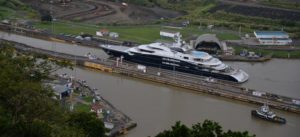
Photo for illustrative purposes, Property of the Panama Canal Authority
Smooth transits, particularly maiden ones, benefit from forwarding planning so contacting us several months before your desired transit date will allow you to keep up to date on any delays or seasonal congestion that might affect your plans. If you have a specific date in mind for your crossing, booking and reserving the slot can be done for you at an additional cost which is calculated according to the size of the yacht. The process begins with your Norton Lilly agent gathering the necessary paperwork from you – this needs to be presented at least 96 hours before your arrival in the canal zone – and updating the Panama Canal Authority (ACP) system with the relevant details. This includes the identifications and certifications of you, your crew, and passengers, among other things.
You’ll receive instructions on what to do on your arrival in the canal zone – the Balboa anchorage in the Pacific or Cristóbal breakwater on the Atlantic side. From there, we will coordinate the necessary inspection and payment to the ACP, communicating to you the time and place that your inspection by an official admeasurer will take place. The measurements taken here will dictate the cost and the type of crossing that you will have. Once these details have been entered into the system, you will be assigned a transit date if you did not reserve one.

Panama Canal Miraflores Locks
Between now and your transit date, you can spend the time as you wish. We can coordinate any necessary servicing your vessel needs, including fuel and lube oil replenishment, fresh water, waste disposal, repairs and so on. We will be on hand throughout this period as a reassuring presence, able to answer any questions or queries that may arise.
On transit day, we will have coordinated everything to ensure the process is as smooth and efficient as possible, keeping you informed of your start time and when your pilot will arrive on board, a requirement for all vessels over 20 metres in length. If your vessel has been measured as less than 38.1 metres in length, you will have a handline transit and will not be using your engines to clear the locks; vessels over 38.1 metres can use their engines. You will also welcome a crew of professional line handlers on board, who we will source for you, who will assist with clearing the three sets of locks – two on the Pacific side of the canal, Miraflores and Pedro Miguel, and one on the Atlantic end, Gatun.
Each lock is a vast 300 metres long so, depending on the size of your yacht, you may enter with other, potentially much larger, vessels raising and falling the 26-metre difference between sea and canal level. Once through the locks you are free to motor along at a minimum speed of eight knots, crossing the huge Gatun Lake where there is plenty of wildlife to keep an eye out for – crocodiles in the water and birds and monkeys around it, and through the impressive Culebra Cut, the canal’s narrowest point.
Smaller vessels are usually scheduled to transit in the evening if they are travelling from Atlantic to Pacific; this transit takes about two days, with the second section taking place during daylight. From the Pacific to Atlantic, you are likely to transit during daylight hours and complete it in a single day depending on your speed and lock availability.
Panama, hidden gem for Superyachts
“The Panama Canal is geographically well positioned, enabling yachts to reposition between the Pacific and Atlantic oceans in about 12 hours, but it is much more than merely a logistical pathway.” Joe Walden, CEO, Norton Lilly International (Panama)

Much more than just a transit point between two great oceans, Panama is a land of irresistible wonders. A 3,000-mile coastline is split between the white sand beaches, rainbow coral reefs and paradise islands of the Caribbean and the wild, empty shores, epic marine life, and big surfing waves of the Pacific. In between is untamed jungle filled with a vast array of flora and fauna, an age-old indigenous culture, a colorful heritage, and a cosmopolitan world city in capital Panama City. All this is relatively undiscovered and easily accessed from the many picturesque anchorages dotted along both coasts. This is not a destination to simply pass through, but one that needs to be explored, something that can be easily done with Experience Yacht Services . Providing a yacht agency to give captains’ peace of mind, you’ll also benefit from itinerary design services for a unique and adventurous way to discover Panama’s hidden gems.

TheGreenFamily
Are the partners in this dynamic alliance truly independent, or do they have hidden agendas that could potentially impact the services provided to superyacht captains, crews, and owners in Latin America?”, “refusal
Cancel reply
Your email address will not be published. Required fields are marked *
Save my name, email, and website in this browser for the next time I comment.
Recent Posts
- Panama’s ascension on the yachting scene
- Introducing Experience Yacht Services: The Latin American Yachting Alliance Shaking up the Industry
9 Insider Tips for Sailing Through the Panama Canal
Transiting the Panama Canal is a big moment for a lot of sailors; it marks the move between oceans and hemispheres, and in either direction it's a change to something big and different. But it takes a lot of planning. You've got to time it, get paperwork, reservations, and a host of other details right. So what are some tips for an easier, more memorable transit?
- Prepare to not actually sail
- Arrange your own line handlers
- Feed your advisor (and our crew) well
- Prepare to be rafted (and don't make assumptions)
- Budget beyond the fees
- Use an agent
- Be fluid in your schedule
- Spend time on both sides of the canal
- Take lots of pictures
There's a lot to be done, and you're working on all this in a context which might be culturally different, linguistically challenging, and on different time frames that you're used to. So be patient, relax, and read on to see how you can improve your transit.
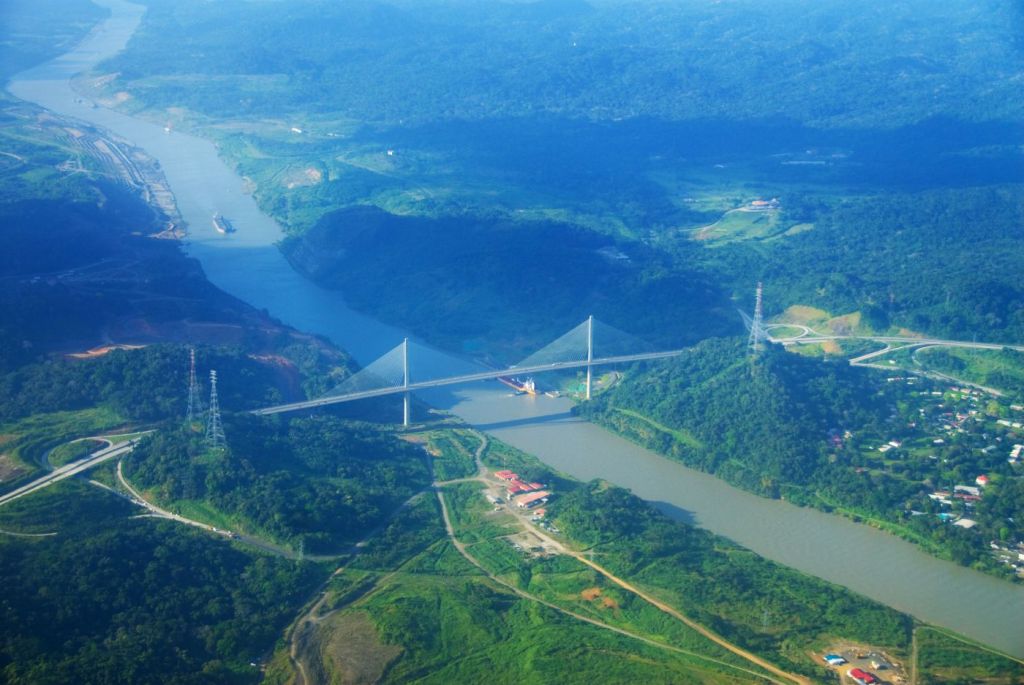
On this page:
You won't be sailing much, arrange your own line handlers, feed your advisor and your crew well, prepare to be rafted (and don't make assumptions), budget beyond the fees, use an agent, be fluid in your schedule, take time on both sides of the canal, take lots of pictures, bonus tip: learn a little spanish.
If at all. We didn't unfurl our sails once during the whole passage. There isn't much opportunity to sail, since the way through is narrow and there's a lot of big ships coming through. If the wind isn't cooperative, you can't tack all over the place, and if it is, you still need maximum maneuverability.
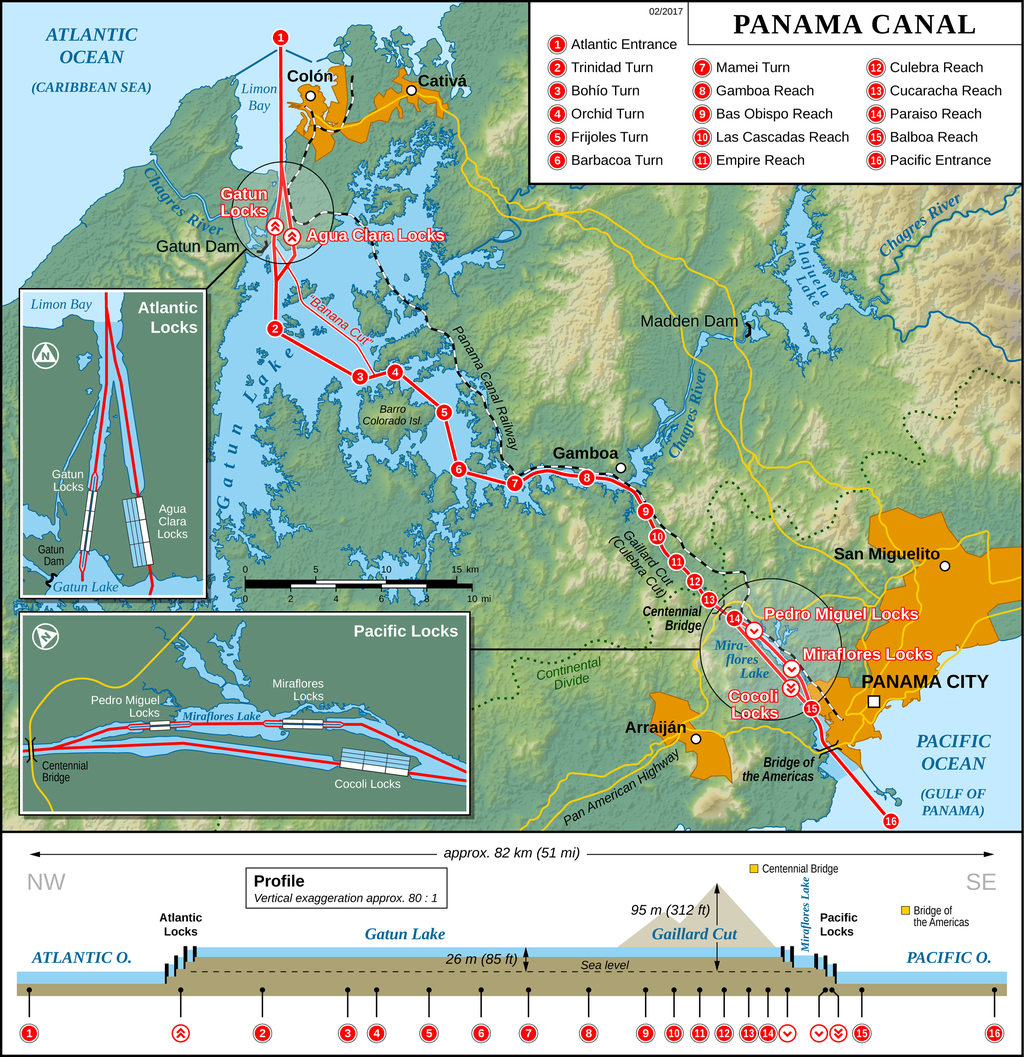
The entire transit involves six sets of locks - three on each side of the canal - and a passage across Gatun Lake. The route through Gatun is buoyed with a channel, and you will have an advisor on board who will frown on attempts to leave the marked channels. Even the "Banana Cut" shortcut is discouraged, because of potential depth issues and concerns about submerged objects.
Finally, the minimum "full ahead speed" to transit the canal in "standard times" is 8 knots. While this applies more to large vessels and barges, there IS a time limit and a schedule, and if you are too slow, you may miss your schedule and incur fees. There's no time to hunt for wind, or go anything less than as fast as you can go.
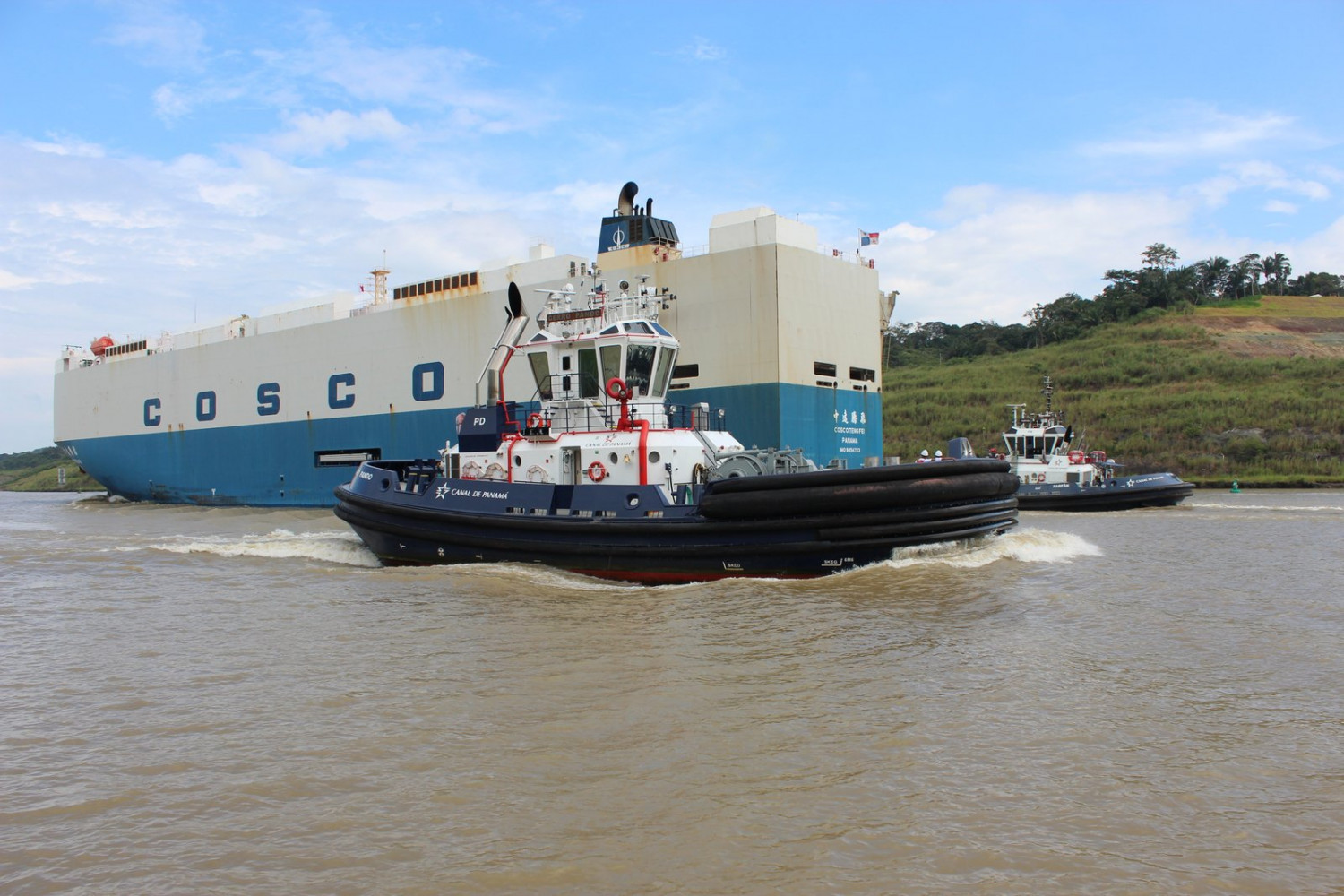
It's best to plan on motoring the entire distance, and the odds are your advisor will give you a hard time if you try to set the sails. The trip is only 51 miles from end to end, but you need fuel and time for maneuvering on either end.
You need four line handlers besides the helmsman. They are supposed to be at least sixteen years old; when we transited, our son was old enough but our daughter was not.
An agent can arrange paid line handlers for you, and the cost will be around $100 per handler. There's no guarantee they know anything about boats and line handling or have any experience, and the odds are good they won't speak anything but Spanish. No matter who you have handle the lines, you're going to need food and space for them on the boat, possibly overnight.
There is an alternative to hiring random strangers - there are almost always cruisers and sailors looking to get experience before they bring their own boat through. Or people who just like doing it, it's a fun trip and a fantastic experience. For our transit, I had a friend whose grandfather helped build the canal, and he had a bucket list dream to transit the canal on a small boat. He and his wife - both skilled sailors - rounded out our team of handlers with my wife and sixteen-year-old son.
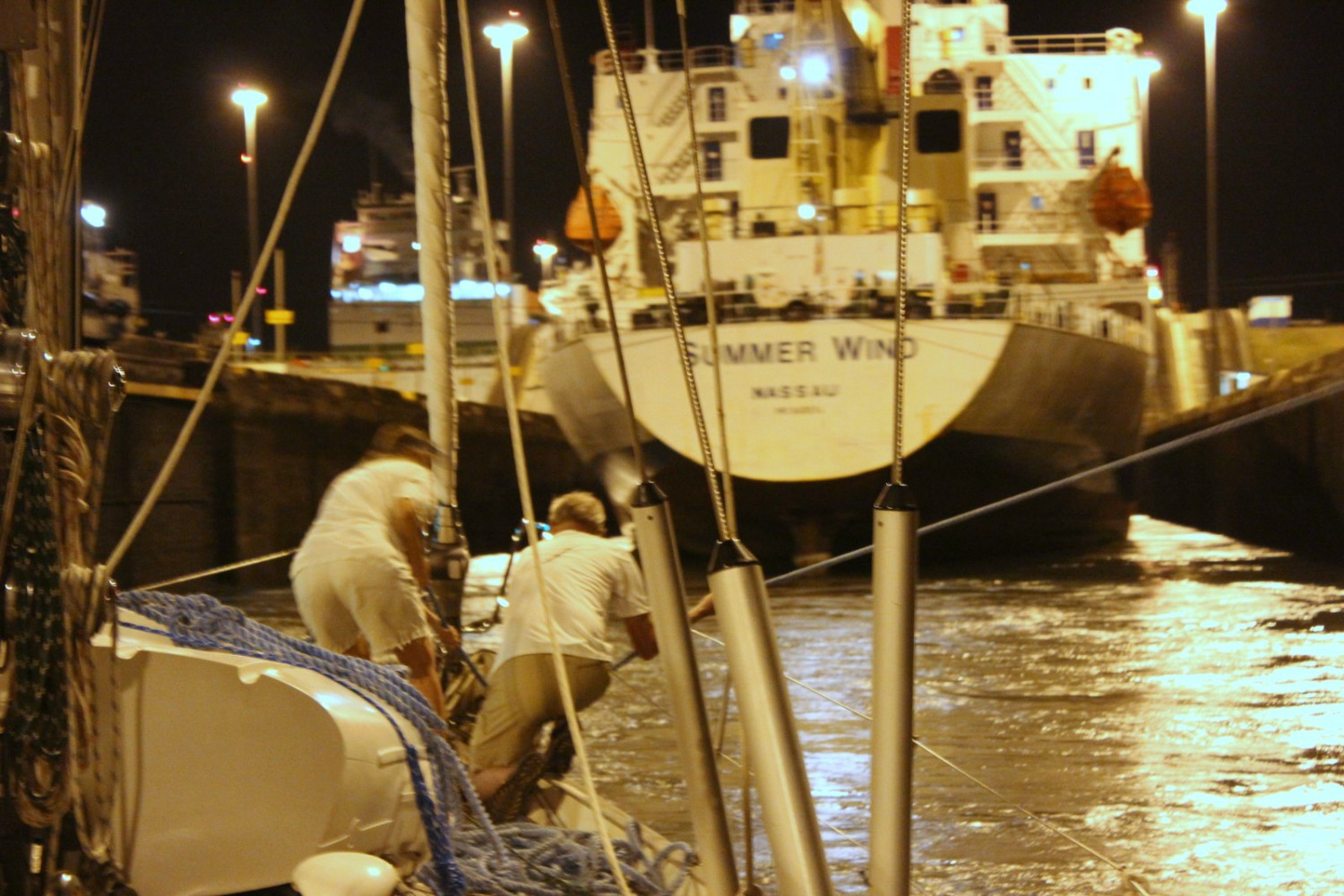
Ask around on cruising nets and web sites, at the marinas and clubs on either side of the canal, and put the word out with your other boat friends you're looking for help.
And you might benefit from taking a transit or two through before you take your boat, so you know what to expect.
The Canal Authority will assign a canal advisor to help you through the canal. This is a good thing; the advisors we had were competent and knowledgeable. But it helps to be on good footing with them, and one of your responsibilities is to provide meals for your advisor when they are on your boat.
Our advisor on the first leg told us some funny/horrific stories about some of the treatment and terrible food he has had. With us serving hand made Caribbean meat patties and home baked chocolate chip cookies, we had a good rapport and a happy advisor. Though I've never seen someone use scorpion pepper sauce like ketchup before; the guy must have had an iron stomach, but he liked our cooking!
A word of caution - if you do NOT have acceptable meals for your advisor, meals may be provided for you. The advisor is within his rights to call for food if you do not meet your obligations, and that is expensive since they may charge you to buy the meal and deliver it by boat. The meal might only cost $10, but the delivery fee by boat could be $300!
It's good to take care of the advisor and treat him well, because if there are any difficulties you want him on your side.
The odds are good that as a small boat headed through the canal, you will be rafted to other small boats. By "small" I mean "not an enormous ship," as we were a 53' boat rafted to a 58' catamaran. So "small" is relative. Have fenders and lines ready for this beyond those rented for the transit, even if you've reserved a solo, center position transit you don't know how it will work out.
You can not assume that everyone (or anyone) on the boats you're rafted to knows what to do. If you're the less powerful boat, you may go through the locks with your engine idling in neutral while the other boat powers the raft and steers.
We had some interesting issues with our rafting partner. There was a professional captain at the helm, but several of the crew seemed uninvolved and somewhat clueless. The first time we rafted, some of their crew were busily tying lines from their bow cleat to their own stern cleat instead of to us, while others looked on, taking pictures and even sipping wine. It got sorted, but with language and skill barriers it took a little work.
The skipper also was very heavy handed with the throttle, which meant we were skewing and slewing all over the canal every time we tried to speed up or stop. Our advisor took to directing me with nods and hand signals to engage our prop from time to time to offset the meandering around, but it was disconcerting to be headed for the canal wall and not be the one responsible for steering the raft!
That's another reason to treat your advisor well and establish a good rapport. He will talk to the other boat's advisor, and if he knows he can trust you to listen to instructions, it helps a lot.
Crossing the Panama Canal isn't cheap, this is known. The fees for your boat are pretty basic - as of this writing, it costs $1,600 USD for vessels under 65 feet. This changes every few years, so always check for the latest rates.
But the tolls are only the start of it. You can expect to pay for, besides tolls, estimated costs in USD of:
- A security deposit or "buffer fee", to cover any incurred costs. They may waive this if you use an agent, otherwise it will be returned to you a few weeks after your transit and may be $900 or more.
- Security fee: $130
- Inspection fees: $54.00
- EDCS Fee (Electronic Data Collection): $75.00
- Agent fees: $350.00
- Line and fender rentals and equipment returns: $75.00
- Cruising permits: $200
- Entry permit (by yacht): $110
- Line handler pay, if needed: ~$100 per handler
- Transportation costs for volunteer handlers; bus fare back to the other side: $40.00/person
- Dockage/Mooring on either side depends on where you go and how long you stay there.
Some of these fees vary by who you use, but you can expect to spend up to another $1,000 or more beyond the canal toll. The official canal payments should be in cash or bank wires.
There are some ways to save money, like not using an agent and getting friends to handle lines for you. But a few things make little sense to skimp on, like the line and fender rentals. They cost much more to buy and you only need them once, so it's easier and cheaper to just rent them.
An agent isn’t required to arrange your transit. But it is convenient and much easier, especially if you don't speak Spanish. This is more the case heading south from the Caribbean, as the offices in Colón are scattered around town, few people in them speak English, and the Colón has a reputation for being less than safe for visitors. On the Pacific side, all the offices are in one place and there are more multi-lingual employees available to help.
Our agent was indispensable and made the entire process run smoothly. He dealt with everything from clearing us into Panama in Colón (a feat unto itself), to working with the canal authority when our time slot came up. They postponed us for hours, and our agent was in constant touch with the authority and us about how it was progressing.
Your agent can also arrange the lines and fenders rentals and collect them at the end, will set up the measurements and inspections, and handle any snags. Our agent offered real fenders instead of the tires-on-ropes a lot of places rent out. From our experience I'd recommend using a good agent, for the hassle saved it pays for itself.
Scheduling a Panama Canal transit is more like hitting a window than a precise appointment. You can't even get a fixed transit time until you're in Panama, so you can't just pick a date six months out and aim for it. You need to decide what time, roughly, you'd like to transit and arrive well before it.
Once you arrive in Panama and start the process rolling, you still won't know your exact dates and times right away. And you might run into delays, or get slipped from your booked date. The marinas around there are used to this. If you need an extra week, all you need to do is pay for it most of the time. If you need an extra two or three weeks, you can slip the lines and go somewhere interesting for a while, then come back.
Even once your booking arrives, it may not go as planned. We were supposed to start out mid-day to early afternoon and make our transition straight through. Then the advisor didn't show. And we got a call that our time had slipped. And slipped some more. By the time the advisor arrived on the boat and we entered the canal, it was dark. We ended up spending the night on a mooring in Gatun Lake, where we waited for the next advisor. Who was a few hours late...and so on.
We got through, but if you once you understand that you're on their schedule, not your own, and a little tiny sailboat is always at the back of the line from the big ships with tons of cargo, you can relax a little and go with it. They will not forget about you.
We made a mistake with our canal transit we regret to this day - we planned poorly and didn't give ourselves enough time on the Caribbean side and we missed spending time in the San Blas islands. Every cruiser we've met since we transited seven years ago says "WHAT? You missed the San Blas? That's terrible!" We figured to get through the canal fast to leave the boat in Panama City and return the U.S. for our first holidays stateside since leaving to cruise, and had friends flying in to transit with us.
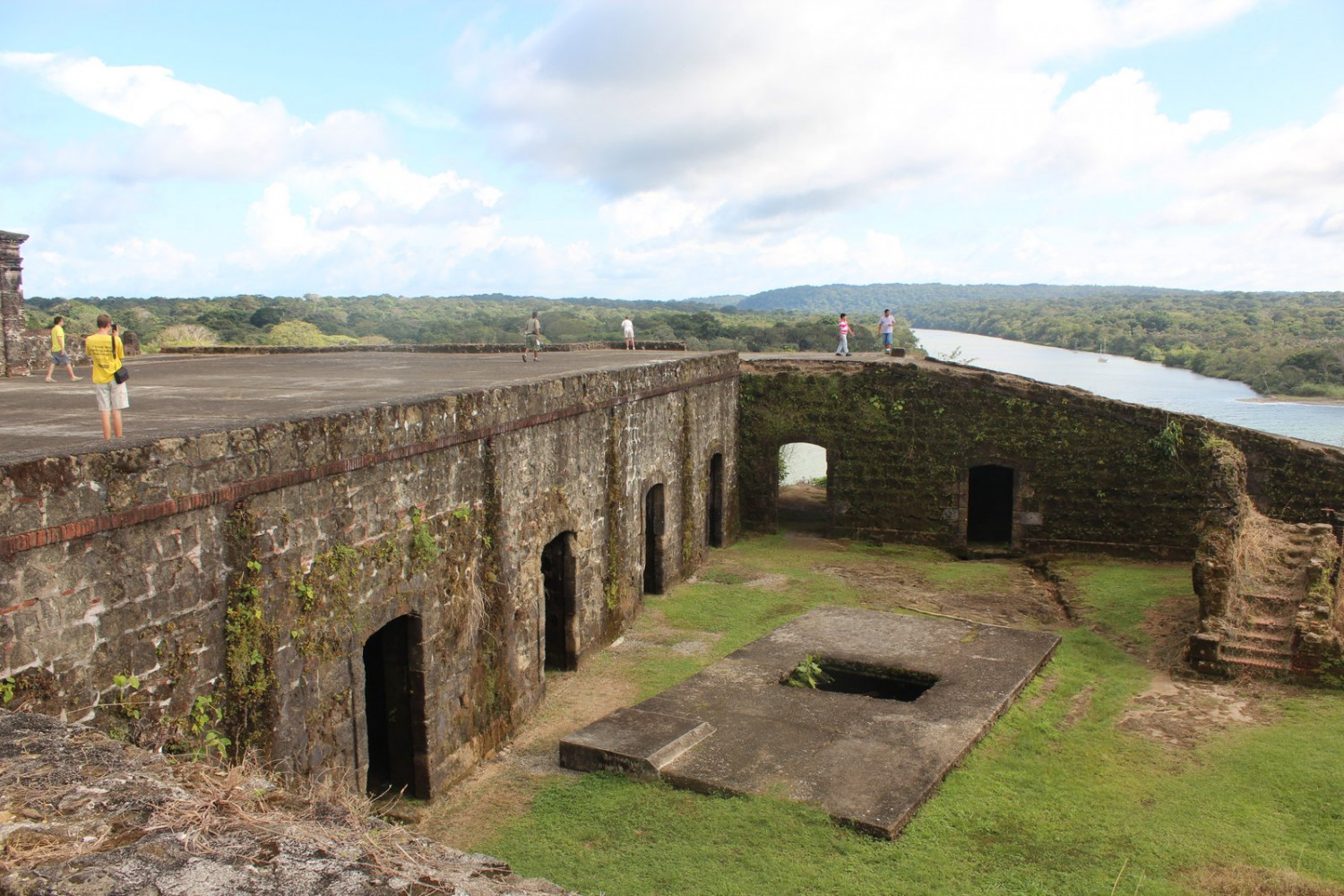
Panama has some delightful cruising on the Caribbean side and the Pacific side. People tell me the San Blas Islands are stunning (grrr!), and the area around Shelter Bay Marina has many delightful walks with tropical birds and monkeys and is close to a beautiful national park. On the other side, Panama City is a cool city, with a mix of modern steel and glass high rises and old historic buildings. There are some decent restaurants, shopping, and you can get most anything for the boat. The canal museum is one of many fascinating places to visit in town. To get away from the city, Las Perlas is another pretty and remote island group that’s an easy sail from the city. We saw fin whales on the way out there.
So give yourself some time to explore Panama. It's not just that place the canal runs through.
Transiting the Panama Canal can be a once in a lifetime experience, and something you will remember the rest of your cruising and sailing life. It's not something many sailors get to do, so make it special and make memories.
Some pictures from this article are from our transit. Our daughter was too young to handle lines, so we designated her the official snacktician/photographer for the expedition, and set her to take pictures of everything she could when she wasn't baking fresh cookies and heating patties.
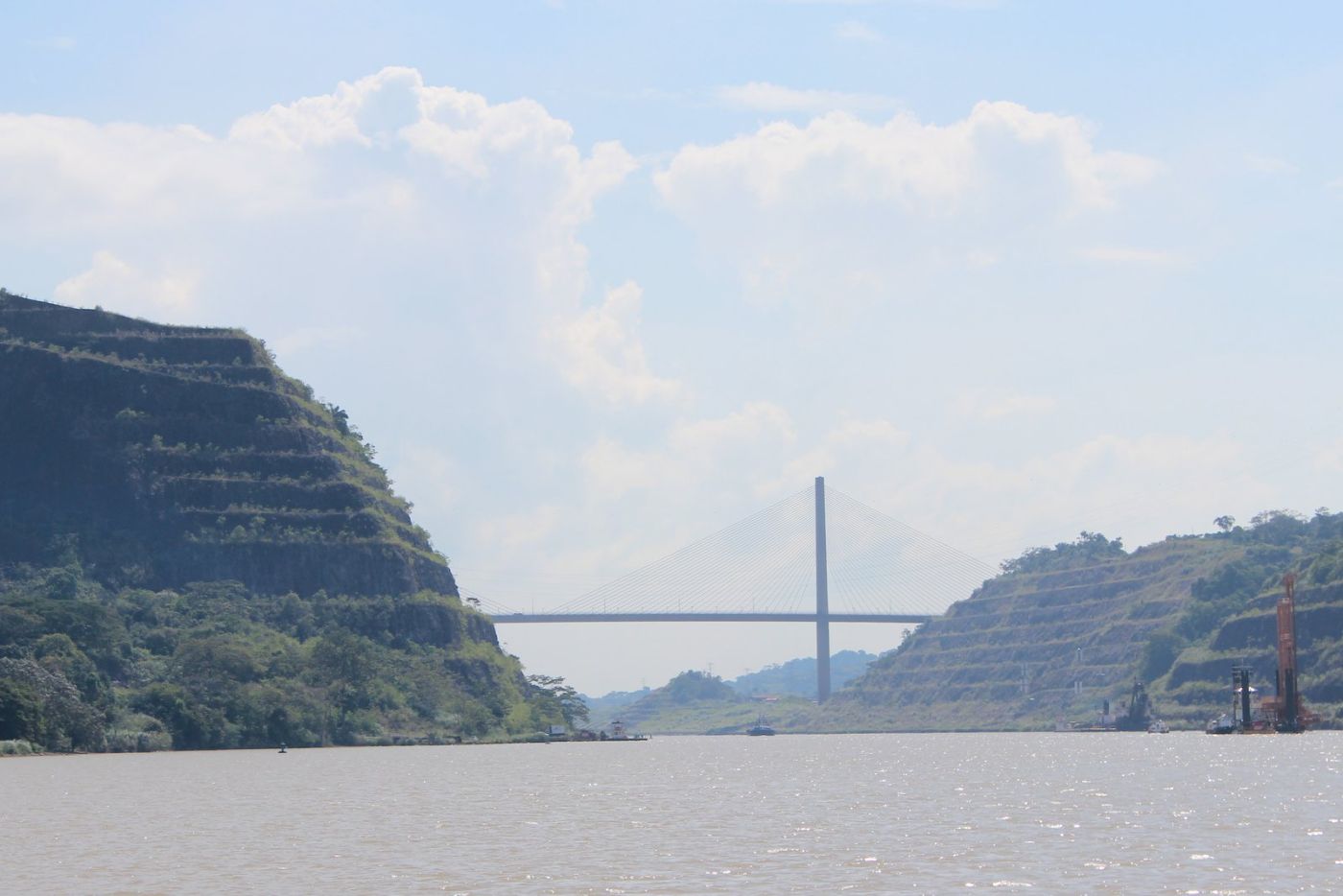
The canal is a modern wonder of the world, especially when you consider it's not all that modern - it was built over 100 years ago. That’s more impressive, since they built it with simpler tools and technology than we have today. To give you a sense of where we were with machinery and construction technology, the Model T Ford was not available when construction started on the canal. They did the heavy work with steam, not diesel. A visit to the Miraflores Locks museum is a must-see for anyone who has made the transit.
As you cross the canal, you'll see both amazing wildlife and signs of the original excavations and project works. We saw crocodiles, birds galore, armadillos, and fish on our crossing. While the canal areas feel busy, parts of the lake transit fell like a boat ride through the middle of a jungle. And you'll see a lot of interesting ships and boats. Up very, very close you’ll see them.
So take pictures, make memories, and enjoy the ride. It's something you'll get to talk about for a long time.
Please and thank you go a long way in every country, and if you can tell a cab driver where you want to go and place an order at a market or restaurant, your time in Panama will be a lot more pleasant. People there are welcoming and nice, but few admit to speaking English if you ask, I suspect because they're worried about speaking it badly .
With even a few phrases, you can make a bridge to help communication. Many times when someone said "no hablo Inglés," once they realized how truly terrible my Spanish was, they would give their own wobbly English a try. It was always better than my Spanish. So do yourself a favor and download Duolingo or some other app now and start practicing your manners and directions.
Leave a comment
You may also like, how long does it take to sail across the pacific.
If you time it right and miss the cyclone season, sailing across the Pacific can amount to some incredible cruising experiences. The world’s largest ocean contains …
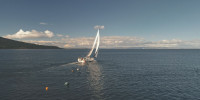
The Safest Sailing Routes Around the World (Which to Avoid)
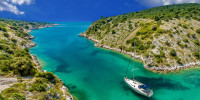
How Long Does it Take to Sail Around the World?
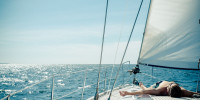
Everything You Need to Sail Around the World (by an expert)

Do You Need a License to Sail Around the World?
PANAMA CANAL TRANSIT TOUR
Partial transit through the Panama Canal begins with entry into the Miraflores Locks, where our ship starts an ascent of 18 meters in two stages, leaving behind the waters of the Pacific Ocean.
Next, we enter the Miraflores Lake, a small oasis of fresh water that separates the two locks on the Pacific side of the Canal. We sail peacefully through its waters until we reach the Pedro Miguel Locks, where the ship ascends another 9 meters, providing a breathtaking panoramic view..
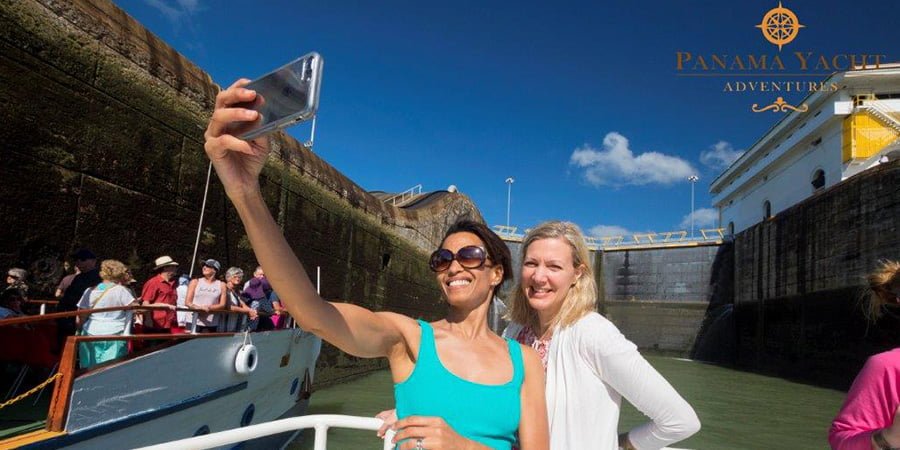
Once we exit the locks, we will spot the Centennial Bridge, an architectural marvel that stretches over the waters.
Continuing our journey, we venture into the famous Culebra Cut, nicknamed for its winding curves resembling a snake’s movement. We sail 13.7 kilometers along this picturesque cut as we head towards the fascinating area of Gamboa, home to the facilities of the Dredging Division of the Panama Canal Authority.
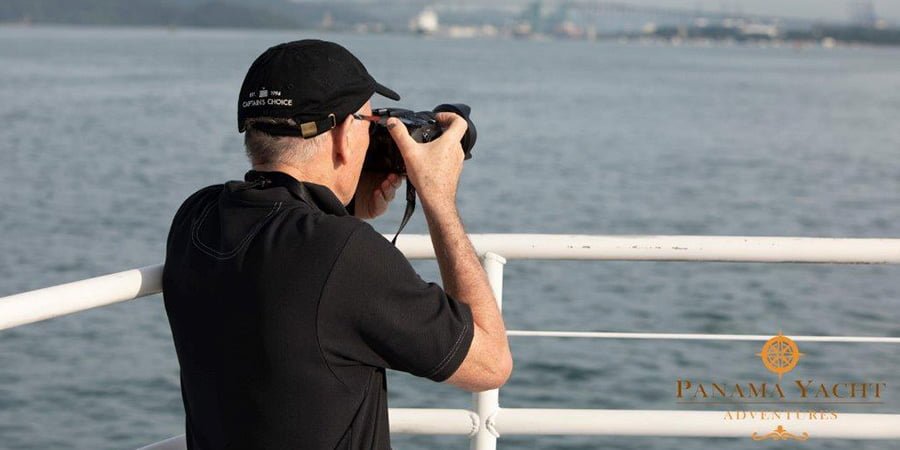
Upon arrival at these facilities, passengers disembark to make way for the next part of the adventure. They board our comfortable buses that will take them to the Flamenco Marina. During this journey, they can enjoy the lush landscapes of the region, on a trip that lasts approximately 45 minutes.
This partial tour of the Panama Canal is an experience that combines the wonder of engineering with the natural beauty of the surroundings, offering our passengers an adventure filled with awe and excitement. We invite you to join us to discover the grandeur of this engineering masterpiece and the splendor of Panama’s nature. We look forward to welcoming you to this unforgettable experience!
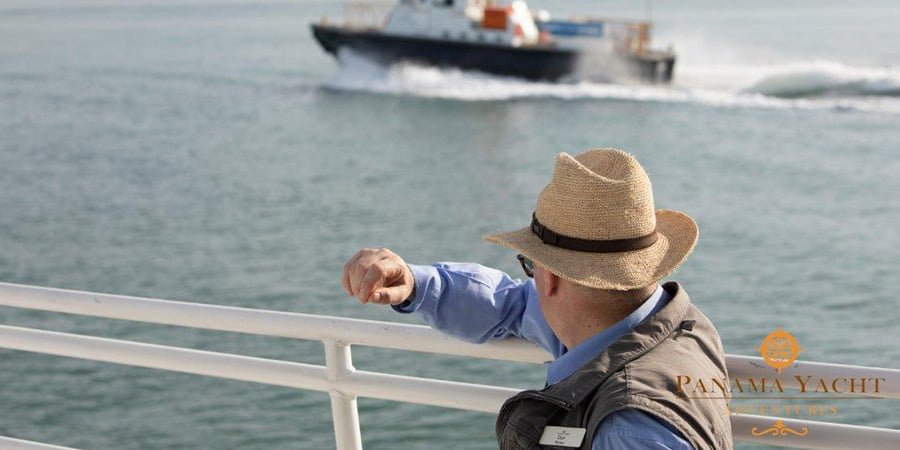
Saturdays and Sundays
The schedules are confirmed one day before departure by the Panama Canal Authority.
PRICE PER PERSON
| National and Foreign Adults | $145.00 |
| National and Foreign Children (3 to 12 years old) | $95.00 |
| Foreign Adults | $145.00 |
| Foreign Children (3 to 12 years old) | $95.00 |
| National/Resident Adults | $95.00 |
| National/Resident Jubilees | $85.00 |
| National Children (3 to 12 years old) | $75.00 |
FOR PRIVATE GROUPS, CLICK HERE
Enjoy this great experience with us.

Reserve Hoy
Mel On The Go
Living on a Sailboat exploring the world

Transiting The Panama Canal By Sailboat

The Panama Canal, called “the path between the seas,” is the easiest route from the Caribbean to the Pacific. Completed over 100 years ago, it is a man-made marvel of engineering. Transiting the Panama Canal by sailboat is a bucket-list activity for those trying to circumnavigate, or get between oceans.
The land divided, the world united. Motto of The Panama Canal
Hiring an Agent Versus DIY
It takes a lot of paperwork to get through the canal! We used an agent to alleviate some of the work. As Panama Posse members, we get a discount on the Canal agent. It saved us a lot of time, paperwork, and hassle. While it may be cheaper, if you don’t use an agent, you have to pay everything in cash. This means multiple trips to ATMs, which have very low maximum daily withdrawals. ATMs aren’t easily accessible outside of Panama City.
How Much Does it Cost?
Transiting The Panama Canal on a sailboat isn’t cheap, even for a boat under 65 feet! Here’s a breakdown on current pricing to transit:
- Transit Tolls up to 65 ft 1,600.00
- Transit inspection 75.00
- Canal Transit Security fee 165.00
- Canal EDCS 75.00
- Fenders & lines rental 75.00 (no tires)
- Bank charges 60.00
- Agent service Fee 350.00
- Cruising permit 235.00
- Line handlers for transit $100 each (1 captain + 4 line handlers over 18 years old)
- Landing equipment and line handlers after transit at the Balboa yacht club $12
All prices are in USD (Panama $ is tied to US) and cost us, with our Panama Posse discount, $2,275.
Transiting the Panama Canal by sailboat is not cheap, but it’s a truly unique experience, and gets us to The Pacific a lot faster than any other way!
Before Transiting the Canal
After you’ve paid, you can’t just drive your boat up to the entrance to the Panama Canal. You’ve got to do some advance planning and preparation.
Boat paperwork
First, you need to provide paperwork before going through the Panama Canal. We always have to have our boat papers proving we own Sava on hand when we arrive in a new port, and we also needed them before transiting the canal. Boat papers include basic facts about ownership, boat type, and measurements. Passports with entry stamps and Sava’s crew list were also sent along. Additionally, I submitted a list of our last 10 ports of call, which took us all the way back to Antigua and Bonaire in 2020 ! Finally, we needed proof of Covid vaccine or negative test, which is common these days.
Getting measured
Even though we submitted all the facts and figures about Sava, we still needed to get her measured before we could even reserve a date for transiting the canal. We emailed our agent on a Friday to make an appointment to be measured. Our timing wasn’t the best as it was the week before Carnival, and even though the formal festivities were cancelled due to Covid, it still meant holidays in Panama.
The measuring takes minutes. We waited most of the morning on our boat, doing other projects and taking turns staying aboard, and we were the last of 15 boats he hit that day. He came onboard with a measuring tape and measured Sava from bow to stern. Easy.

Setting a Transit Date
After the measuring was done, our agent asked us if we would like the first available date or a specific date in the future. We asked for the soonest, which was a little over a week later. We could have asked to be on the waitlist for an earlier date, in case another boat cancelled, but as we had friends flying in for the transit, we stuck with the set date. Once we had the transit date, March 12th, we had to wait until the day before to learn if it would be a one day transit, beginning at 430AM! or an overnight, beginning in the afternoon. On the overnight, you spend the night moored in Gatun Lake, between the seas.

Arranging Crew
As you saw in the list of costs, hiring crew, or line-handlers, is a possibility. Some Panamanians make a living, or at least a side-hustle, out of crewing on different boats and assisting them through the canal. Many different cruisers chose this option, either fully staffing their boat with 4 professionals or supplementing their crew.
Lucky for us, we had friends who wanted to join us for the transit. It’s a cool experience, especially if you’re a boat person. Brian and Deb from S/V Sea Forever, and our friend Peter, came aboard Sava for line handling duties.
TIP: If you are planning to take your own sailboat through The Canal, sign up as a linehandler on another boat beforehand. We gained excellent experience doing this for our friends on Anixi in November, and felt confident and relaxed when we took Sava on the transit.

Last but not least, everyone pays for an advisor. The advisor communicates with the people on shore at the canal to arrange our safe transit, so is a crucial component of a Panama Canal transit by sailboat. Our advisor has done it for years! In total, each sailboat needs the Captain, 4 linehandlers, and the advisor, so 6 people on board while transiting the canal.
Lines and Fenders
The day before the transit, we received delivery of the equipment we’d need for transit: 4 loooooong lines and 8 big fenders. The lines were to connect us to the canal walls, and the fenders to protect us from the canal walls and other boats in the canal. These were delivered to us on our boat at Shelter Bay Marina.

Transiting the Panama Canal by sailboat is daunting. But, once you get into the moment and tackle what has to be done, it works. The Canal has been operating for over 100 years, transporting boats daily, 24/7, so they know what they’re doing.
For us, it went like this:
After the advisor boarded, we motored to the entrance to the first set of locks, Gatun Locks. We nested up to another sailboat, Broadsword. We passed our bow line and stern line to Broadsword, which they attached at their bow and stern, respectively, and we attached their spring line (in the middle) to Sava’s bow and stern. This way we had multiple points of connection and were very stable.

We liked nesting to another boat for two reasons: one, we had company for the experience, and two, we didn’t have to do all that work! If you’re the only sailboat through the passage, every line handler is working the whole time. This way, we only had to handle the lines on the starboard side, while our nested boat handled port side.
Forget what port and starboard is? But that’s easy! Refer to my boat jargon for help !
After the first set of locks we motored to a mooring ball in Gatun Lake where we ate dinner, had a mini celebration that we’d made it a quarter of the way. Then we tried to sleep. We all woke up early, had coffee and some fruit and banana bread, and Francisco came back on board before 8am and had us motoring away. The lake and the distance between the locks takes several hours to cover, so we tried to stay out of the sun, read, rested, and took turns piloting Sava. Once we got to the Pacific locks, we were close to the end: The Pacific Ocean.
linehandler duties
Linehandlers are very important to keeping the boat stable in the locks of the Panama Canal.
The linehandlers retrieve the monkey balls that are thrown by the canal workers, attach them to the boat lines with a bowline, and control the lines as needed during transit.
As I mentioned, we only had to worry about two lines, the starboard lines, so Peter and Deb handled the starboard bowline, and Brian and I the stern while Captain Brian drove.
Basically, the linehandler secures the line so nothing moves until the lock gates close. Once the water starts flowing in to bring us up into the lake, the lines need to be tightened accordingly. When the water emptied to exit us from the lake at the Pacific Side, Brian and Peter had to slack the lines to keep us on place. No one wants their boat scraping the sides of the canal, so keeping the lines in control is important.

In total, Sava transited 6 locks in the Panama Canal. From the Caribbean to Lake Gatun, we transited the 3 upward locks in about ninety minutes. The last locks include one, a short motor, and then two final locks together to bring us down into the Pacific Ocean.
Being tied up to the docks while hundreds of tons of water was being added to the lock (from the Caribbean side) and removed (Pacific side) was incredible.
What surprised me is that we were stunningly stable! We couldn’t feel the water surging or dropping underneath. The only way we could tell it was happening was by looking at the depth chart on the side, and/or looking at the view, which disappeared as we entered, and reappeared as we departed, the canal.

The Panama Canal is one of the top tourist attractions in Panama. In fact, as we neared the end of our transit, we approached the Miraflores Visitors Centre, where people were waving and taking photos of us. It was pretty weird to be part of the sights! You can also watch boats go through the canal on their webcams, and one of our friends sent us a shot of our transit!

A Great Transit
So many things can go wrong, and we heard a LOT of horror stories in the weeks leading up as we waited in the marina for our transit date.
Since completing the transit, we’ve heard more horror stories: of boats crashing into each other or into the wall, and of huge surge from the big ships exiting the canal after the sailboats were untied.

But our transit was stress-free and fun! We are so grateful.
We are now in the Pacific Ocean. It took us less than 24 hours to cut through a country and get from The Caribbean to The Pacific in our little 46 foot monohull. It seems like magic.
How Long Does it Take?
If you’re assigned the 430am time, the trip takes a little over 12 hours, from what I hear. We were given a 3PM time, but didn’t actually start until close to 5PM, and were out into the Pacific at approximately 3:30PM the next day. When we did it with our friends in November, it took a little over 24 hours.
It’s Done
So far, the Pacific doesn’t feel that different from the Caribbean, but we haven’t moved yet. We know we’ll be back to dealing with tide tables soon, but the most important is preparing ourselves for our biggest challenge yet: an ocean passage.
We were exhausted when it was done and spent a couple days just catching up on sleep and turning the boat back into our home. While we do feel a sense of accomplishment, we’re not spending a lot of time reflecting on it. We’ve got to get ready for the next adventure!

Share this:

Read More Posts
Author: Mel
Living aboard a sailboat, blogging about the places we visit and the adventures we have. Love hiking, cycling, scuba, animals and adventure. View all posts by Mel
7 thoughts on “Transiting The Panama Canal By Sailboat”
Great blog, thanks. Transiting the canal is on my bucket list. I’ve always wondered what the costs were.
You’re welcome, Sven! Price is the first question I got asked a few times, so thought I should include it. Hope you get to do the transit one day soon! If you’re in Panama near Shelter Bay, go on the Facebook group, or post it on the physical wall at the marina. People are always looking for line handlers, and now is the season.
Wow! This seems like an incredibly memorable experience. I grew up sailing so I know I would really enjoy this kind of trip. I love how adventurous you are!
Amaaaazing post! I was looking forward to this one so I am so glad you shared! It is pretty surreal to see your teeny boat with the huge ship right behind you! It is a very costly trip, but wowza, what a cool adventure!
What an incredible adventure!! There’s so much involved with moving through the canal. It must be a relief to be through! Thanks for sharing your experience.
you got a typo, scary one (I was like, “fuck it that’s too much I’ll sail around”
* Transit Tolls up to 65 ft 1,6000.00 (sixteen THOUSAND dollars)
Thanks for catching that and letting me know, slick. I’ve fixed the typo. Do note that prices rise periodically, so what we paid in 2022 may not be the same next year. Hope you get the chance to go through! It’s a cool experience.
Leave a Reply Cancel reply

Sailing Through the Panama Canal, (With Prices and Pictures)
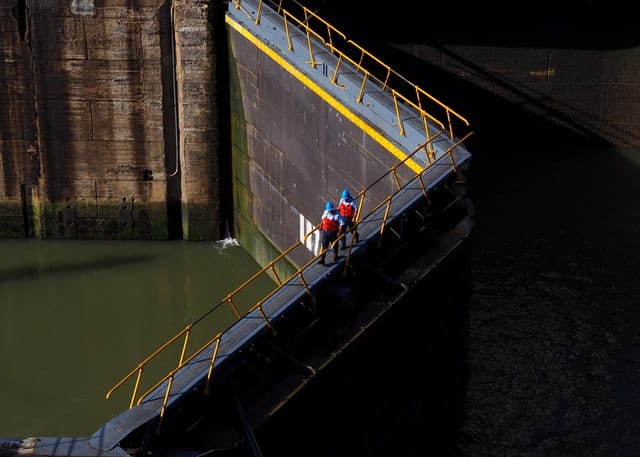
As an Amazon Associate, we earn from qualifying purchases. We may also earn commissions if you purchase products from other retailers after clicking on a link from our site.
The Panama Canal is what connects the Pacific Ocean with the Atlantic ocean through an artificial 82 km long waterway; the Canal was opened in 1914. It was a significant engineering feat that still stands! Before discussing the different aspects of the Panama Canal, I want to deal with the most frequent question. How much does it cost to sail through the Canal?
| Smaller than 65ft | 1600 | 900 | 2500 USD |
| 65-80ft | 2400 | 900 | 3300 USD |
| 80-100ft | 3500 | 1000 | 4500 USD |
| Greater than 100ft | 4100 | 1400 | 5400 USD |
2020 is the first time since 2012 that the prices have been raised, and it hit hard on us small boat cruisers under 50ft. The previous base toll was 800, and now its 1600 USD.
This does not include all the extra you need to make it safely through the Canal.
| Line handlers | 100/person |
| Cruising permit | 197 |
| Inspection | 54 |
| Agent | 350-500 |
| Lines/fenders | 50-250 |
| Security | 135 |
| Fender return | 14 |
Table of Contents
Expenses Breakdown
The Costs are broken down into two categories, the actual toll to be allowed to enter the Canal, and the extras needed to pass through the Canal and country safely.
The basic toll is reasonably straight forward; the Panama canal official will measure your boat, including everything. You have a dingy on the back or solar panels that are sticking out, which adds extra length that you might have to pay for.
If your boat is close to crossing over to another toll category, I would definitely ensure that you minimize the risk of the official measuring your boat longer than it is. By the end of the day, it’s by their ruler that you will have to pay.
One example from the magazine yachting world is when they had to deflate their dinghy to get inside the 50ft limit, saving them a couple of hundreds of dollars.
Line handlers are the specially trained people you can hire to help you manage the lines when you’re in the locks. This might not seem like a big deal, but the locks in the Panama canal are unique kinds of beasts that need extra attention and skill.
The requirement is 4 line handlers on every boat, so if you dont have your own, you will have to hire some. Another option is to recruit someone locally or from another ship.
If you find another sailor you can exchange favors, first they helo you cross the Canal, and when your boat is on the other side, you take public transport back and do it all over again, but this time on the ship of your friend.
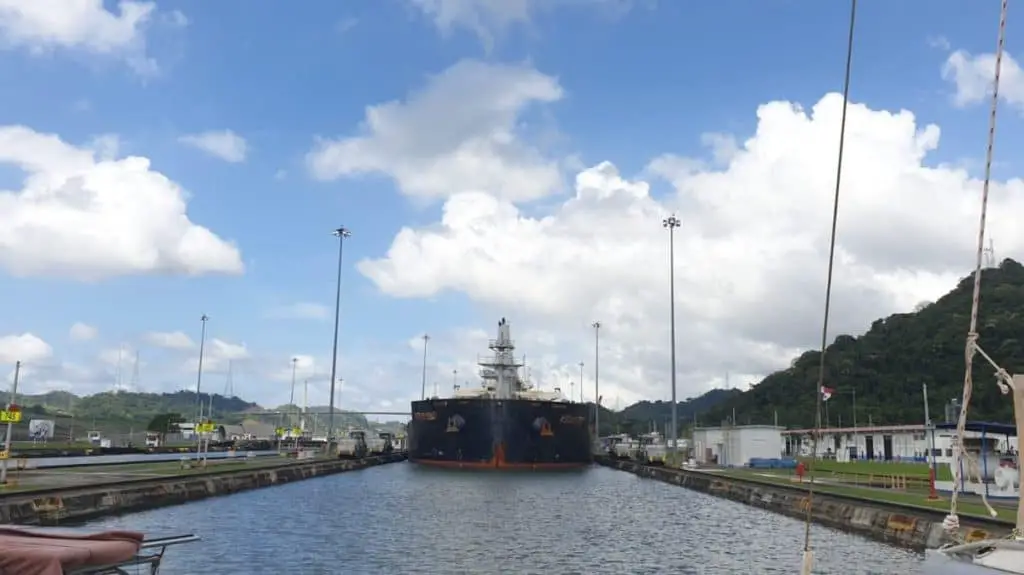
That’s an excellent way to make friends!
A cruising permit isn’t something specific for the Canal but applies for the entire country if you want to sail inside its borders. A fixed fee of 197 USD.
Inspection , this is when a Panama Canal comes to measure your boat and make sure you pay the right amount of moment and also get the proper permit.
Agent , if you want somebody to take care of all the hassles, then an agent might be a good option. Basically, what they do is take care of all contact with the local authority, help with payment, guide you through the Canal and foremost have a lot of experience.
The agent also covers the buffer fee, something you will have to pay to cover any cost incurred during potential damage during your transit. This will be returned to you once you exit the Canal.
Extra line and fenders, since the locks are enormous and the walls are mainly cement and other rough edges having big fenders and 125 ft lines, are needed. If this is something, you feel that your low on, you can rent or buy them from your agent or locally.
It might seem like a ridiculous amount of money to go through a canal, but considering the massive cost (several billion dollars) to make it, it kind of makes sense. Many ships are using it every day, it is also no strange thing that it represents 12% of Panama GDP.

How Long Does it Take to Sail through The Panama Canal?
Sailing through the 37 Mile long Panama Canal will take around 11 hours on a sailboat, if on a bigger ship, the official time is 8 hours.
This includes all of the six locks and crossing the artificial lake Gatun.
This might not seem only like a long day of sailing, but for everyone that has been in a lock, you know how stressful it can be, then imagine being in a lock on steroids, such as these.
Falling asleep probably won’t be an issue that night.
If you’re thinking, but wait, aren’t there 12 locks? Well yes, but you won’t have to travel through all twelve to get to the other side; there are some parallel locks to allow for more traffic and avoiding ques.
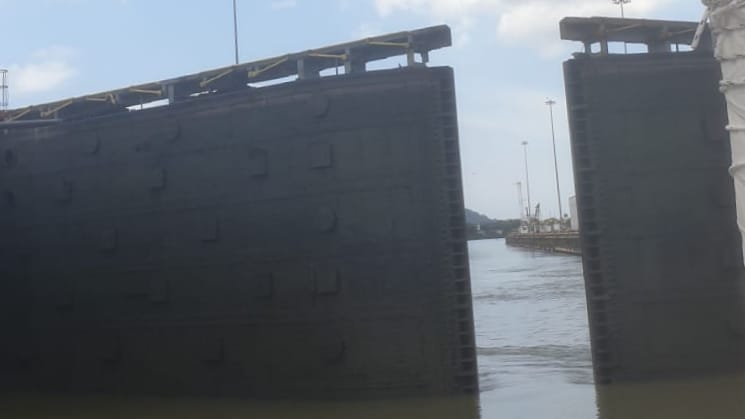
4 Tips On How To Safely Get Through The Panama Canal
Use an agent.
I think this is really useful, it is tricky enough with an advisor on board, but not having someone to ask all the questions that will arise just feels less safe. and if your lucky, the advisor might also be interested in telling you a short story about the places your pass. So basically, it includes a free travel guide.
Practice Before You Go
Make sure you have practiced with your crew before you leave for the locks. Practice how you want to quickly and tighten the lines. Figure out who does what and when.
When the advisor comes on board, make sure you two have a perfectly clear plan and understand each other.
Make sure you have a contingency plan, what do we do if X happens or Y. this is very important and makes small mistakes stay small and not fatal.
Keep Energy Levels High And Be Ready
Being on full alert for a full day of 11 hours might not be possible, but you definitely want to sum up your energy for the “lock-up” and “lock-down” procedures.
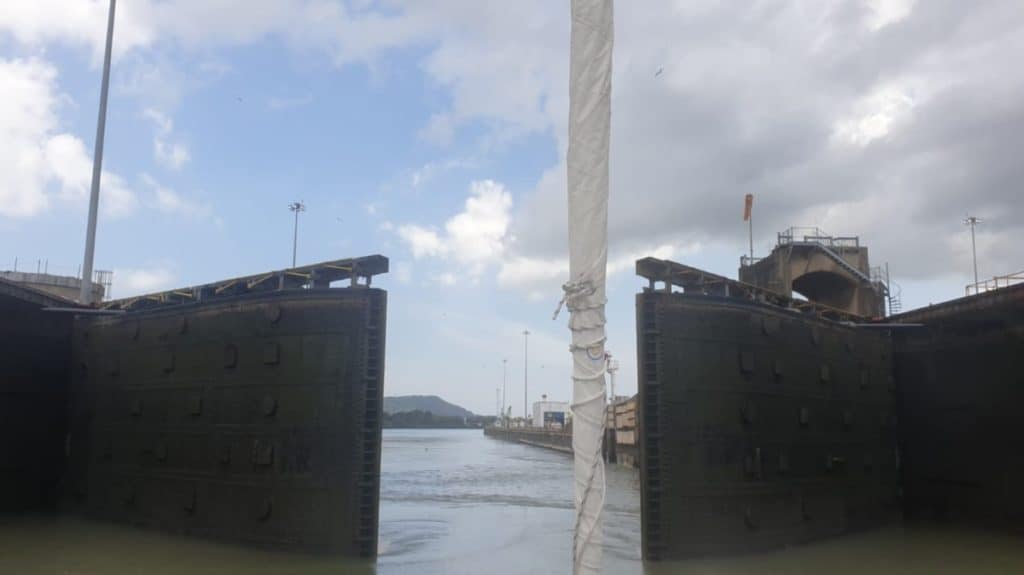
Things can change quickly; you might get orders from your advisor that needs to be executed now and not in 30 seconds, so make sure you are awake and ready to work.
To make this work bring many snacks and stuff to drink, i is a good idea to bring some energy drinks or coffee to drink a few minutes before a lock just to get ready.
Remember That You Are The Captain
Even if you get an agent that will support you with advisors, they are not all of the same calibers, and the responsibility of the ship always belongs to the captain.
Building trust between you and the advisor is essential since many devices may not be intuitive and sometimes feel wrong.

How Much Time Does The Canal Save?
Going through the Canal is not a must, there are other options, but this isn’t necessarily cheaper or safer, here’s how much time you will save and why.
Going through the Panama Canal will save you 44 days of sailing if averaging 7.5 Knots. The Canal crossing is 8000 Nautical miles shorter since there is no need to go around Cape Horn of South America.
One big time-saver is the vast amount of distance that needs to be covered if you opt not to go via the Canal. Eight thousand nautical miles or 9307 (land) Miles is a long way.
There are also other things to consider, such as safety, going around the horn is not a small feat, all through the Canal can be tricky, sailing through patches of ice and some of the worlds toughest weather patterns is not something to take lightly either.
The Cape Horn is where the Atlantic meets the Pacific, and this is not your ordinary family reunion, this is more of a “throwing-stuff-at-each other” Christmas dinner.
I’m trying to say that this is a place known for its sudden and very hard gusts of wind at the same time as to vast oceans meet, it’s bound to be an exciting trip.
And since most cruisers tend to stay in warm weather climates, there is also a need to update the boat and the crew’s wardrobe since the climate is much colder going that far south.
Not only will you need to have heaters on board, but instead of sailing in shorts and short and taking an occasional swim, you must now wear full winter and watertight gear.
And in a cold climate, everything becomes harder and less fun to do.
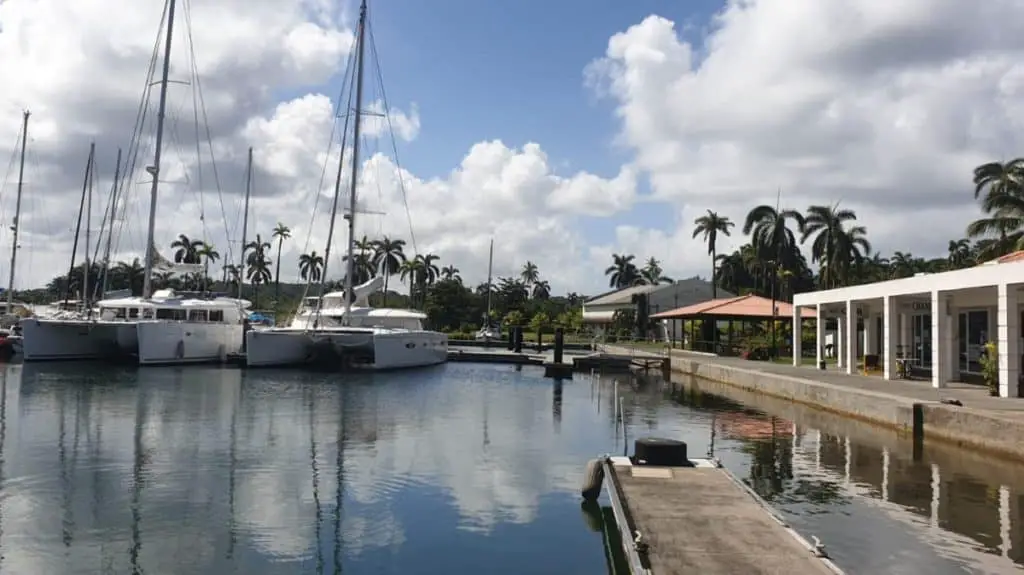
Why is The Panama Canal so famous
I would say that there are many reasons for this, for one it has a lot of history. The French started building it in 1881, and after widespread diseases, any many fatalities the money ran out.
When the US finished the project, it took it over 1903 and ended it around ten years later with the first boat passage in 1914. Just as now, the main incentive was shipping goods from the Atlantic to the pacific (and vice versa) faster and safer than before.
The US paid a total of USD 9,169,650,000 in today’s value to complete this engineering dream.
Why Use Locks and Not a Sea Level Canal?
The most intuitive way to build a canal is to dig a trench and fill it up with water, at least for us non-engineers. This was precisely what was proposed to President Roosevelt at the time.
But in 1906, when the Chief Engineer of the Panama Canal John Frank Stevens saw the river Chagres in full flood, he stated that the sea-level option is not viable. A lock system going up to, and then down from, the Gatun lake would be a practical option.
Using a sea-level system would bring far too much current and would be very hard, if not impossible, to transition safely.
The project resulted in both the largest dam, the Gatun dam, and the largest artificial lake, the Gatun lake, at the time.
Ways To Transit The Panama Canal
You can go in either direction and below is a shortlist of general guidelines when transiting and moving through the canals.
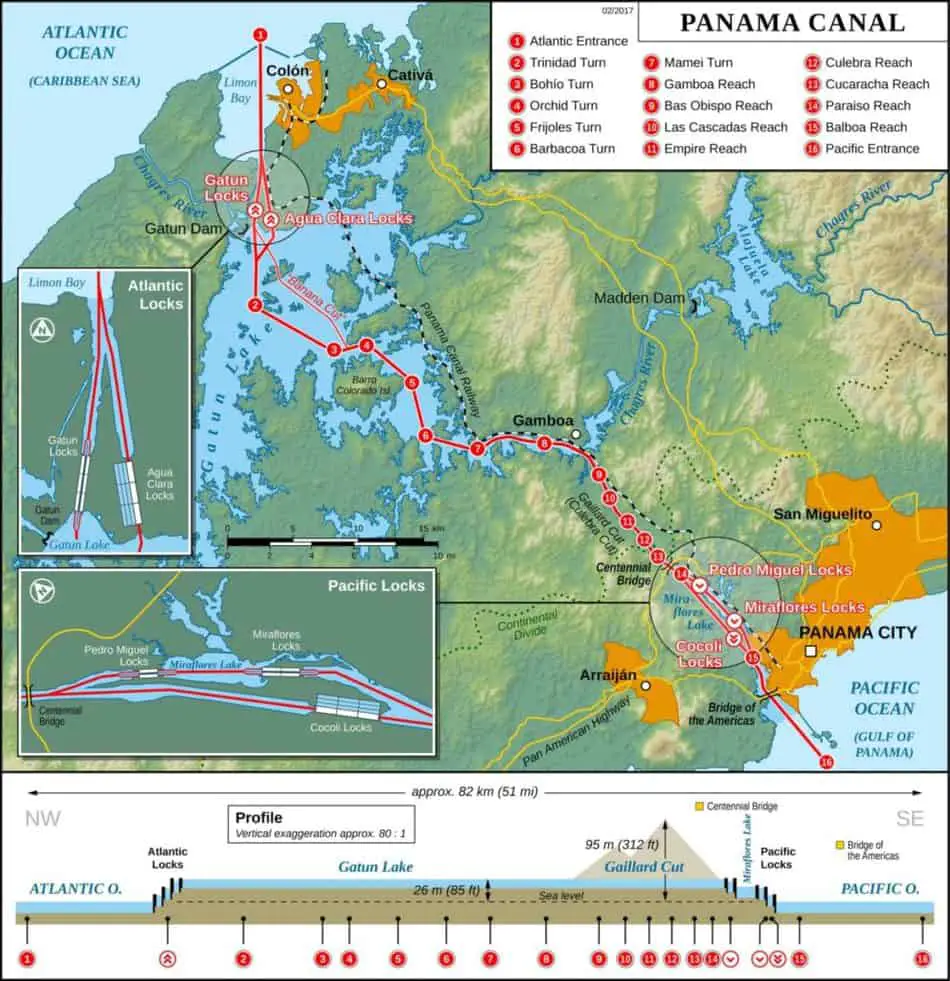
The first step is to anchor and get ready for the ACP to call you up and let you know that your time has finally come. And I say finally since many wait for days before they have a slot open that they can take.
Now you will transition through three locks taking you all the way up to the Gatún Lake, from here you have to options, either you anchor to about for the night.
If you’re on a fast boat that can do above 7.5 knots on motor, you might be able to complete it in one day.
General Rules When Locking UP
When locking up through the Panama canal, the big ships usually go first, and small guys stay in the back.
Since its time to fill the chamber with a lot of water, you can expect there to be powerful turbulence, allt his water will fill up the chamber in only 10 minutes.
When the journey upwards begins, make sure you have position yourself in the middle of the lock, thus getting out of the way from the tricky redirection of currents that occurs next to other objects such as the chamber walls or other ships.
Once the locks are open, you have a giant ship ahead of you, and when that beast wants to get going and the props start turning. You guessed it yours in the way of their prop wash.
This will create some confusing waters, and letting go of the lines to soon might not be your best option. Remember that you are still the captain and let go when you feel comfortable.
I find it easier to lock up since you will now feel the slack of the lines when the boat is moving up, and all you need to do is take up that slack, and you’re perfectly safe.

General Rules When Locking DOWN
When locking down, often the large vessels will now be behind you, thins means a couple of relevant things to you.
Firstly it’s nice to know that there is not much turbulence in the water, but some other effects are to be aware of. Since you are probably sharing space with other huge ships when the flood of water hits its hull, it will be redirected outwards, and outwards of the big boat is where you are.
This is something for the line handlers to be aware of; it might look all nice and calm, but make sure everyone is ready for the underwater currents that might grab hold of your hull.
This redirection also leads to a somewhat strong current of around 3-4 knots when the locks fill up.
Since you are now going down, it is crucial that line handlers be soft on their hands and let out enough line, so the boat doesn’t get lifted and too much weight is placed on the cleats if your ship is moving too close to the side of the lock then maybe its time to ease out a little.
Going Through the Canal as a Yacht or Raft?
If you hire an agent, chances are that they might take you and one or two other boats and make them into a raft. this will make you and your new friends tied together going up and down the locks but you will still be able to sail on your own in between.
This might feel a little awkward at first but is standard practice to ensure you have the safest possible transit.

Fun Facts About The Canal
- The most expensive trip through the Panama Canal: Norwegian Pearl 375,600 USD.
- The Cheapest trip through the Panama Canal: 0.36 USD Mr. Haliburton, swimming.
- The Largest vessel to transit the Panama Canal: Neopanamax Triton, 168 feet wide, 1,211 feet long.
Owner of CatamaranFreedom.com. A minimalist that has lived in a caravan in Sweden, 35ft Monohull in the Bahamas, and right now in his self-built Van. He just started the next adventure, to circumnavigate the world on a Catamaran!
Leave a Reply Cancel reply
Your email address will not be published. Required fields are marked *
Save my name and email in this browser for the next time I comment.
Recent Posts
Must-Have Boat Gear for Catamaran Sailors!
Sailing is probably the most gear-intensive activity I've ever done; there are so many decisions to be made about what gear to buy now, for tomorrow, and what to definitely never buy. The gear on...
6 Best Trailerable Trimarans For Bluewater and Coastal Sailing
Having a boat costs a lot of money, even when you are not using it, marina fees, etc. And once it is in the water most sailors never go very far from their "home marina" and sailing will be somewhat...
Sailing the Panama Canal
THIS POST MAY CONTAIN AFFILIATE LINKS. PLEASE READ OUR DISCLOSURE FOR MORE INFO.
Last Updated on September 13, 2023 by Amy
Sailing the Panama Canal is one of the most amazing experiences of our trip.
It is expensive to get your boat through, but getting to see the Panama Canal up close and personal is a once-in-a-lifetime experience, and sure as heck beats sailing the long way around.
You don’t have to have a boat to have your own canal experience, all it takes is a bit of travel and some luck and you can sail the Panama Canal FOR FREE!
Plus, Panama is a fascinating country to visit. While we would have liked to stay longer and sail to places like Bocas Del Toro , San Blas Islands, and Las Perlas, it just wasn’t in the card for us!
Note: prices are based on our experience in 2016 and are subject to change.
Table of Contents - Click to Jump
Planning to Sail the Panama Canal on Your Boat
Shelter bay marina.
Shelter Bay Marina is definitely the hub of yachties doing the canal transit. It’s a convenient place to get work done, pick up crew, and make your plans. It’s also got quite the cruising network. We attended happy hours, domino games, movie nights, and went on walks with the pleasure of other cruisers for our company. Use caution though, as many boats get “stuck” in Shelter Bay.
Read our tips & tricks for staying at Shelter Bay Marina .
Should You Use an Agent?
In Grenada, we contacted several agents for Panama, and we decided on Roy Bravo. We kept in touch with Roy on our passage over to Panama, and he met us a few days after we arrived.
Our Agent Experience
It is not required that you use an agent, but there are a lot of difficulties that the agent will help you with. For example, we didn’t have to go into Colon to clear into the country, Roy took care of that for us. We also didn’t have to post a bond, which saved us from spending I think $800, which we would get back in Panama City but might have to wait to receive it. Roy also saved us from a trip to the bank to post that bond. Also, Roy arranged our fumigation certificate, which is required to enter the Galapagos.
We had hoped to meet with Roy, clear in, get measured, and then leave to spend some time in either the San Blas or the Chagres River. However, we decided to make a few trips to Panama City instead, so we kept the boat in Shelter Bay Marina. When we met with Roy, he walked us through the process, gave us advice, and scheduled the measurement.
Organizing without an Agent
Our friends on S/V Blanchette didn’t use an agent, and it sounded a lot more complicated. Overall, we paid Roy $450 for the “Transit Agency Fee”. The toll itself was $800, in addition to several other fees. It was great to work with Roy, we highly recommend him. You can reach him at roybravo67 at yahoo dot com.
Measurement
A few days later our admeasurer, Hiro, came. He went through all the paperwork with us for the canal, inspected the boat, and of course, measured. Starry Horizons came in at just over 45′, including the bowsprit. If you are over 50′ there is an additional fee.
There are four options for how a small boat can go through the canal:
- Center solo: you are in the center of the canal behind or in front of a ship, and tie to the wall by four lines, one on each corner. This means you need four GOOD and ACTIVE line handlers to manage your lines. This also means you might have to wait longer to transit, as you’d be going in a row all by yourself.
- Against the wall: you tie to the wall with two lines, your fenders between you and the wall. In this case, you need two active line handlers, but you would need your additional crew to manage fenders and the risk is greater of your boat being damaged against the wall.
- Side tie: a boat (usually commercial) ties to the wall, and then one or two small boats stack up next to the tug. There’s no active line handling as your boat rises or lowers, the vessel tied to the wall handles it.
- Rafted: two or three small boats tie up together in the center of the canal behind or in front of a ship. The two outside boats have two lines each going to the wall. This means you might need two active line handlers or none.
When you are filling out the paperwork with your admeasurer, they will ask you which options you are willing to do. We said all except for against the wall.
At this time of year, after your measurement, the soonest you can transit is 3-4 days later. We opted to wait until the 9th so that all of our friends could make it for the transit. During the slow season, you can transit the next day if you want.
Supplies and Crew
Each boat sailing the canal will have six persons onboard for the transit. There’s the captain, the agent, and four line handlers needed. If you are only double-handed like us, there are a few options for getting additional crew: have friends fly into Panama to crew (for us, we easily found four friends to come, meaning we actually had an extra hand onboard), take on a line handler for free (see below), or hire someone. You can hire a line handler at $120 per person through your agent.
There is a really interesting article titled Shipwrecked on a Panama Canal Transit, written by Carolyn Lambert. As always, don’t come in at night or in a situation you are uncomfortable with relying on information from someone you don’t trust 100%.
Fenders and lines are available through your agent as well. We went ahead and did this, as the thick, long nylon ropes are ideal for transiting and we didn’t want to use our nice dock lines. The fenders provided are huge, as you will see in the photos. All the better to prevent damage. The rates were $120 for four lines and $120 for six large fenders. Some people use tires or rent through other means. Tires will leave big black marks on your boat though.
Going on Someone Else’s Boat
Believe it or not, it’s actually fairly easy to volunteer as crew on someone else’s boat. Everyone needs to have four line handlers aboard, plus the captain and agent. Since most cruising boats are two people on board, cruising boats need three additional crew to go through the canal.
Where to Find a Boat
Most boats travel from east to west in general, and that stays true for the canal. Shelter Bay Marina has a few rooms for let, so you can fly into Panama City and travel down to Shelter Bay. We recommend taking an Uber – it’s a long haul but fairly cheap. There is a train first thing in the morning to Colon, where you can then pick up a taxi to Shelter bay. Or, the cheapest route is to take a bus from Panama City to Colon and then a taxi to Shelter Bay.
How to Find a Boat in Shelter Bay
Once you arrive in Shelter Bay, just as with any boat hitchhiking, there are a few tips to find your boat. Walk the docks every day and talk to people. Post a flyer on the bulletin board. Attend events at the marina like the swap shops and happy hours. A cruisers net operates every morning on the VHF. One of the sections is crew wanted or needed, and there’s almost always someone either looking to crew or looking for crew.
Crewing on S/V Blanchette
While in Shelter Bay, we talked to several boats about crewing for them. Eventually, we met our neighbors just down the dock, a boat named Blanchette. Dave and Stephanie are on a Leopard 44 with their two kids. A friend of theirs from back home in Canada, Taylar, was also flying in, rounding out our four deckhands.
We were very glad to transit with or friends first because it gave us a taste of what the transit would be like for us. And because our configuration ended up being different from Blanchette’s, it was a slightly different experience.
Blanchette went through all the locks rafted up. That meant that two line handlers on each boat really had to be paying attention and properly paying out the lines.
While you are being a line handler, you can expect to have a place to sleep during your one night on the transit, and you can expect to be feed over the two days.
Our Transit Through the Panama Canal
The day before sailing the Panama Canal, Roy came by with our rented lines and fenders. We sent out a link to the webcams so that friends and family all over the world could watch our transit.
Flying A Drone in the Panama Canal
We asked Roy Bravo if we could fly our drone in the canal. He said you have to get permission to fly it from your agent on the boat. Our first set of locks, Carlos said that we could fly the drone, but after a few minutes, security told us we had to bring it down. Edgar, our second agent, said we couldn’t fly it in the lock but we could fly it in the Gatun Lakes.
We had four friends fly in to join us for our transit. Hans, another Helia owner who we originally met in Miami flew in from Brazil. One of my best friends, Sara, flew in with her friends Trevor and David from New York. They were such troopers! Everyone was very easy going and self-entertaining. There was definitely a high excitement level on the boat, as everyone was just excited to be here and participating in such a momentous event.
The day of the transit we departed Shelter Bay at 3:20 pm to head over to the Flatts Anchorage. While small boats can anchor here anytime, most chose not to due to safety concerns and lack of amenities. As soon as we anchored I got dinner ready. I cooked chicken curry, and when our adviser, Carlos, arrived at 5:15, we all sat down to have dinner. Carlos has been an adviser for a long time, and he advised Honeymoon when they went through!
The Gatun Locks
After dinner, we waited for our large ship to come through the channel, and discussed our arrangements to get through. Our configuration and timing changed about 4 times! As soon as our ship passed we upped our anchor and headed to follow our buddy boat, Plane to Sea.
At the first lock, we spent quite a bit of time holding, waiting for the tanker to get settled. Then, one of the tugs for that boat tied up to the wall on their port side. Plane to Sea motored in and tied up to the tug, and then we tied up to Plane to Sea. There is a lot of discussion about who should go where. Generally, we have more maneuverability and horsepower than monohull sailboats, so that factors into the equation.
We were the last boat in, so as soon as we passed through the gates they started closing. We had to wait a little while for the water to start to rise, so we all just kind of hung out on the deck. The best part about this configuration is that the tug does all the work adjusting their lines on the wall. Once we tied Starry Horizons to the tug, we didn’t do a thing!
The Gatún locks are three locks, one after another. After the water went up, the ship in front started up and moved forward. Once they were secured in the next lock, we detached from Plane to Sea and moved backward. Plane to Sea then detached from the tug and moved back as well. It was a tight fit, but this allowed the tug to move forward and secure on the next lock, followed by Plane to Sea and then Starry Horizons.
Gatun Anchorage
After we went up three times, we detached for the last time and instead of moving back, we took off towards the anchorage. We anchored for the night just off of the small yacht club, where we were able to find wifi. After we anchored, the pilot boat picked up Carlo, and we all quickly went to sleep.
Motoring to Pedro Miguel Lock
On the 10th, we woke up at 7 am and got ready for our day with a big breakfast. Our adviser, Edgar, arrived at 8 am and immediately we took off. I made breakfast for him underway (sausage, eggs, and bread). It’s a 28 mile motor to the next lock, so the rest of us settled in for the long haul by busting out the playing cards. When we sailed with Blanchette, we saw several crocodiles, but unfortunately, we didn’t see any this time.
Pedro Miguel Lock
We arrived at the Pedro Miguel lock at about 11 am. It’s just one lock, and we waited a long time for our buddy boats to catch up with us. Again, we had no idea what the arrangement was going to be until these boats arrived. For these next three locks, we ended up having a small cruise ship named Discovery against the wall. We tied up to them, and then another catamaran, a Lagoon 410 named Pavo Real , tied up to us. Once the ship was behind us, the water level dropped and then we detached and traveled the mile to the Mira Flores locks. These two locks have a visitors center and high-quality webcam. At the visitor’s center, people can watch the traffic coming and going through the canal.
If we were to do it again, it’s a great idea to have your website or email address on the boat. That way, anyone on the visitor’s center viewing area can send you pictures they take.
After dropping down twice, the gates opened up to the Pacific! It was a one-mile motor to Balboa Yacht Club, where Roy came out with the launch boat and picked up our fenders and lines. From there, we motored to the La Playita anchorage and settled down. We all took cold showers, toasted some sparkling wine, and got the drone out to take some pictures and video.
After our photoshoot, we piled into the dinghy and went out on the town for a night in Panama City.
Mira Flores Visitor’s Center in Panama City
On Friday all six of us took a taxi to the Mira Flores Visitor’s Center. We walked through the small museum, watched the 10-minute, slightly-cheesy but informative video, and then watched the boats come and go through the locks. We actually had great timing – we saw our friends Lanny and Ginger on Swiftsure go through!
Watch the Video: Sailing the Panama Canal
Panama city for boats.
There are three marinas right by the Pacific side of the Panama Canal: Balboa Yacht Club, La Playita, and Flamenco Marina.
All of these are on the Panama City side (north) of the channel. Balboa YC is closer to town; the other two are out on Flamenco Island, which has a road connecting it to Panama City. It’s very long with no public transportation, so you have to hire a taxi if you want to leave Flamenco Island.
La Playita has an anchorage right in front of the entrance. The anchorage is free but you do have to pay for dingy access.
Waiting to Sail the Pacific
It was an El Niño year when we sailed through the Panama Canal, which means that it was pretty calm out in the Pacific. We waited around La Playita for a bit until we got bored.
We filled up our diesel at Flamenco Marina to prepare for our passage to the Galapagos, and then we went out into the Las Perlas.
This quiet archipelago about 35 miles from Panama City. We first stopped at Isla Chapera . It was beautiful but more remote than we thought – no cell phone service.
We still had a few things we needed the internet for, so after two nights we headed over to La Contadora , the biggest town in the Perlas.
No free wifi, but good cell phone service meant we were able to wrap up a few things (like handling our 2015 taxes!) and keep an eye on the weather. And then we just…relaxed. David’s done a few small projects, but mostly we’ve been reading, exercising, and watching some tv.
For the weekend though, La Contadura got a bit more full. There were several yachts (in the 75′ range) complete with water sports – jet skis and ski boats. Oddly enough, in the center of a bunch of anchored sailboats, a fishing vessel plunked down. They were a bit loud, smelly, and I’m pretty sure they were causing a slick over the water, so we decided to up and head further south.
We anchored at Viveros Island next, and although we were in a large bay, the only other boat there was a catamaran tucked behind an island from us and out of sight. Our 360 view was nothing but beaches (some black sand) and jungle shores.
Cruising Guide to Panama
The best cruising guide to Panama is Eric Bauhaus’ The Panama Cruising Guide . We bought ours at Shelter Bay Marina 2nd hand.
Books on Panama
- Fodor’s Panama
- Empire of Blue Water
- The Path Between the Seas
- How Wall Street Created a Nation
16 Comments
Sounds like a fantastic adventure that I never even thought about or heard of until now! It sounds like Roy was amazing and made this trip perfect for y’all. And that boat WOW it is nice. Thanks for sharing your lovely adventure.
- Pingback: Happy 100th Anniversary: Visit Panama Canal | Luggage and Lipstick
That looks like a fun experience!!
Now I want to fly there and volunteer as a crew 😉 I had no idea it was such an adventure to traverse the canal. It sounds awesome! 😀
WOW! Hope I can traverse the Panama Canal someday via my boat. We’re cruising around the Bahamas currently but maybe in a couple years!
It’s a pretty amazing experience!
I thought it was cool watching the boats cross, but this is such an interesting perspective from someone actually making the crossing!
What a cool adventure! I would really explore the world a bit more from the sea. I just wished I knew how to sail, haha.
No sailing skills required to hitch a ride most times.
Oh, that’s good to hear!
This is such great information! And I loved seeing the A&M shorts and Cowboys hat in your pic!! <3
Haha. Thanks!
Sailing culture is so foreign to me – I’ve paddled through locks before, but nothing near the logistics of this voyage! I think I’d opt for hitching a ride and letting someone else figure out all the hard work! Shelter Bay sounds like a fun place to hang out, though!
Shelter bay was fun. The nearby jungle is wild – we have another post about that. Howler monkeys!!!
Congratulations on a successful passage! I am glad it was such a smooth experience for y’all!! 🙂 Jan / Mom
Leave a Reply Cancel reply
Your email address will not be published. Required fields are marked *
Notify me of followup comments via e-mail. You can also subscribe without commenting.
This site uses Akismet to reduce spam. Learn how your comment data is processed .

No Agent? No Problem! Transit The Panama Canal
Every sailor wanting to go from the Atlantic Ocean to the Pacific (or vice versa) has two options. Take on Cape Horn or transit the Panama Canal (well, technically you can ship your boat but that’s not sailing).
Now, before we go diving into these two options its important to remind ourselves where we are as sailors.
We’ve been sailing for less than two years and only since arriving in Panama have we earned our first swallow. (Sailors earn a swallow tattoo for every 5,000 nautical miles traveled. The circumference of the earth is 21,639 nautical miles. That’s about 4 swallow.)
Ok, back to those two options…
Option One – Cape Horn
Rounding Cape Horn is to sailing what Mount Everest is to hiking. It’s not for newbies. The westerly winds are aptly named the “furious fifties”. It’s known for being a sailor’s graveyard because of the strong winds, currents, big waves and icebergs. We’re not ready to dodge icebergs yet.
Option Two – Panama Canal
The Canal was built across Panama to save ships from having to go all the way around Cape Horn. But, it’s more than a nautical shortcut from one ocean to another. It’s a historic man made engineering marvel. Ships travel up 85 feet above sea level through a series of massive, seven foot thick lock doors. Over 15,000 ships make the crossing between the Atlantic and Pacific Oceans each year. But, only a small percentage of those are small, non-commercial vessels like ours. While transiting the canal is no Cape Horn, it’s still a big deal.
Making the decision to transit the canal was the easy part. Actually transiting the canal requires planning, preparation, extra crew and a fair amount of cash. The expenses to transit the canal add up quick, which is exactly why we wanted to forgo using an agent. Turns out having no agent is no problem. Money saved, experience gained and knowledge shared!
With our line handlers on board, we’re in full geeky excitement mode. Transiting the Panama Canal is a major milestone for any cruiser. But, we’re about to change oceans among massive cargo ships, good friends and family. It doesn’t get any sweeter than this!
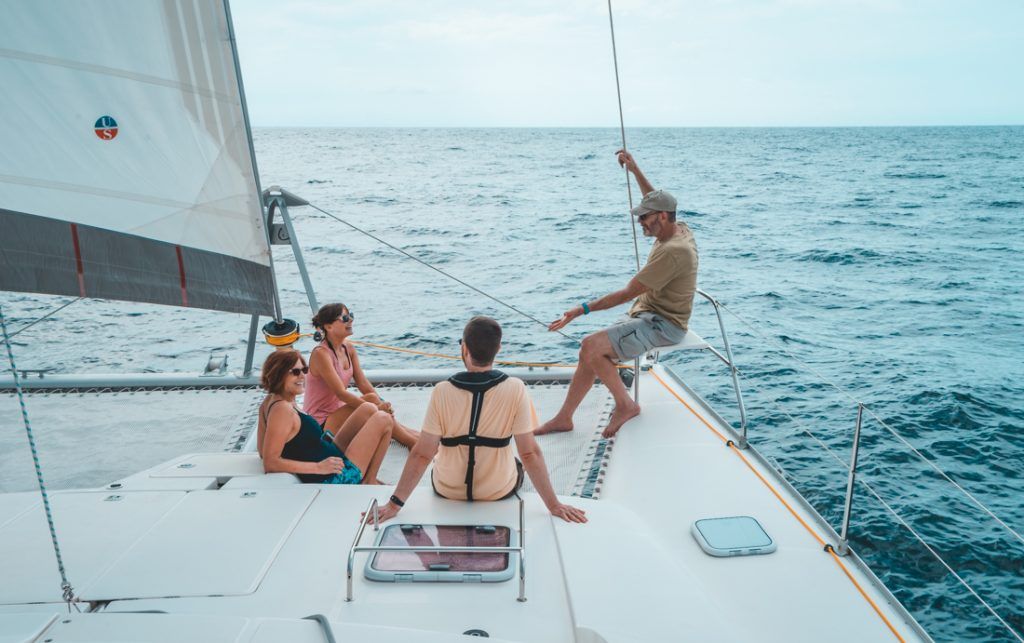
About Our Linehandlers – Meet The Crew
A big thanks to Jason’s Mom (Mary), Peter and John (AKA The RV Geeks) for making the trek out to join us. If you are an RV’er or even a DIY’er you probably already know about The RV Geeks. If not, you’ll want to check out their website and YouTube channel: The RV Geeks . As for Jason’s Mom, she owns a mineral makeup company based out of Dallas called Mineralogie. Having friends & family that can set their own schedules is a major bonus for last minute requests such as “Hey, we’re going through the canal in 10 days…wanna come?”
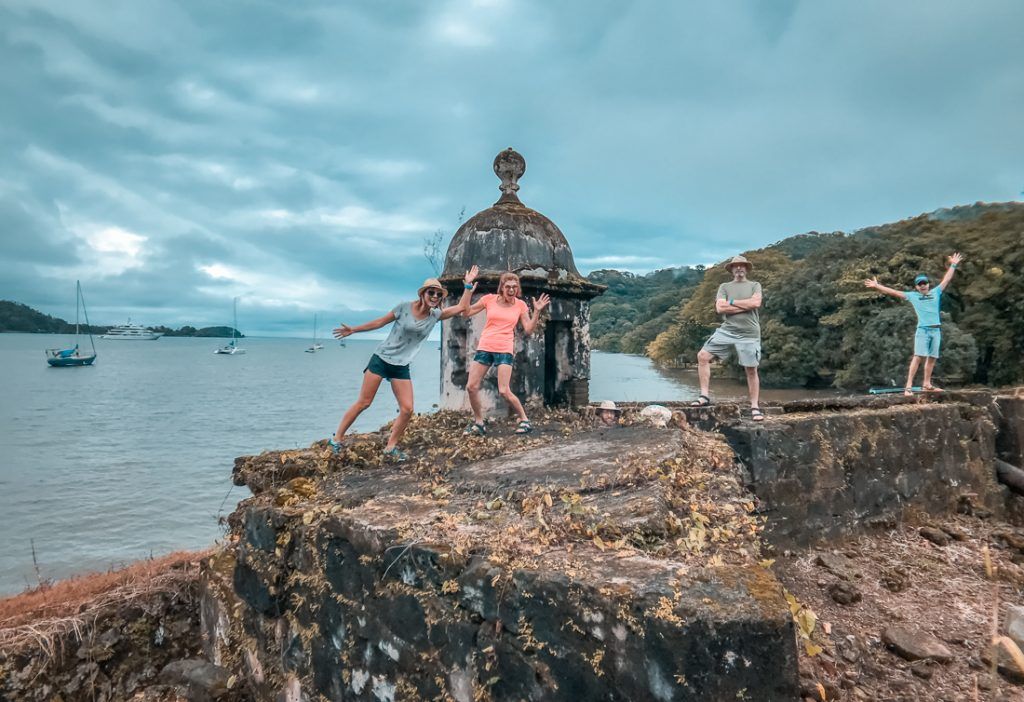
Help Please and Thank You
Before I dive into all the gritty details, I need to ask for your help. We spend an insane amount of time, filming, documenting and creating what you see. Maybe this post will save you $$$ if it gives you the confidence to transit the canal without an agent. If you like our videos and articles, you can help keep the creativity flowing. We’ve listed out all the little (like sharing) and big (join the crew) ways you can help here: gonewiththewynns.com/tip-jar Best part is, most won’t take more than a few seconds of time or cost you a penny. Thank you for being a part of the journey!
Transiting The Panama Canal, No Agent Needed
Tis the season.
The peak season for yachts transiting the canal is January to March. Around three to nine small boats a day go through. Our admeasurer’s advice: Avoid peak season if you can for more undivided attention and less stress. We decided to transit in November. We literally could have sailed in, got measured and transited the next day.
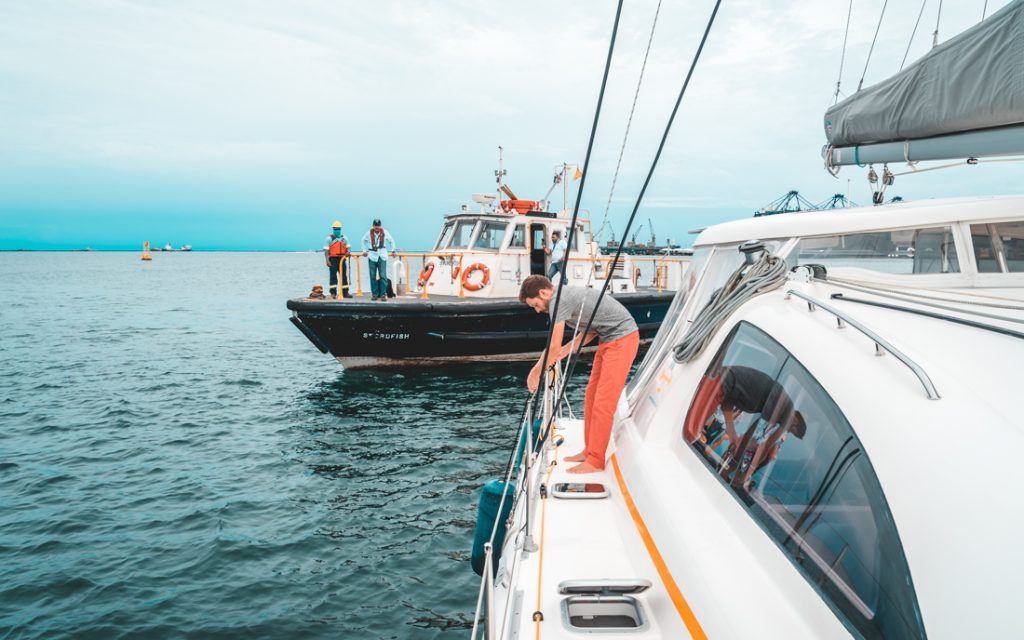
Anchoring vs Marina During Prep For The Transit
The most popular spot seems to be Shelter Bay Marina. Focusing on the transit yacht business, they are the only marina in the area and know the biz, so prices are not cheap. And, everything is a 30-45 minute taxi or bus ride away (at least until the bridge is complete). That said, we’ve heard great things about the owners and no negative feedback.
We prefer being at anchor and the canal has the designated “flats” anchorage that is free. We stayed there for measuring and the night before our transit. We felt totally safe and there was very little traffic at night. Other than the occasional pilot boat wake it’s a calm anchorage. After our canal measurements and prep was complete we sailed back to Linton Bay Anchorage .
If you have boat work to be done before the transit, Linton Bay Marina is only a day sail away, it has a lift and far cheaper slips.
Sailboat Insurance
Boaters insurance is interesting (AKA expensive and complicated). We buy coverage for the areas we plan to travel and read the fine print carefully. As we enter a new country or body of water, we must buy coverage for that area. Insurance prices vary like crazy from boat to boat, sailor to sailor, and of course providers. But, for what it’s worth, we paid an extra $316 to cover us through the canal and add coastal pacific cruising. We will have to re-up again when make the Pacific crossing to French Polynesia.
Want more info on sailboat insurance? Check out this video and post: gonewiththewynns.com/exhausting-journey-buying-cruising-sailboat
Why you might like to have an Agent
Maybe the extra $300-$600 for an agent to manage your transit is in your budget. Maybe you’re in a rush and feel you need the help. Plenty of people we talked to like their agent and enjoyed having them. But in the end, they didn’t do any less prep than we did.
Why You Don’t Need An Agent
The employees of the Panama Canal Authority all speak excellent English. They are professional, organized, helpful and kind. Everything you need to know is outlined clearly in the transit documentation. Not sure about something? Call the phone numbers listed to ask questions. We were blown away by how quickly they answered the phone and how politely they answered all questions. It was all extremely efficient.
Here is the exact document “ form 4352-1 ” with all the instructions and requirements that our admeasurer handed us: http://www.pancanal.com/common/maritime/forms/4352-ENG-201211.pdf
We read a ton of blog posts and cruising guides before making the decision on Panama Canal agents. We also spoke to fellow cruisers who’d completed the transit with and without an agent. It’s overwhelming how much fear mongering there is about the canal transit. In the end you must go with your gut on what’s best for you. From our experience, we can without a doubt say: Transiting the Panama Canal without and agent was easy and 100% “doable” .
What An Agent Does (That You Can Easily Do because it’s lined out in the document above)
- It’s this short, easy to fill out document “ form 4405-1 “: http://www.pancanal.com/common/maritime/forms/4405.pdf
- Once filled out the document gets sent to this email address: [email protected] (for the Atlantic side) or [email protected] (for the Pacific side).
- A quick phone call to: Balboa Admeasurement Office at (507) 272‐4571, or the Cristobal Admeasurement Office at (507) 443‐2293.
- It’s a quick trip to the only Citibank in either town and its listed in the document 4352-1 linked above (although on the Panama City side it says “Niko’s Plaza” but what they mean is next to Niko’s cafe. Ask a cab, or a bus, to take you to Niko’s Cafe Balboa, the Citibank is next door. The phone number for Citi-Balboa listed in the document was incorrect and Google Maps shows multiple listings for Citibank and they’re all the incorrect location…we visited 2 of the wrong listings before finding the actual Citibank in Panama City). There are several ATMs inside Niko’s to get cash (max withdraw was $500).
- An easy phone call made after 6pm on the day you pay the bank: (507) 272‐4202
- Rent 4 lines (125ft) and fenders (AKA – tires wrapped in plastic), to be delivered from Tito +507-6463-5009 (on the Atlantic side) or Roger +507- 6717-6745 (on the Pacific side). If you have lots of fenders you don’t need to rent tires. We only have six fenders and didn’t want to risk any damage to the boat, so we rented 8 tires from Tito. We were told it should be $119 for drop off and collection. Which wasn’t the case, we were expected to pay the guys who dropped them off and picked them up. It was an additional $20 each side. Also the La Playita marina tried to charge us a dinghy dock fee to drop off the lines. We said hell no, called Tito and told him to deal with them. Apparently we could have used our dinghy to meet Tito’s guys and saved the extra fees. So when Tito tells you your fees include pick up and drop off he means on land, he does NOT pay for the boat to bring lines to you at anchor.
- We had family and friends join us but…here is a site for Volunteer Line Handlers (some are fellow sailors wanting to learn the ropes before they transit. It’s also a good site if you want to volunteer): www.panlinehandler.com Many sailors told us having friends or family members on board made the transit much more enjoyable…because there’s a lot of downtime during the canal transit. They were correct!
Extra Tips and Info
Questions we were asked by the Admeasurer
- How fast is your vessel? (Anything over 5 knots will do).
- Do you have a holding tank?
- Do you have shade for the adviser (a bimini of some sort)?
- Do you have a horn?
- What type of engine?
- Which way do your props rotate?
- How much fuel do you carry?
- What’s your Gallons Per Hour (i.e. can you make it through the canal without re-fueling)?
- Do you have AIS (not a requirement in 2017)?
- Do you have working navigation lights?
- Working VHF?
- Do you have the required fenders & lines? (we told him Tito was bringing the day of the transit, he didn’t need to see them)
- Do you have 5 crew lined up to be on board (we told him they were flying in before the transit and didn’t request names or their information).
Our Ad Measurer Informed Us
- We need to provide bottled water and food for our adviser on the day of transit. He does not stay overnight. He will be collected by a pilot boat from Gatun Lake, where we anchor overnight, and join us there again the next morning to complete the trip.
- We asked about food for the adviser because we’ve read horror stories. His answer was basic food served in a clean environment, they’re not necessarily too picky about the food, more of the quality and cleanliness of the meal.
- He warned us that our line handlers must be strong and familiar with tying bowline knots under pressure.
- We asked about stopping at the Smithsonian island on Gatun Lake. He said it’s possible but it must be requested in advance and the Panama Canal Authority will charge an additional fee because we’d be “getting out of line”.
- We asked if not having an agent made more work for him. He said “no”.
- We asked about beer/alcoholic beverages in case the adviser asked for one. He said any canal authority worker on duty should not be drinking.
- We forgot to ask about getting permission to fly a drone while inside the locks and this is something that has to be requested in advance.
Costs To Transit The Panama Canal

Because our Catamaran is 43ft, we fall under the 50ft category. While our total deposit amount paid to the bank was $1875, we did receive our buffer money back for a total of $984 to transit the canal.
Spoiler Alert!
We’re officially on the other side of the Panama Canal and we can honestly say…without a doubt…we made the right decision. The Panama Canal Prep was easy and even fun. We loved going through processes (especially because they run things so smoothly), documenting our experiences and sharing them with all of you. We successfully transited the Panama Canal without an agent. If we did it, you can too!
If you have any thoughts please share in the comments section below. If you have a burning questions please ask! Thanks to each and everyone of you for being a part of the adventure.
Sailing Report
To see our full map with interactive pins, click here: gonewiththewynns.com/map
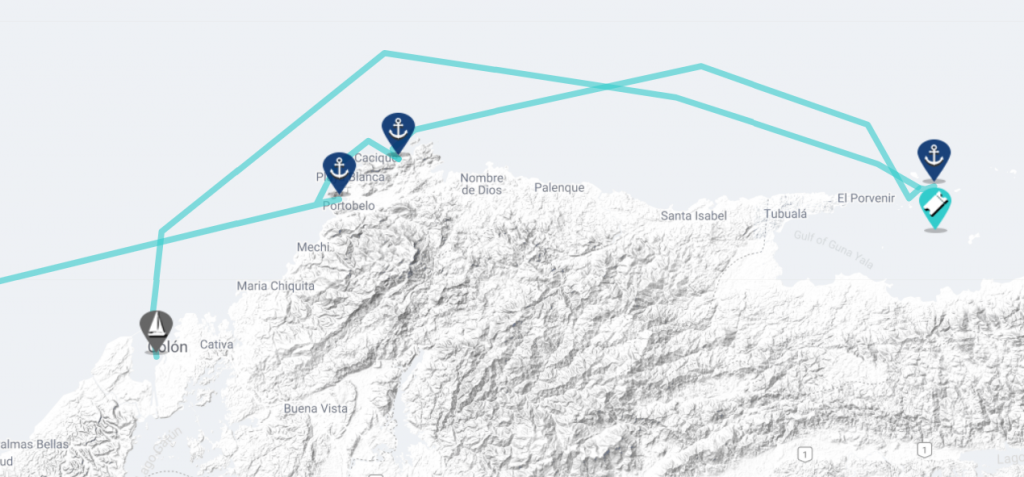
- Dates: 11/14 – 11/27/2017
- Cell & WiFi: We had good cell phone reception here with Clario and MasMovil.
Sailing Specific Gear
- iPad Pro http://amzn.to/2d9Oopf
- iPad Mount at Helm: http://amzn.to/2fT84PG
- iNavx (Chart app we were using to help find the dive site): http://bit.ly/2vGgC51
- Garmin Bluecharts with Active Captain: http://bit.ly/2tgnRmA
- Iridium Go and Predict Wind for weather and communications: bit.ly/PredictWindIridium
- Quatix 5 Watches: https://www.gonewiththewynns.com/product/quatix-5-marine-watch
Cameras Used to Capture This Video
Full Review Of All Our Camera Gear: gonewiththewynns.com/camera-gear-review-2017
- Sony A7ii: com/product/sony-a7ii
- Rode Mic: https://bhpho.to/2hUNFA8
- Sony 24 – 70mm f4 lens: com/product/sony-24-70
- Sony RX (small pocket cam): gonewiththewynns.com/product/productsony-dsc-rx100m-iii-cyber-shot-digital-still-camera
- Gorilla Tripod: http://amzn.to/2A0zwIa
- Olloclip Lenses: http://amzn.to/2AkjQx9
- DJI Mavic Pro: http://amzn.to/2vUFXa6
- Drone Filters: http://bit.ly/sandmarc-mavic
Sailing In Pirate Territory (midnight boarding)
Best sailing apps, sailing when we never thought we could, life at sea: chill mornings in the galley.
MADABOUTPANAMA
- Yacht Transit
- Cruise Transit
- Panama Sights
- Download a PDF
- Transit Blogs
- Book Your Transit
- Pay the Fees
- Admeasurer Inspection
- Transit Procedure
- Lockage Types
- Linehandlers
- ACP Canal Advisors
- What Goes Wrong?
- Sights and Scenery
- Marinas and Anchorages
- Getting Around
- Panama Canal Overview
- How It Works
- Gatun Locks and Lake
- Through the Canal
- Pedro Miguel and Miraflores
- Panama City End
- ACP Ships and Boats
- ACP Equipment
- Sights Along the Canal
- Embera Indian Village
- Boat Trip on the Panama Canal
- Fort San Lorenzo
- Panama Canal Railway
- Bridge of the Americas
- ACP Administration Building
- Amador Causeway
- Old Balboa High School
- Mi Pueblito
- Casco Antiguo
- Panama Viejo
- New Washington Hotel
- Metropolitan Park
- Punta Culebra
- Soberania Park
- Barro Colorado
- Summit Park
- 1930s Panama Canal
- Did You Know?
- Articles and Posts
- Website Links
- Books About Panama
- Local Radio Stations
Transit the Panama Canal
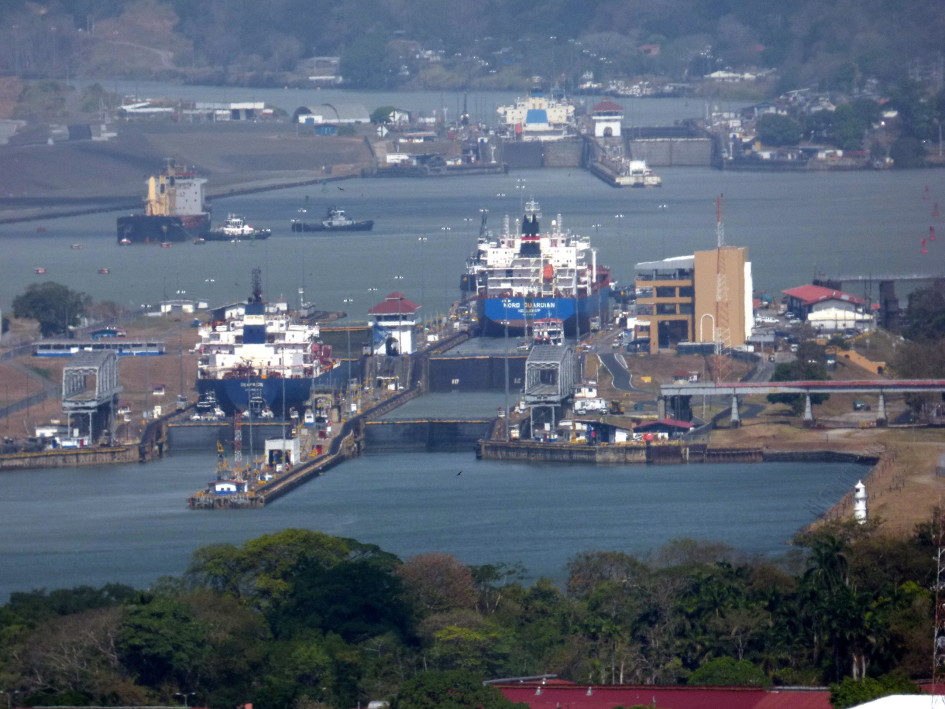
Transiting the Panama Canal, what to see in Panama, and much more…
The original aim of this website was to explain how to Transit the Panama Canal by Yacht .
The project quickly expanded to include what you will see when you Transit the Panama Canal by Cruise Ship , and some of the shore excursions you can make during a port call in Panama
Thing to see and do in Panama can be found in the Panama Sights pages and links.
Of course, the Panama Canal is the main attraction, so you can find an overview of the history , descriptions of how it works , and ways to see the Panama Canal .
We also provide Articles and Posts about Panama and the Canal.
Most of the website information and a lot more is available to Download as a PDF
We have collated the information on this website relevant to transiting a yacht through the Canal, and you can download it here . Just email for an update if you received an older version.
The cruise ship version can also be downloaded here . This ebook has the same information about the Canal and how it works, and then details more than 140 things to look out for while going through the Canal, from sights on the shore, to the various boats and ACP equipment you might see.
A recent testimonial about the yacht guide:
“ Ready for details? They’re all in Mad About Panama’s website and very useful $2.99 ebook. If you read just one guide to prepare, this should be it. “
All about the Panama Canal
- Get an Overview of the Panama Canal
- Find out how the Canal Works
- How to transit on a yacht
- Links to blogs of yacht experiences
- What you will see from a Cruise Ship
- Where you can go on one-day Shore excursions
- Read about our Canal experiences
- Trivia about the Panama Canal
Sightseeing
- How to see the Panama Canal if you are not on a yacht or a cruise
- Panama City : Bridge of the Americas – Amador Causeway – BioMuseum – ACP Administration Building – Ancon Hill – Balboa High School – Balboa – Mi Pueblito
- Colon City – Hotel Washington
- Where to find the Parks & Wildlife : Punta Culebra – Metropolitan Park – Soberania Park – Summit Park – Barro Colorado
- Shopping information
- Getting around Panama
Photographs from our collection
- Wildlife pictures : sloths – Toucans
- Panama Canal – Casco Antiguo – Portobelo
This map shows places that are mentioned in the website:
We are russell stanley and diane osborne.
An Aussie and a Kiwi who now live in Panama, and have helped out as linehandlers on yachts transiting through the Panama Canal. We have an extensive maritime background , and plenty of trips through the Canal , with positive testimonials from the yacht owners.
This website developed out of a love for Panama and the Canal, and we hope to provide information for yacht owners and tourists alike. We welcome inquiries regarding all things Panama, whether you are considering relocating, transiting the Canal or just visiting. Please contact us at [email protected] and we will endeavour to reply as soon as possible .
And don’t forget, you can download a PDF here that contains most of the relevant information about transiting a yacht through the Canal.
Download a PDF containing all of the information on this website and more, for a yacht transit or a cruise ship transit.
Please let us know any comments or suggestions for further content at [email protected]
We would especially like to collect more information from those people who have experienced Canal transits. What you would like to have known before you went, or what you would like us to find out for next time.
Recent Posts
- Happy Birthday Panama Canal
- New Reservoir To Aid Panama Canal
- Panama Canal Shipping Traffic Returning To Normal Numbers
- The Cost of Living in Panama
- Panama Canal Increases Daily Transits
© 2024 Panama Canal Transits and Beyond — Powered by WordPress
Theme by Anders Noren — Up ↑

By SuperyachtNews 25 Jan 2019
Transiting Panama Canal by superyacht
Chief officer daniel khedun of 83m ‘here comes the sun’ provides an instructional account of a recent transit….
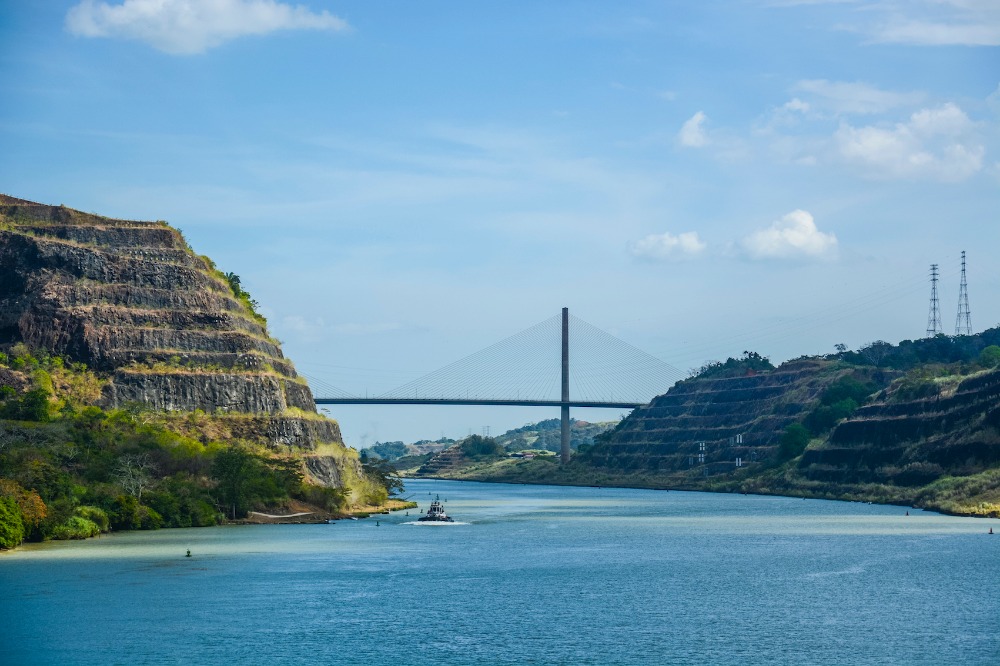
The planning for our east-bound Panama Canal transit began after we were requested to head over to the Caribbean for a Christmas charter, following two months docked within Cabo San Lucas. Being the second transit of Here Comes the Sun ’s short lifetime, the required paperwork submitted to our agent was minimal and very straight forward. It included the list below:
- Captain’s Certificate of Competency;
- Passenger List;
- Last 10 ports of call;
- Stores List;
- Vaccination List (if you have it);
- Maritime Health Declaration;
- Original and copy of last clearance;
- All passport copies;
- Panamanian forms (agent provided template);
- Ship’s Sanitation Certificate.
Our canal agents for this transit, and all our cruising requirements from Cuba through the canal and up to Baja California, were Pacific Bound Yachts. They made the process incredibly simple and were always on hand to answer any queries and requests we may have had. Pacific Bound Yachts sent us our transit time and plan the day before arrival.
From previous experience, we planned for two teams of four crew rotating four hours each on deck, and the captain and chief officer on the bridge. The reason for these numbers will be explained later.
The morning of the transit we approached Flamenco and are directed by Flamenco Signal Station (Ch12) into the explosives anchorage to take fuel (no pilot is required for this anchorage). Our agents, PBY, had organised bunkering with Stward Oil, a yacht-friendly barge and tug. On dropping the anchor, they came by on their small tender to discuss operations. They then brought the 20m barge over with their 40m tug. This is well protected with ‘yacht standard’ fenders. The process is very efficient and bunkering starts as soon as all checks are done. The barge can supply a flow rate of 400 gallons/minute but we started slow. They also provide drone footage free of charge!
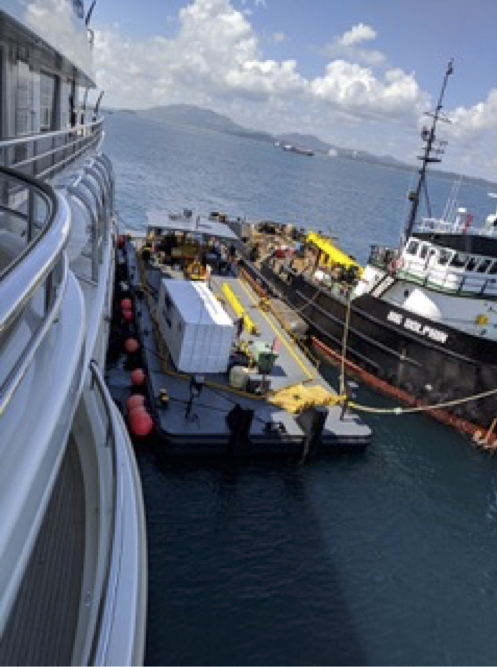
During bunkering we prepared the decks for the transit. Fenders are prepared both sides (as you would when docking side to) and prepare two mooring lines fore and aft, and have a spare line flaked at each mooring station. For yachts, the correct way to prepare lines is called a ‘soft loop’ by the canal authorities. A few turns are put around the cleat with about 10m of line to the eye remaining. Half way along this length we cable tied a heavy-duty chafe guard. The line handlers will put our eye through the loop of the mooring cables and bring the eye back to the yacht’s cleat. This keeps the very ‘commercial’ cable away from the yacht’s stainless steel.
The line handlers use their own heaving lines and like to wrap them around our nicely varnished or stainless-steel capping rails. To avoid this, protection is applied as shown below. Our pilot was also kind enough to give them a stern word not to damage anything!
You can’t have enough drop cloths – protect everything you can. One situated at the pilot boarding gate is a good idea to wipe the handlers’ feet before they put their shoe covers on. We protected the teak with flexi-teak matting down the walkways and blue diamond sheeting on the aft deck. To be honest, compared to a few years ago, they are a lot more considerate so too much protection can be a bit of over kill, and your crew should be supervising all operations anyway. Another tip is to cordon off sections of the vessel that you don’t want people wandering to, like stairwells up to the upper decks.
Here is a deck checklist that we used on the transit;
- Pilot Ladder;
- Four mooring lines (plus four on standby);
- Fenders down both sides;
- Deck protection;
- Paint and capping rail protection near mooring stations;
- Drop cloths (the thick type);
- Boat hooks at each station;
- Cool box full of sodas and chocolate bars;
- Lines for blocking off stairwells;
- Four chafe guards;
- Cable ties;
- Shoe covers.
As well as deck preparations, the interior also prepared the wheelhouse. It is a good idea to have an interior crewmember on duty throughout the passage for any requests the pilots may have. We set up a coffee, tea and water station in the wheelhouse so that they could themselves. We offered a meal at a down time, but they just asked for sandwiches.
During the bunking, the Panama Canal Official boarded to check paperwork and issued a new Panama Canal tonnage certificate. Your Lloyd’s (or other class) certificate is void after the first transit. Also after the first transit, we were given our Panama Canal Identification Number, which we posted this on the wheelhouse. The official stayed in the wheelhouse for about 20 minutes then departed.
We were then ready to begin the transit and the crew took some rest before a long night ahead. Our pilot boarded at 1745, this time with a pilot in training, both of whom were excellent English speakers. After introductions, a good chat and show of mutual respect will work really well in your favour.
After heaving the anchor (leaving both in emergency drop), we headed towards the channel. The pilot boats (or ‘launches’ as they call them) are about 15m long with a 2m freeboard. These are used for both pilots and line handlers. The pilot boat drivers are very skilled and can sit hard on your fenders for as long as they want while they transfer crew. We used two large mooring fenders either side of the ladder.
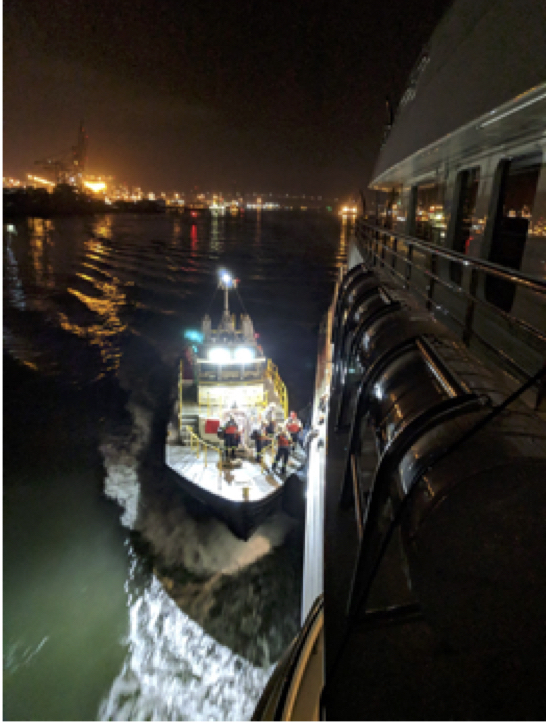
As we passed the first bridge, at 1908 the first group of line handlers embarked – 11 in total. The bosun is escorted to the bridge and hands a radio to the pilot and the crew list to the captain. He is then taken to his station on the foredeck. We positioned two crew fore and two aft so that we could constantly monitor their operations, and escort them to the head when requested.
Just 10 minutes later the first lines were ashore and we received the cable on our starboard bow. The cables were attached to locomotives (or mules) and the yacht ran on its own engines into the lock and within 10 more minutes we were made fast in the middle. Be careful when the shoreside line handlers throw their heaving lines, the monkey’s fists are small but incredibly hard and heavy – there is definitely a hidden bit of lead in there! Get your deckhands to watch though – the way they throw them is a sight – they have targets near the locks where they practice! The mooring lines can come under huge stresses when the water level rises and falls, so your crew should be monitoring at all times.
Each ‘chamber’ of the lock is 1000 feet long so we went in with another vessel. The chamber doors close and water rises. Sea level is 26m below that of Gatun Lake, so between Miraflores lock and Pedro Miguel we must make this up. We figured that this was a perfect opportunity for a drone shot, but unfortunately it is not allowed. We could, however, tell our family and friends to log onto www.pancanal.com and watch us on the webcams in the locks.
This first lock has two chambers, so the cables were slackened, and we moved ahead on engines, with continuous support from the pilot. We were made fast once again, and the process repeated. The doors opened, cables disconnected, and we cleared Miraflores lock at 2026, an hour after entering. Only half an hour later we arrived at the entrance of the Pedro Miguel lock. During this time, the line handlers sat down (they seem to bring their own drop cloths to sit on nowadays) and ferociously make their way through the chocolate bars and cans of Coke.
There is only one chamber here, so after 40 minutes we were free of cables again and made our way into Culebra Cut. Five minutes after leaving the lock, our senior pilot swapped out with another, leaving the trainee on board for the whole transit. Our team of line handlers also disembarked, making sure to fill their pockets with all remaining chocolate and sodas.
We tidied up the decks, restocked, and traversed Culebra Cut, leading into Gatun Lake. This channel and lake exhibit great examples of buoyage and transits/leading lights. You will also catch glimpses of dredgers exhibiting full navigation lights, which is a rare sight on our usual yachting itineraries. This is a good opportunity to get any deck crew in the wheelhouse who want to learn – the pilots welcome it and like to pass on their knowledge.
At midnight we received 11 more line handlers as we approached Gatun Lock. Here, there are three different chambers, lowering us 26m to sea level in stages. We were clear of all cables by 0145 and the line handlers disembarked leaving just the pilots on board for another 20 minutes before we were left to go to our Caribbean destination.
The process will go very smoothly if you prepare correctly. This guide comes from experience and helpful tips from our agents. The behaviour of the line handlers has improved tenfold since the last time I made the transit, only five years ago. They are more experienced working with yachts and have adjusted their procedures accordingly. We also found the pilots to be incredibly helpful, friendly and talkative, making for an enjoyable experience for all parties involved.
Join the discussion
To post comments please Sign in or Register
When commenting please follow our house rules
Click here to become part of The Superyacht Group community, and join us in our mission to make this industry accessible to all, and prosperous for the long-term. We are offering access to the superyacht industry’s most comprehensive and longstanding archive of business-critical information, as well as a comprehensive, real-time superyacht fleet database, for just £10 per month, because we are One Industry with One Mission. Sign up here .
Sign up to the SuperyachtNews Bulletin
Receive unrivalled market intelligence, weekly headlines and the most relevant and insightful journalism directly to your inbox.
Sign up to the SuperyachtNews Bulletin
The superyachtnews app.

Follow us on
Media Pack Request
Please select exactly what you would like to receive from us by ticking the boxes below:
SuperyachtNews.com
Register to comment
Small Ship COSTA RICA & PANAMA CANAL CRUISES
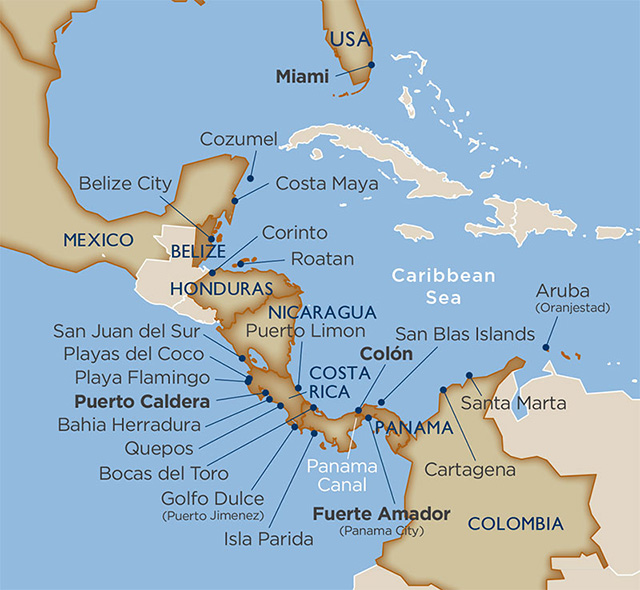
Tropical Islands. Exotic Jungles. The Panama Canal. Experience It All in Private Yacht Style.
Natural and man-made wonders combine in this exotic region where you are an explorer by day with cocktails on the fantail of your boutique ship by night. Costa Rica is one of the most ecologically diverse places on earth over landscapes of rainforest, lakes, cloudforests, volcanoes, and more, boasting an impressive variety of wildlife. Learn more about their history, flora and fauna from a local Naturalist on board, and transit the massive Panama Canal during daylight hours. Against all this color and adventure, your white ship rests at anchor awaiting your return from a delightful day of exploring. Meet your Costa Rican Naturalists!
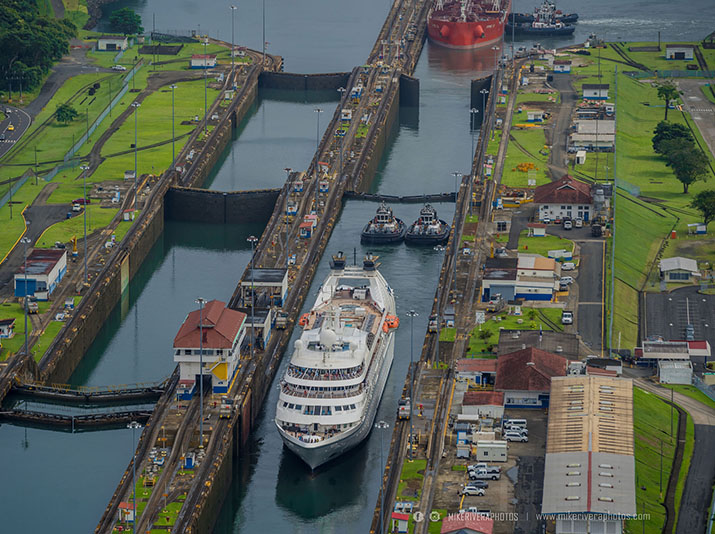
Costa Rica & Panama Canal
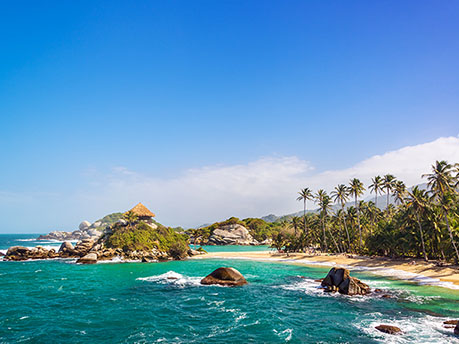
Panama Canal, Cartagena, San Blas Islands & More
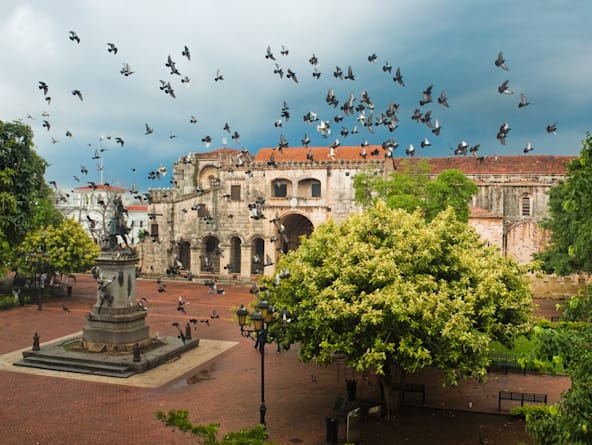
The Spanish Main: Rise of the New World
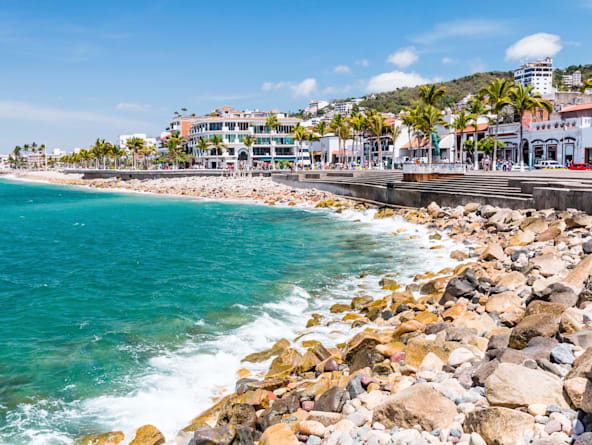
Creatures & Cultures of Costa Rica & Mexico
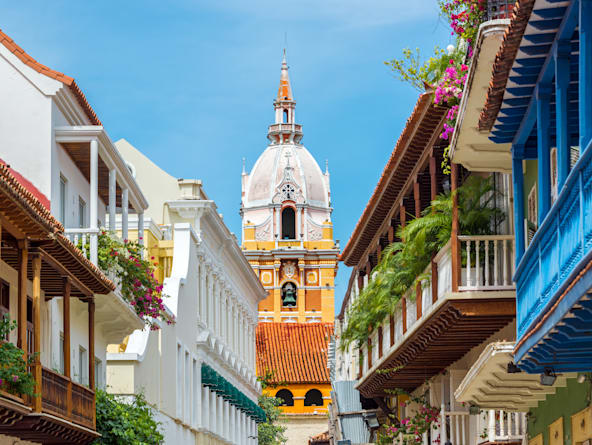
Enchanting Columbia and Panamian Islands
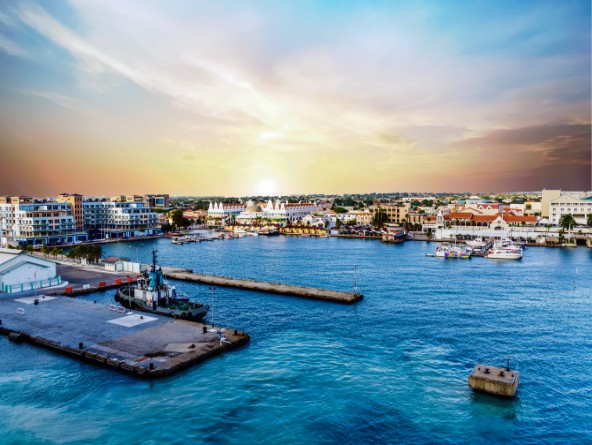
In the Wake of the Spanish Armadas
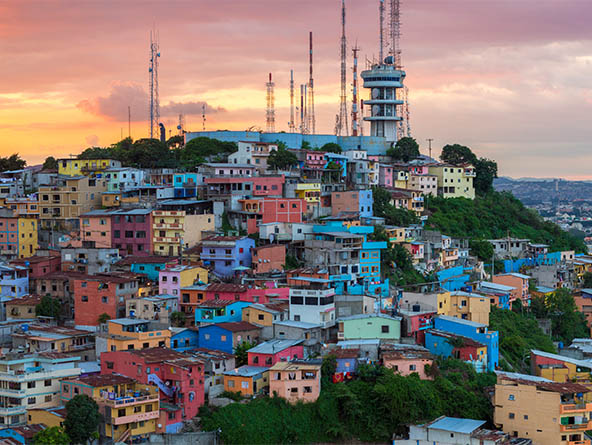
Marvels of Ecuador, Peru, and the Panama Canal
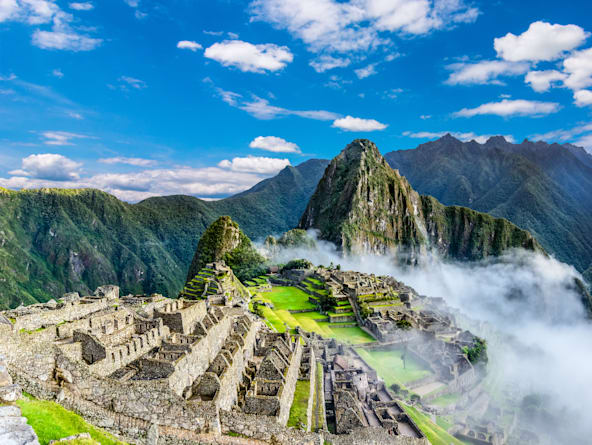
Marvels of Latin America Cruise Tour
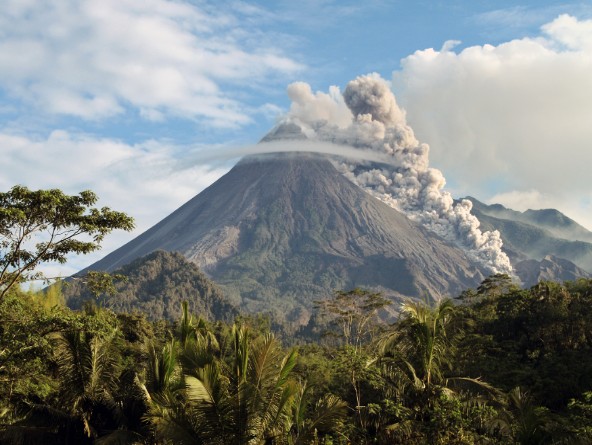
Monteverde Cloud Forest & Arenal Volcano Cruise Tour
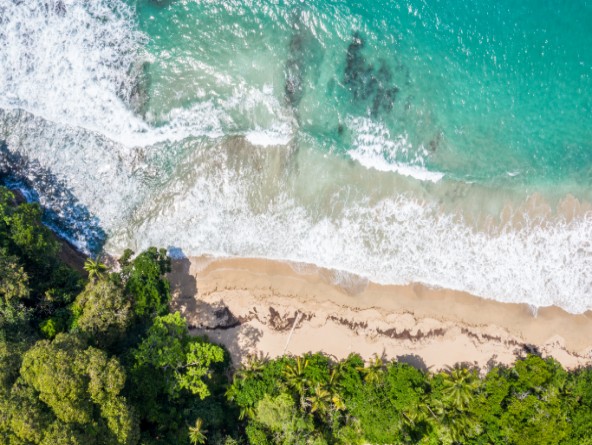
Naturally Costa Rica
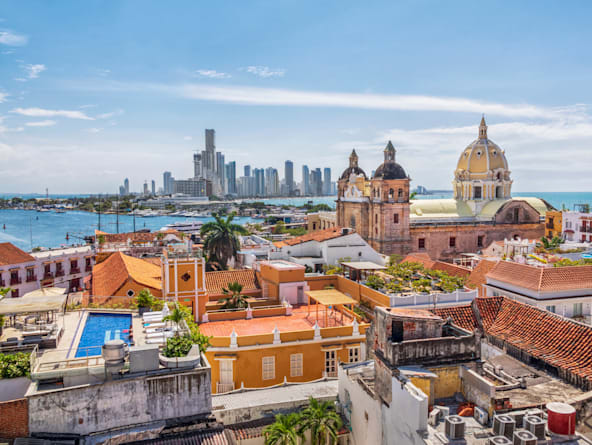
New World Caribbean Trio
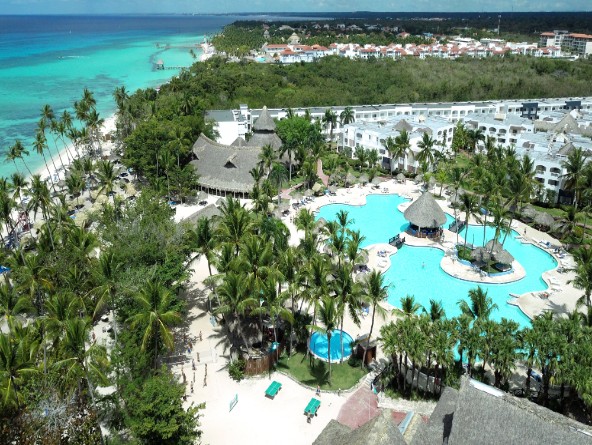
Star Collector: Caribbean Cultures: Latin America & the Greater Antilles
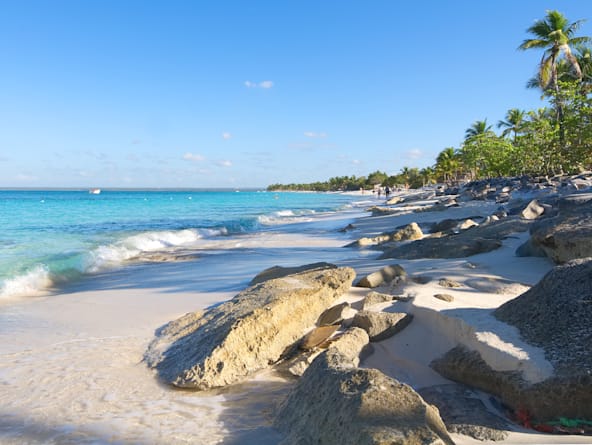
Star Collector: Central American Explorations via the Panama Canal
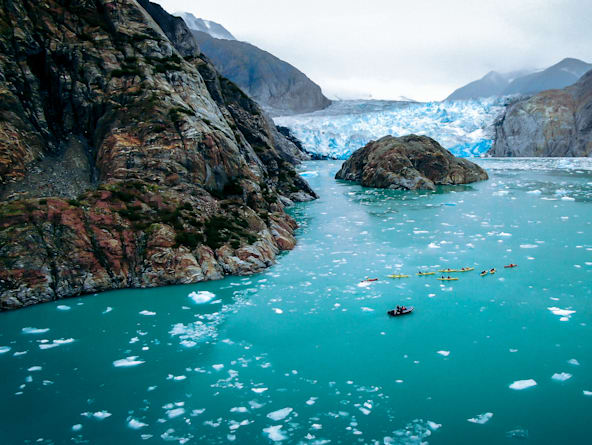
Star Collector: Grand Caribbean & Americas Explorer
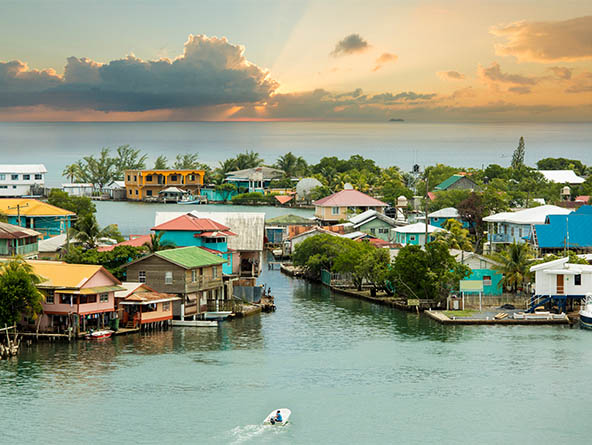
Star Collector: Grand Caribbean Adventure
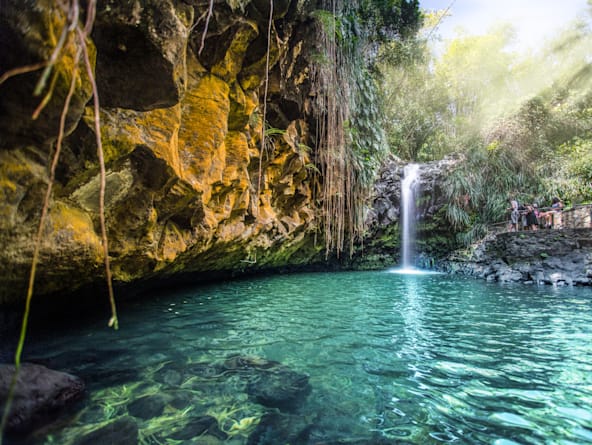
Star Collector: Historic Caribbean: Legendary Islands, Colombia and Panama
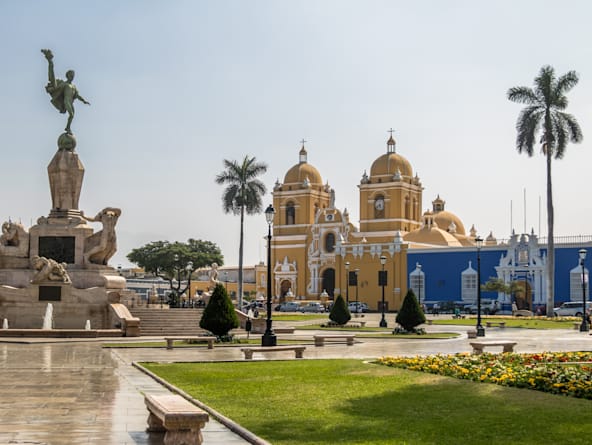
Star Collector: Latin America Explorer via the Panama Canal
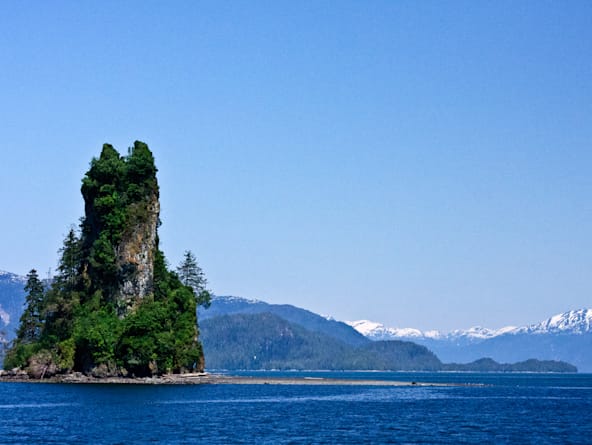
Star Collector: Mayan Monuments & Alaskan Glaciers
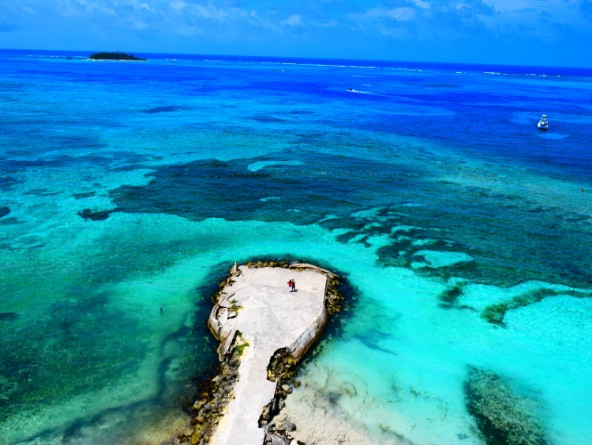
Star Collector: Natural History Meets Ancient Mystery: Latin America & Beyond
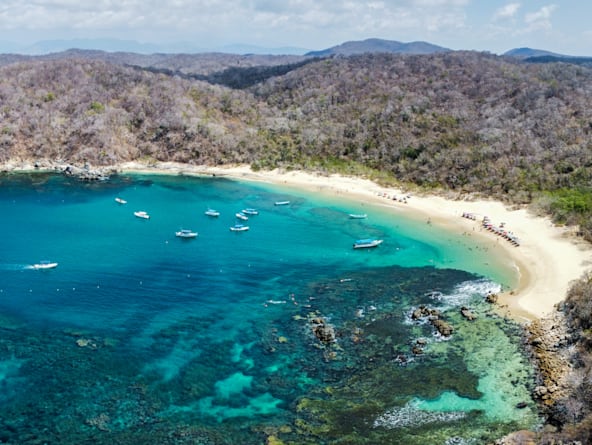
Star Collector: Panama Canal, Costa Rica & Mexican Riviera Discovery
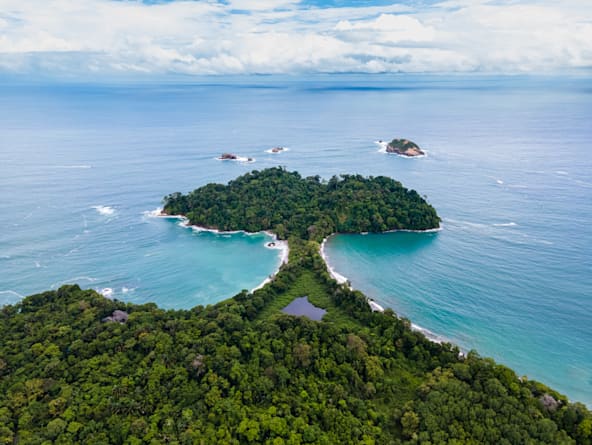
Star Collector: Rainforest Refuges of Panama & Costa Rica via the Panama Canal
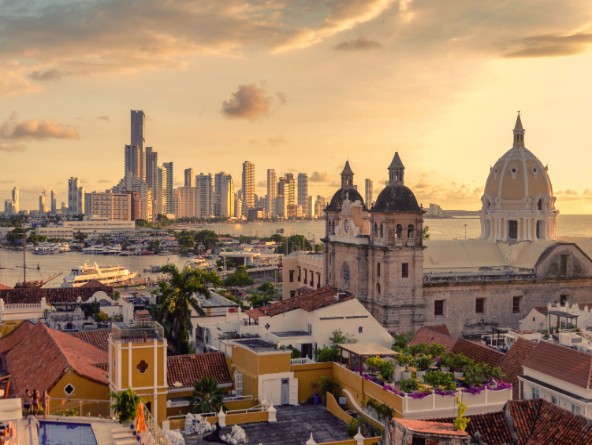
Star Collector: Reefs & Rainforests: The Caribbean, Colombia, Panama & Costa Rica via the Panama Canal
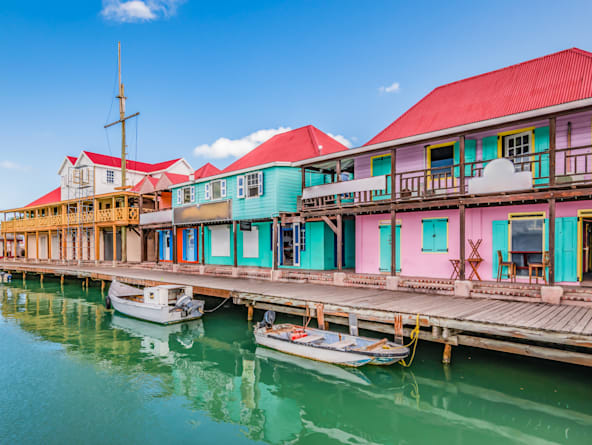
Star Collector: Seeking the Antilles
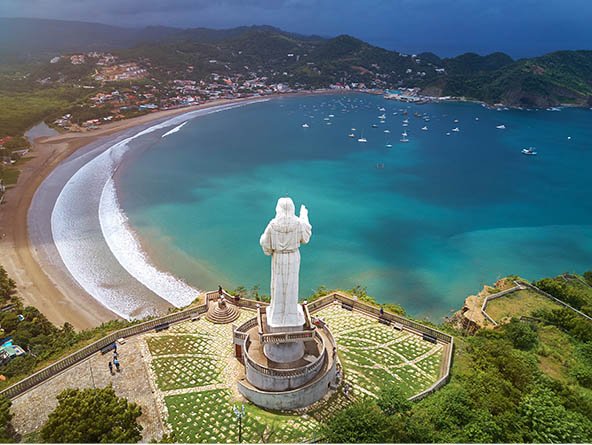
Star Collector: Wild Wonders of the Central America Coasts via the Panama Canal
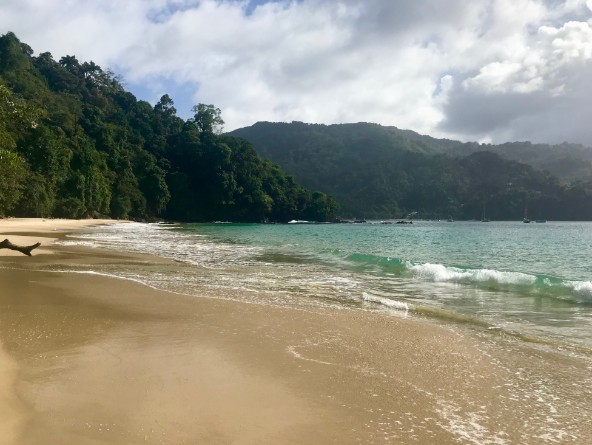
Star Collector: Windward Islands & Spanish New World


The Panama Canal Celebrates 110 Years of Trust and Progress
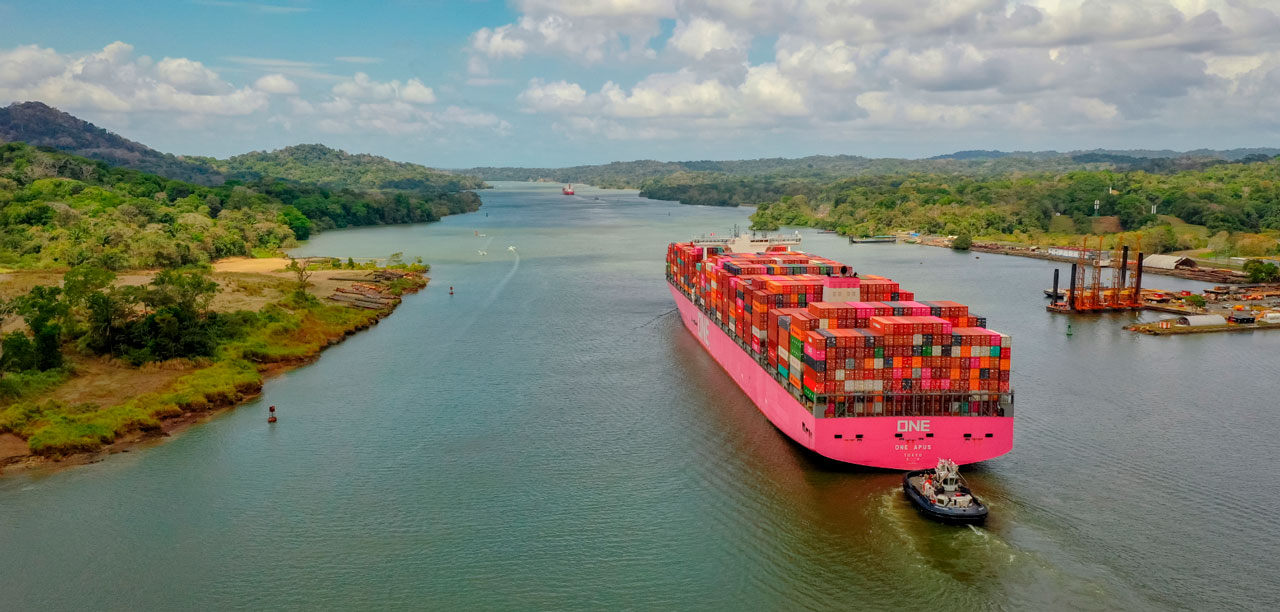
The Panama Canal commemorates 110 years of operations and reaffirms its commitment to the country by guaranteeing the availability of water to supply the population, while at the same time offering its clients 50 feet of draft for vessels and the capacity for 36 daily transits.
This year’s anniversary of the Panama Canal coincides with the historic challenge posed by the prolonged drought that the country faced earlier this year, which was the most severe since the expansion of 2016 and which affected the Gatún and Alhajuela reservoirs with levels rarely seen during the past 110 years.
Despite this challenge, the Canal, thanks to the work and dedication of its workforce, promptly implemented a hydro-operational strategy aimed at optimizing water resource savings, prioritizing, above all, water to supply more than half of the Panamanian population.
Currently, the rainy season is gradually helping the reservoirs recover to water levels more commonly expected for this time of year, while the canal remains focused on improving reliability, efficiency, and responsiveness to the changing needs of the maritime industry.
This has allowed us to announce today through an Advisory to Shipping that, starting August 15 the maximum authorized draft allowed for vessels transiting through the neopanamax locks is 50 feet (15.24 meters), based on the current and projected level of Gatun Lake for the coming weeks. Additionally, it was announced that an additional transit slot will be available for the panamax locks starting September 1, bringing the total number of daily reserved slots to 36, with a distribution of 10 slots for neopanamax vessels and 26 for panamax vessels.
Since its inauguration in 1914, the Panama Canal has taken advantage of its geographical position to serve global trade, which has been optimized by having a route that saves time, distance, and costs for maritime transport of products between different countries, especially after the expansion of its capacity in 2016.
Thus, the interoceanic route currently connects 180 maritime routes that reach 1,920 ports in 170 countries around the world, through which nearly 3% of global maritime trade passes.
Focused on Water Resource Management
The Panama Canal prioritizes guaranteeing the necessary water to supply the population and has implemented measures to confront climate change and population growth.
The recent decision of the Panama Supreme Court reinstates the validity of Law 44 of August 31, 1999, “…which approves the boundaries of the Panama Canal Watershed….,” reinforces the canal’s commitment to the care of water sources, sustainable development, and the improvement of living conditions of the communities. It is important to note that this territory has always been, and will continue to be, the property of those who occupy it, whether they have property titles or possession rights, as is the case in the rest of the watershed.
The Canal is aware that the most important task is to ensure that Panamanians have drinking water, and to this end, we are considering the construction of a multipurpose reservoir to compensate for the amount of water extracted from the canal’s reservoir system to supply the population.
According to the Panama Canal Administrator, Ricaurte Vásquez Morales, “In Panama, we have a high dependence on rainfall, and it is necessary to increase storage capacity to ensure drinking water and transit water. In the operation of the canal, including the third set of locks, we use the volume of water that was forecast for that purpose, whereas the consumption of the population increases permanently.”
The construction of a reservoir in the Indio River basin has been confirmed as the most viable option for the development of a technically endorsed project that will meet future water demands for human consumption. However, before undertaking any initiative, the needs and concerns of those living in that region must be addressed.
The Indio River reservoir is a man-made project that aims to improve the living conditions of communities while allowing us to ensure water for Panama for the next 50 years.
Maintenance is Key
One of the keys to the canal’s sustainability lies in its maintenance. The centenary locks, which saw the SS Ancon on its inaugural transit, continue to function thanks to a robust multi-year maintenance program on all its structures.
The Panama Canal fulfills its commitment to the country and its clients by carrying out rigorous preventive maintenance programs on both the locks and the Gatún, Madden, and Miraflores dams, as well as on floating and land-based equipment, and along the navigation channel. In the last five years alone, it has invested more than B/.2,000 million in maintenance.
For the fiscal year 2024 budget, more than B/.500 million have been allocated to attend to the centenary panamax locks, as well as the modern neopanamax locks.
Moreover, it conducts exhaustive evaluations of the conditions of its infrastructure, especially the oldest, to define the short, medium, and long-term maintenance needs.
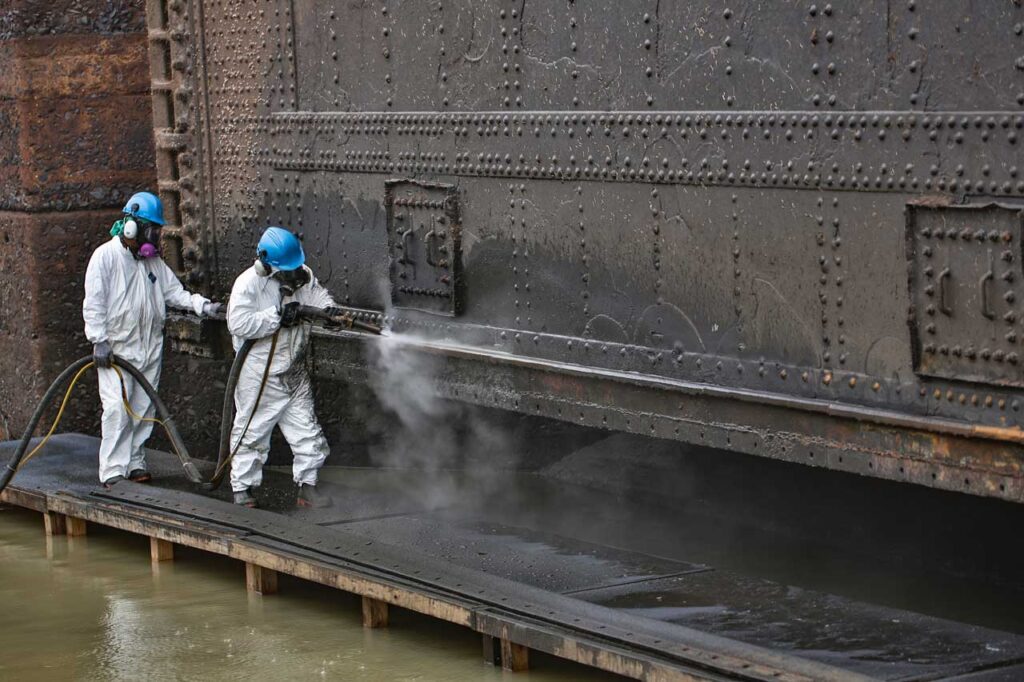
It is worth noting that the most important asset of the canal is its workforce, which, with its knowledge and experience in the administration, operation, and maintenance of the waterway, contributes daily to ensuring the canal’s sustainability and competitiveness.
Committed to the Environment and Sustainability
The Panama Canal also has an environmental responsibility to the country: the protection of the watershed to ensure the availability in volume and quality of water for human consumption and its operation.
The recent ruling of the Supreme Court of Justice of Panama ( la Corte Suprema de Justicia de Panamá ) reinstated the validity of Law 44 of 1999, which expands the boundaries of the Watershed to include 552,000 additional hectares, compared to the 300,000 that were managed before the ruling.
Additionally, over the past 25 years, while in Panamanian hands, the canal has developed a responsible model for the management, maintenance, and human administration of the watershed under its responsibility.
A crucial aspect of this management is the human development that the watershed communities have experienced. The canal’s model allows for the management of this territory by integrating the various factors present in the watershed, with the support of producers and community organizations.
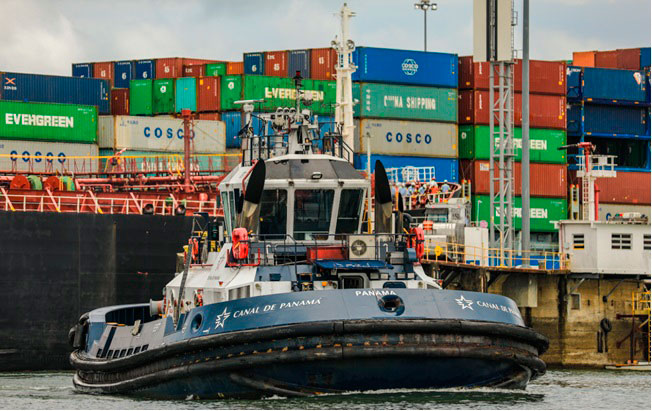
Thus, the Panama Canal celebrates 110 years of operation, and the date allows for reflection on its future, the challenges ahead, and the need for us, as a country, to work together on continuous improvements that will enable us to ensure the sustainability of the route for the benefit of global trade and all Panamanians.
You may also like
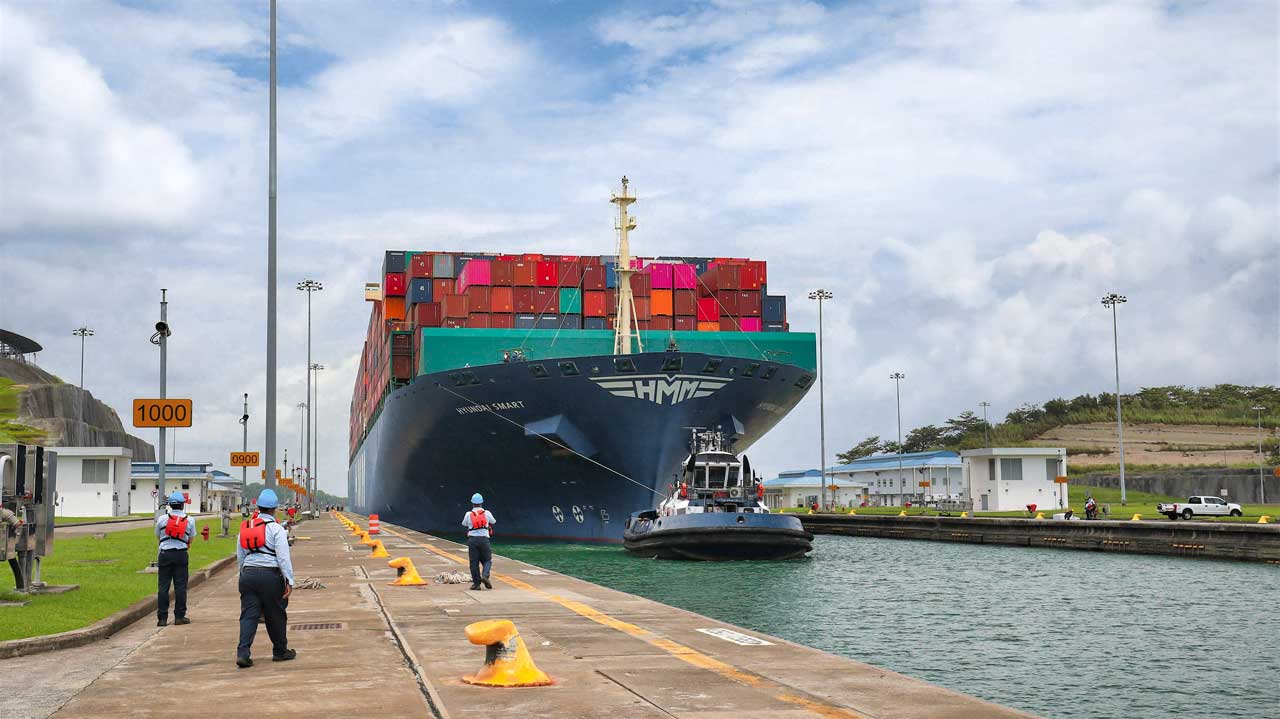
Panama Canal Authority. Administration Building. Balboa, Ancon. Republic of Panama.
Web Cameras
Visit the Panama Canal
El Faro Magazine
About The Canal
How it Works
International Agreements
Maritime Services
Advisory to Shipping
Marine Tariffs
Internal Portal
Terms of Use
Privacy Policies
© 2024. Panama Canal Authority.
Carnival reveals plans for unusual new Panama Canal cruises

Cruise giant Carnival is about to add a new routing to its lineup of Panama Canal cruises — one that no line has ever offered before.
Scheduled to kick off in 2026, the one-way sailings through the iconic waterway will begin in Mobile, Alabama, and end in Seattle, or vice versa.
It'll be the first time that Carnival or any other line has offered sailings connecting the two cities, which are both cruise hubs.
For now, Carnival plans just two voyages on the new routing, both on the 2,124-passenger Carnival Spirit.
Both of the sailings will be just over two weeks long — far longer than most Carnival sailings. The first of the two voyages will start April 12, 2026, in Mobile and end 16 days later in Seattle. The second of the voyages will begin Oct. 8, 2026, in Seattle and end 16 days later in Mobile.
In addition to a transit through the Panama Canal, both of the sailings will include stops at Cabo San Lucas, Mexico; Puntarenas, Costa Rica; and Cartagena, Colombia.
The voyages will take place as Carnival Spirit temporarily repositions from Mobile to Seattle for a summer season of cruises to Alaska .
Carnival Spirit is one of two ships that Carnival plans to deploy to Seattle in 2026 for sailings to Alaska.
Related: The 8 classes of Carnival Cruise Line cruise ships, explained
Carnival this week said the 2,124-passenger Carnival Miracle will also sail to Alaska out of Seattle in 2026.
Carnival Miracle will reposition to Seattle for the 2026 Alaska season from Tampa with a 16-day repositioning cruise through the Panama Canal. As is the case with Carnival Spirit's Panama Canal itineraries, it'll feature stops at Cabo San Lucas, Puntarenas and Cartagena.
After a summer of sailings to Alaska out of Seattle, Carnival Miracle will reposition to Galveston, Texas, with another 16-day cruise through the Panama Canal that stops at Cabo San Lucas, Puntarenas and Cartagena.
The latter trip will begin in Seattle on Sept. 26, 2026.
When based in Seattle, Carnival Miracle will mostly sail seven-day Alaska sailings that depart every Thursday. They'll bring visits to Tracy Arm Fjord for glacier viewing and the Alaskan towns of Skagway, Juneau and Ketchikan. There also will be a stop at Victoria in British Columbia.
Related: The 6 best Alaska cruise shore excursions — from heli-hiking to whale watching
Additionally, Carnival Miracle will offer two longer Alaska sailings: a nine-day trip that adds a visit to Sitka, Alaska, and a 10-day trip that adds a stop at Icy Strait Point, Alaska.
Carnival Spirit will offer a similar seven-night itinerary to Alaska as Carnival Miracle when based in Seattle.
Carnival Spirit also will operate a single 15-day voyage out of Seattle to Hawaii. Beginning Sept. 23, 2026, the voyage will bring calls at Honolulu on Oahu, Nawiliwili on Kauai, Kahului on Maui and Hilo on Hawaii Island, as well as a visit to Victoria, British Columbia.
Planning a cruise? Start with these stories:
- The 5 most desirable cabin locations on any cruise ship
- A beginners guide to picking a cruise line
- The 8 worst cabin locations on any cruise ship
- The ultimate guide to what to pack for a cruise
- A quick guide to the most popular cruise lines
- 21 tips and tricks that will make your cruise go smoothly
- Top ways cruisers waste money
- The ultimate guide to choosing a cruise ship cabin
I had the most luxurious stay of my life in Panama. Now, I want every tropical vacation to include a private island.
- I spent three nights on Isla Palenque, a five-star private island resort in Panama.
- As I dined on three-course meals and enveloped myself in nature, I discovered true relaxation.
- It was a trip unlike any other, and I now want to add private islands to every vacation.

As I pushed open the passenger door and stepped out of the air-conditioned Toyota Fortuner, my senses were immediately overwhelmed.
Humidity clung to the back of my neck. The sweet scent of nearby tropical flowers filled my nostrils. The faintest bit of sea salt coated my tongue, and the sound of crashing waves was closer than I imagined.
In front of me was a sign for casita seven, my home for the next three nights at Isla Palenque , a five-star island resort off the coast of Panama.
As I walked the sandy path to the casita's entrance, the thatched structure came into view for the first time. Every other sense — the saltwater, flowers, and nearby tropical birds — vanished.
In front of me was a stunning one-bedroom building. Daniela, one of the island's concierge representatives, said the inspiration was a coconut with its brown roof and bright white exterior.
It was the most extravagant version of a coconut I've ever seen.
Daniela gave me a quick tour of the property's amenities. There was a small tub to rinse off my sandy feet, a mini bar with complimentary snacks, two outdoor showers, and all-natural soaps.
Meanwhile, my focus was still on the sight of the casita. It was easily the most captivating place I've stayed.
Off the coast of Panama sits the 400-acre private island
I woke up bright and early on a Sunday in April, waiting for a driver to cart me away from the lush valley of Boquete, Panama , and bring me to the Pacific coast for a three-night stay at Isla Palenque.
Related stories
To get to the resort, visitors hop on a 15-minute boat ride. As my driver, Carlos, said goodbye, Francis, the resort's lead naturalist guide, welcomed me onto the boat.
As we traveled through the Gulf of Chiriquí, Francis noted where dolphins are often spotted, shared the names of nearby islands, and chatted about the morning weather.
Then, he pointed to our destination, a long wooden dock. No other structures were in sight, an intentional decision to blend the resort's buildings with the surrounding jungle. After walking the dock, Francis and I hopped into a parked car and headed to my casita.
Isla Palenque is home to eight casitas and one six-bedroom villa. During low season, a night in a casita starts at $512, including meals, non-alcoholic drinks, boat transfers, outdoor gear, yoga classes, and daily excursions.
Every part of the property was a purposeful choice made by Benjamin Loomis, the property's architect and developer, who spent five years living on Isla Palenque before turning it into a resort.
The casitas were built at the jungle's edge. Steps away is a private beach, shared by a maximum of 32 guests at a time. Along with the beach, there's a communal area with a pool, a splattering of shaded day beds, and Las Rocas Restaurant and Bar, a thatched pavilion where meals and drinks are served.
There's a list of daily excursions, ranging from night walks to snorkeling to in-room massages to rum tastings, some of which have additional costs.
Nature is Isla Palenque's main draw. Guests have access to seven private beaches, or they can head into the jungle, where there's an abundance of winding trails. During my stay, I spotted green iguanas sunbathing on the beach, and howler monkeys joined me at the pool each afternoon.
There's no TV in your casita. The focus, no matter where you are on the island, is connecting with the outdoors.
I took that to heart during my first night when a storm barrelled in. I turned off the whirl of the AC unit and opened the casita's glass doors. It was like being inside a white noise machine, listening to the sounds of the ocean and rain.
The next day, I woke up and walked down the beach for breakfast. Across the resort's website, I read references to "barefoot luxury," which I assumed was an advertising ploy.
I quickly learned the phrase was accurate. A beach connects each casita to the pool and dining area. Besides hikes in the jungle, I didn't wear shoes during the entirety of my stay.
While nature can often be associated with "roughing it," that's far from the case on Isla Palenque. The rooms oozed comfort and luxury — the bed was practically a cloud, a fridge held cold refreshments, and with a simple message, I could have someone at my casita running me a bath in a large outdoor tub.
Outside my casita, everything was taken care of. I dined on three-course meals, towels were brought to me at the pool, and evening yoga classes ended with fresh watermelon juice. One day was spent on a snorkeling excursion that concluded with a picnic on a private beach, a highlight of the trip.
Beyond luxury and nature, sustainability was a the forefront of Isla Palenque. There's no plastic in sight. Some food is grown on the island, and the rest is sourced from local fishermen and farmers.
Even the furniture in my casita was built using materials from the island, and the hot water during my outdoor shower was heated using solar panels.
I'm now convinced private islands lead to ultimate relaxation
I had pangs of guilt a few days before my trip to Isla Palenque as I swam laps at Sofitel Legend's infinity pool . I was at another stunning property, and I wanted to take advantage of space, but I also had all of Panama City to explore.
If I had stayed any longer in the warm water, I would've been late for my dinner reservation at Intimo Restaurante , one of the city's top restaurants.
I spent my dinner brainstorming how I would squeeze in a tour of the Panama Canal. I debated if I had enough time to visit the Biomuseo, a popular museum exploring Panama's natural history.
On Isla Palenque, there was no guilt. When I grabbed a book and sat in the pool one afternoon, I wasn't worried about missing a good restaurant or skipping a historic tour — experiencing the island was my only focus.
My schedule was just that, my own time to designate how I wanted. So when my eyes glazed over the pages, I hopped out and adventured off on a paddleboard.
Rarely do I feel relaxed when visiting a new destination. Instead, there's a thrilling pressure to maximize time and squeeze in as much as possible.
While that feeling and those trips often lead to memorable experiences, Isla Palenque taught me that vacationing on a private island is an ideal way to relax.
Plus, I left with more appreciation for Panama. I explored the island's ancient, pre-Columbian history, connected and conversed with the property's staff, and fully soaked in the breathtaking nature that surrounded me.
When my three nights were over, I hopped back on the boat to head home, relaxed, re-energized, and ready to find another private island for my next trip.
Watch: Vanishing island forces hundreds of Indigenous families to abandon homes
- Main content

COMMENTS
It is a surreal situation to find yourself floating in a small yacht alongside a giant ship in a box of water 25m above sea level. Entering the canal was thrilling, stressful, and awkward ...
Fees for smaller vessels transiting the canal were raised in January 2020, meaning that post-pandemic costs for yachts which have delayed their entry to the South Pacific can be double those who ...
There are lots of Sights and Scenery as you pass through the Canal. Some are described in this website, but there are a lot more in the Cruise version of the document. The ACP website has a page with the forms you will need: ACP 4352 - Procedures for Securing a Handline Transit of the Panama Canal. ACP 4405 - Necessary Information to Create ...
The Panama Canal is a gem to treasure. Considering the alternative routes, the canal is a blink between oceans. Yet a smooth transit benefits from advance planning. Our research began about three months in advance after we learned how seasonal congestion can increase the waiting time from arrival in Colón to an assigned transit date.
Update on PANAMA CANAL TRANSIT SITUATION (EL NIÑO PHENOMENON) from Associated Yacht Services: Effective July 30th 2023, due to low water levels at Gatun Lake resulting from the ongoing El Niño phenomenon, the Canal Authority is only transiting an average of 32 vessels per day until Sept 2024.
The costs (all US$) to transit the Panama Canal in a yacht less than 65 feet will typically be: $1760 as of Jan 1, 2023 (Refer below) $75 TVI (Transit Vessel Inspection) $165 Security Charge. $1060 Buffer (if no agent - returned when all goes well) Around $100 for Lines and Fenders. Around $40 transport costs for volunteer linehandlers.
How to transit the Panama Canal in your yacht - preparation, costs, top tips and more from Behan Gifford for a smooth crossing from the Atlantic to the Pacific Ocean Cape Horn sailors and ditch diggers sacrificed all to make the path between the Atlantic and Pacific easier for the rest of us. It is a surreal situation to find yourself ...
A Pacific-bound catamaran's Panama Canal voyage nears its end as it motors through the Miraflores Locks. hanohikirf / Alamy Stock Photo I scrambled out of the dinghy onto Minh's transom steps as a last-minute addition to the crew, the required fourth line handler needed for a transit of the Panama Canal.The French-flagged 41-foot Fountaine Pajot catamaran was weighing anchor in the Flats ...
This is, of course, a hub of sailors doing the Panama Canal transit. It's certainly a very suitable place to organize everything including getting the permits, picking up a crew, and making your plans. Vessel Requirements. This is probably the most important thing if you want to transit through the Panama Canal: knowing the vessel requirements.
Panama, hidden gem for Superyachts. "The Panama Canal is geographically well positioned, enabling yachts to reposition between the Pacific and Atlantic oceans in about 12 hours, but it is much more than merely a logistical pathway.". Joe Walden, CEO, Norton Lilly International (Panama) Much more than just a transit point between two great ...
We figured to get through the canal fast to leave the boat in Panama City and return the U.S. for our first holidays stateside since leaving to cruise, and had friends flying in to transit with us. The ruins of Fort San Lorenzo, on the Caribbean side near Shelter Bay. Panama has some delightful cruising on the Caribbean side and the Pacific side.
PANAMA CANAL TRANSIT TOUR. Partial transit through the Panama Canal begins with entry into the Miraflores Locks, where our ship starts an ascent of 18 meters in two stages, leaving behind the waters of the Pacific Ocean. Next, we enter the Miraflores Lake, a small oasis of fresh water that separates the two locks on the Pacific side of the Canal.
The procedures for making a transit through the Panama Canal are as follows: Southbound transits. The ACP will give you a time to be ready at The Flats, commonly around 15:00 ... call Cristobal Signal Station to announce your arrival and that you are awaiting on your Canal Advisor. One yacht called from Colon Yacht Club and was sent outside the ...
Agent service Fee 350.00. Cruising permit 235.00. Line handlers for transit $100 each (1 captain + 4 line handlers over 18 years old) Landing equipment and line handlers after transit at the Balboa yacht club $12. All prices are in USD (Panama $ is tied to US) and cost us, with our Panama Posse discount, $2,275.
Do you dream of transiting the Panama Canal one day with your own sailboat? Wonder what's involved and what it costs? Then this video is for you! In Part 1, ...
Fun Facts About The Canal. The most expensive trip through the Panama Canal: Norwegian Pearl 375,600 USD. The Cheapest trip through the Panama Canal: 0.36 USD Mr. Haliburton, swimming. The Largest vessel to transit the Panama Canal: Neopanamax Triton, 168 feet wide, 1,211 feet long. Gabo.
www.halcyonyachts.comDuring the yacht delivery of a Cheoy Lee 63 from the UK to San Diego, we transited the Panama Canal. The Panama Canal is 43 Nautical Mil...
Planning to Sail the Panama Canal on Your Boat Shelter Bay Marina. Shelter Bay Marina is definitely the hub of yachties doing the canal transit. It's a convenient place to get work done, pick up crew, and make your plans. ... There is a really interesting article titled Shipwrecked on a Panama Canal Transit, written by Carolyn Lambert. As ...
Take on Cape Horn or transit the Panama Canal. Making the decision to transit the canal was easy. ... Focusing on the transit yacht business, they are the only marina in the area and know the biz, so prices are not cheap. And, everything is a 30-45 minute taxi or bus ride away (at least until the bridge is complete). That said, we've heard ...
Panama Canal Partial Transit: Pros and Cons. Partial transits, tend to be shorter than full transits at 10 or 11 nights in length. Because they are round trip cruises, you can book round trip ...
Transiting the Panama Canal, what to see in Panama, and much more… The original aim of this website was to explain how to Transit the Panama Canal by Yacht.. The project quickly expanded to include what you will see when you Transit the Panama Canal by Cruise Ship, and some of the shore excursions you can make during a port call in Panama. Thing to see and do in Panama can be found in the ...
The planning for our east-bound Panama Canal transit began after we were requested to head over to the Caribbean for a Christmas charter, following two months docked within Cabo San Lucas. ... had organised bunkering with Stward Oil, a yacht-friendly barge and tug. On dropping the anchor, they came by on their small tender to discuss operations ...
10 Hours - In the Panama Canal [Full Transit] boat tourwe will sail from the Pacific Ocean to the Atlantic Ocean in the same day, visiting the lakes, the jungle and the 3 locks: Miraflores, Pedro Miguel and Gatún. The best boat ride through the Panama Canal. Flamenco Marina, Flamenco, Panama City. 15 pers. max.
The Panama Canal. Experience It All in Private Yacht Style. ... Learn more about their history, flora and fauna from a local Naturalist on board, and transit the massive Panama Canal during daylight hours. Against all this color and adventure, your white ship rests at anchor awaiting your return from a delightful day of exploring. ...
The Panama Canal commemorates 110 years of operations and reaffirms its commitment to the country by guaranteeing the availability of water to supply the population, while at the same time offering its clients 50 feet of draft for vessels and the capacity for 36 daily transits.
In addition to a transit through the Panama Canal, both of the sailings will include stops at Cabo San Lucas, Mexico; Puntarenas, Costa Rica; and Cartagena, Colombia. ... Texas, with another 16-day cruise through the Panama Canal that stops at Cabo San Lucas, Puntarenas and Cartagena. The latter trip will begin in Seattle on Sept. 26, 2026.
To get to the resort, visitors hop on a 15-minute boat ride. As my driver, Carlos, said goodbye, Francis, the resort's lead naturalist guide, welcomed me onto the boat.